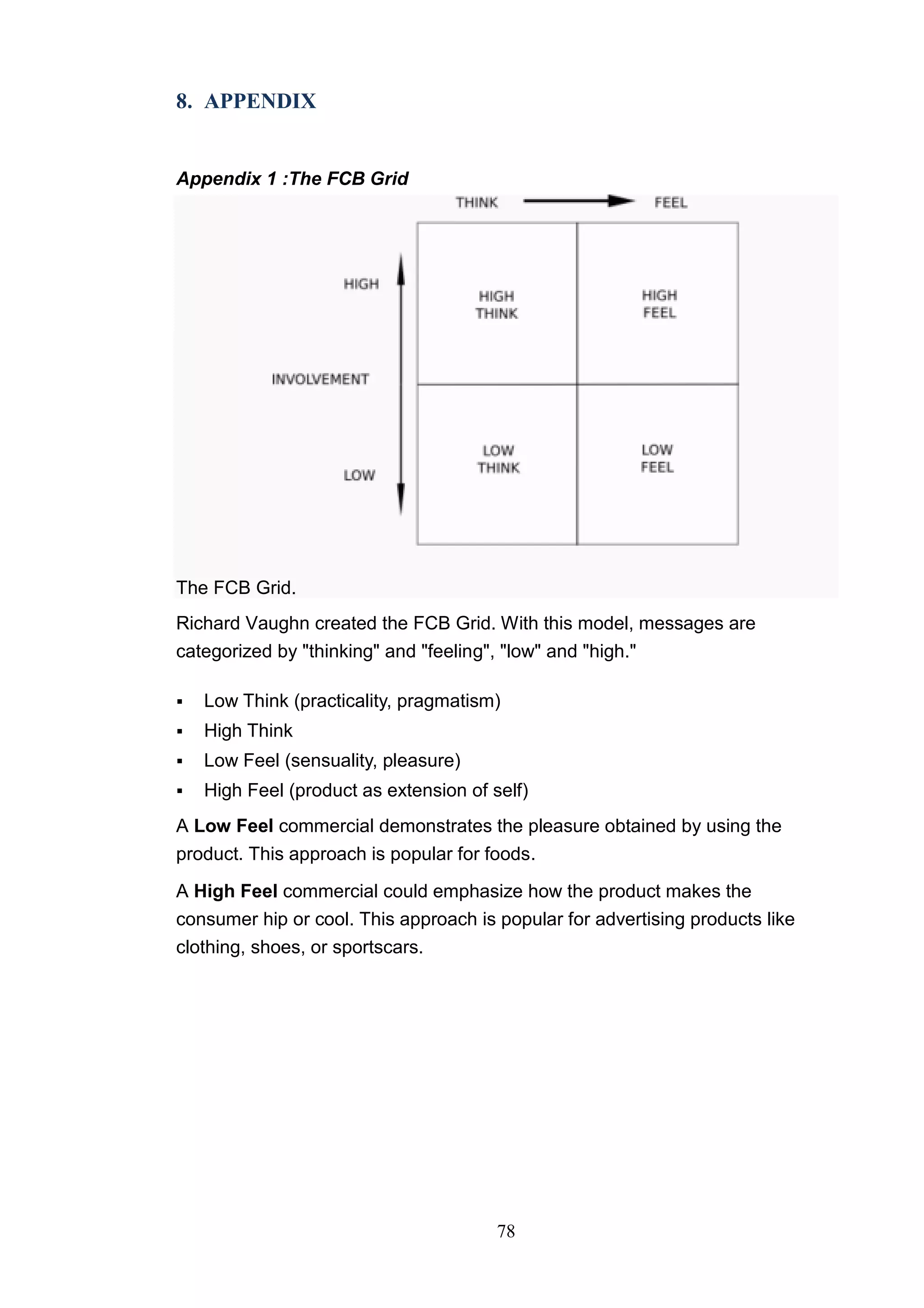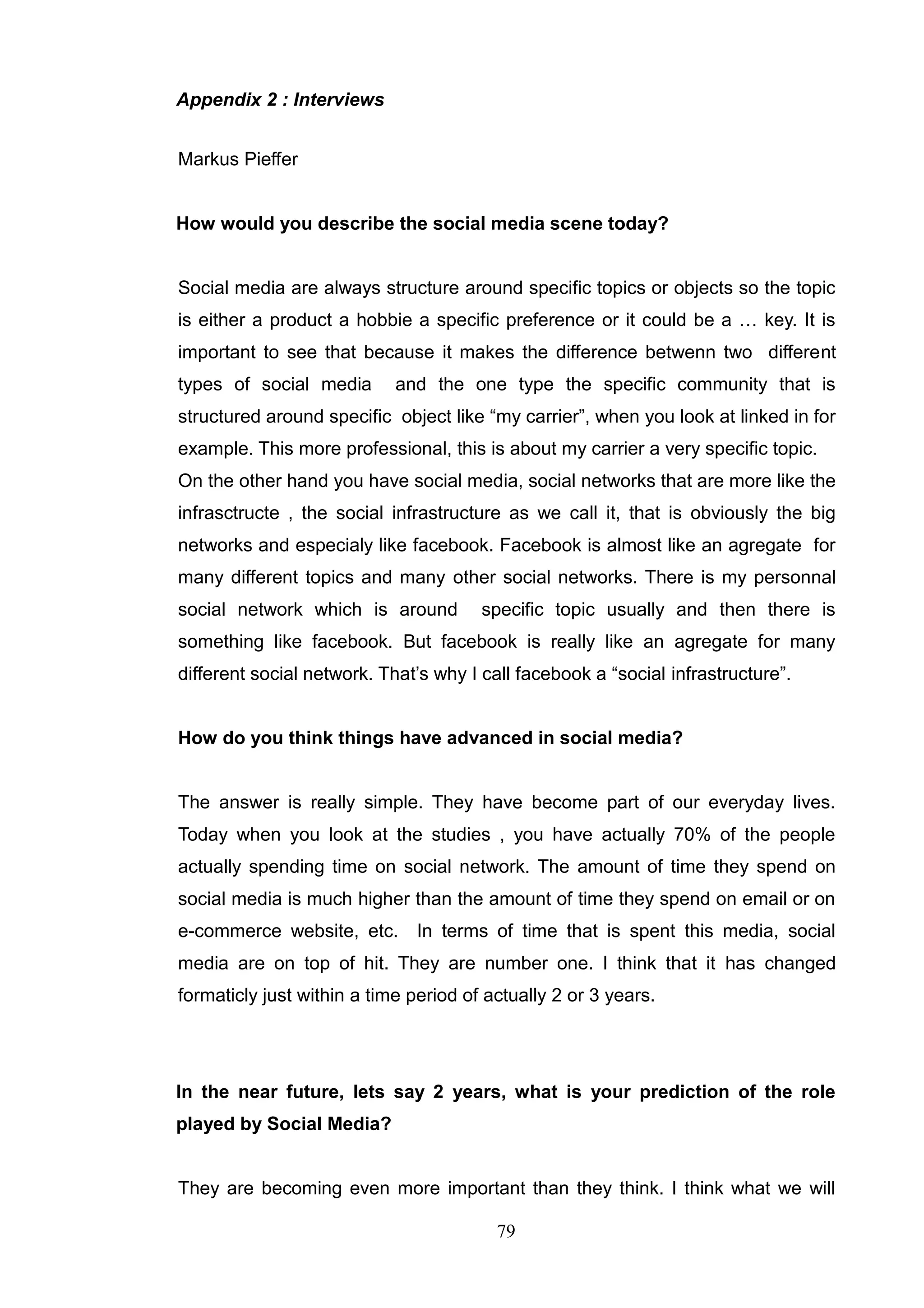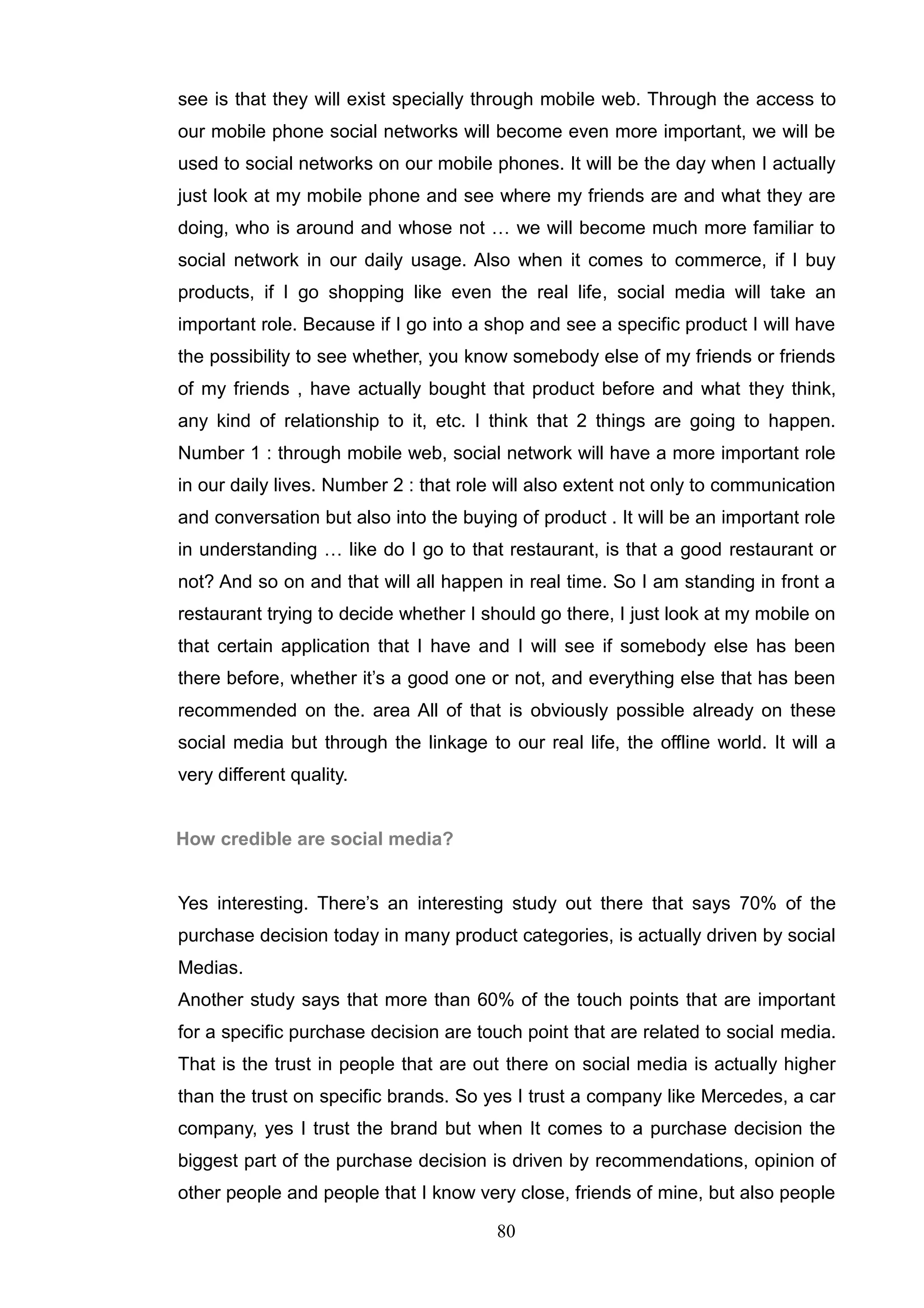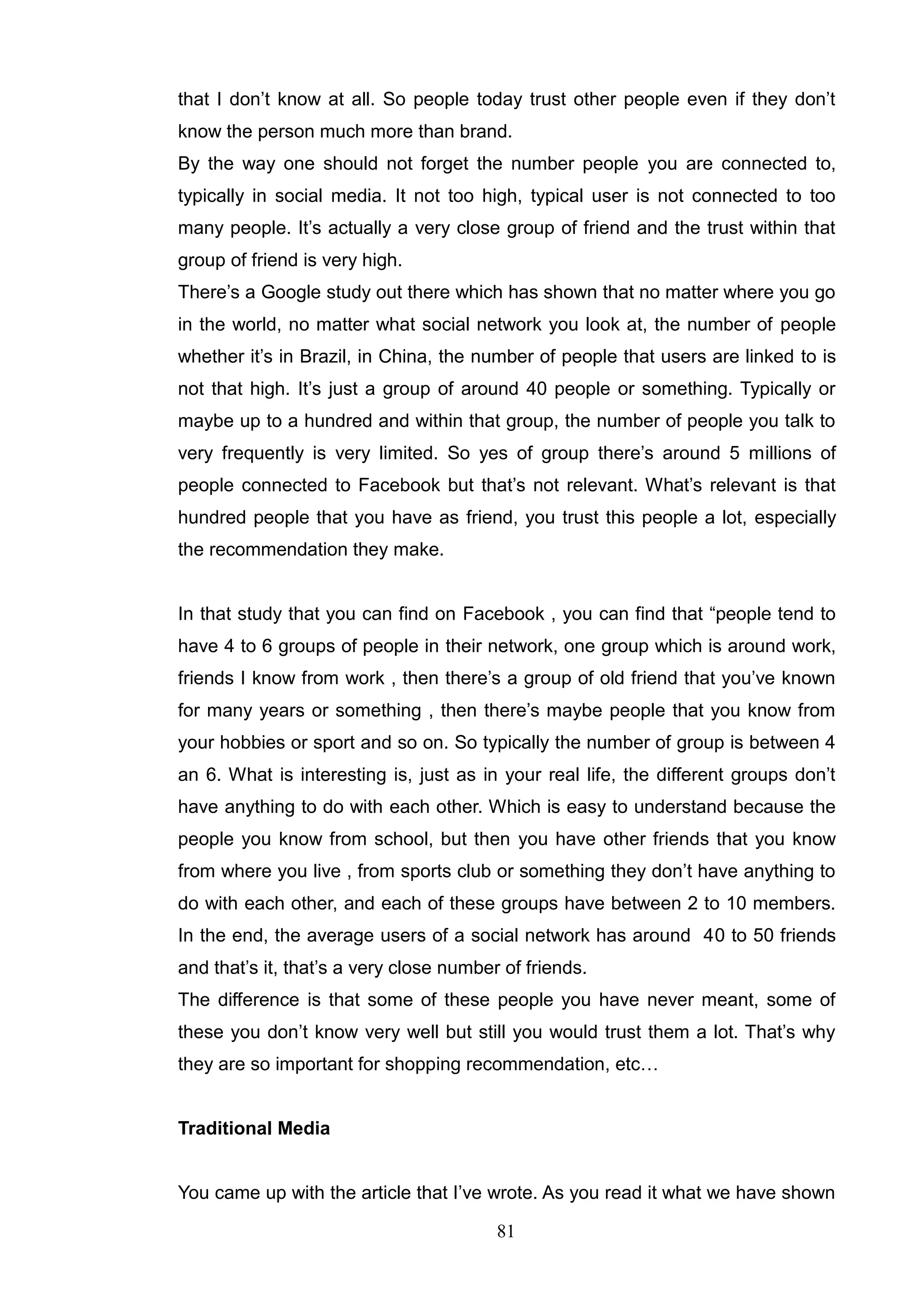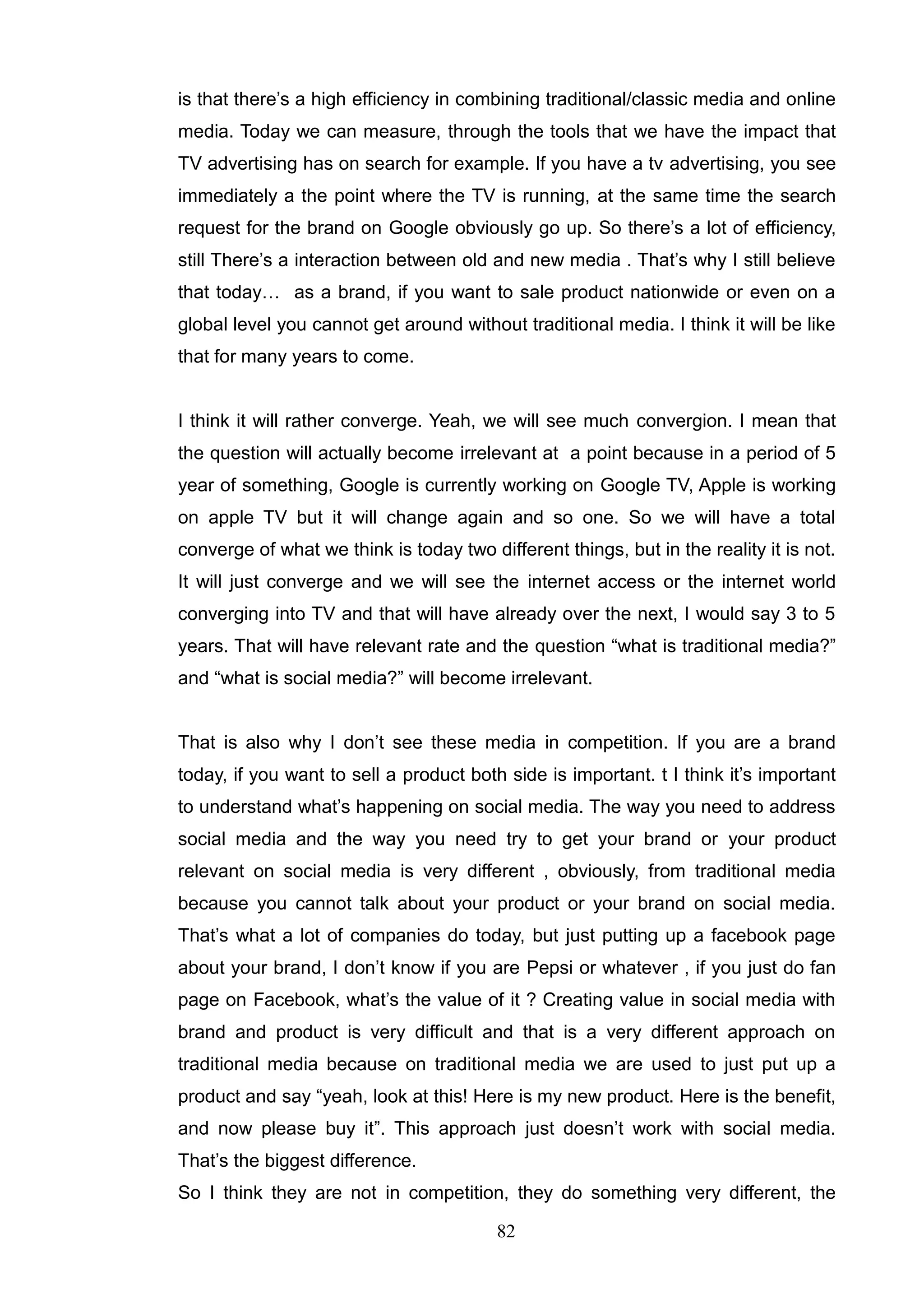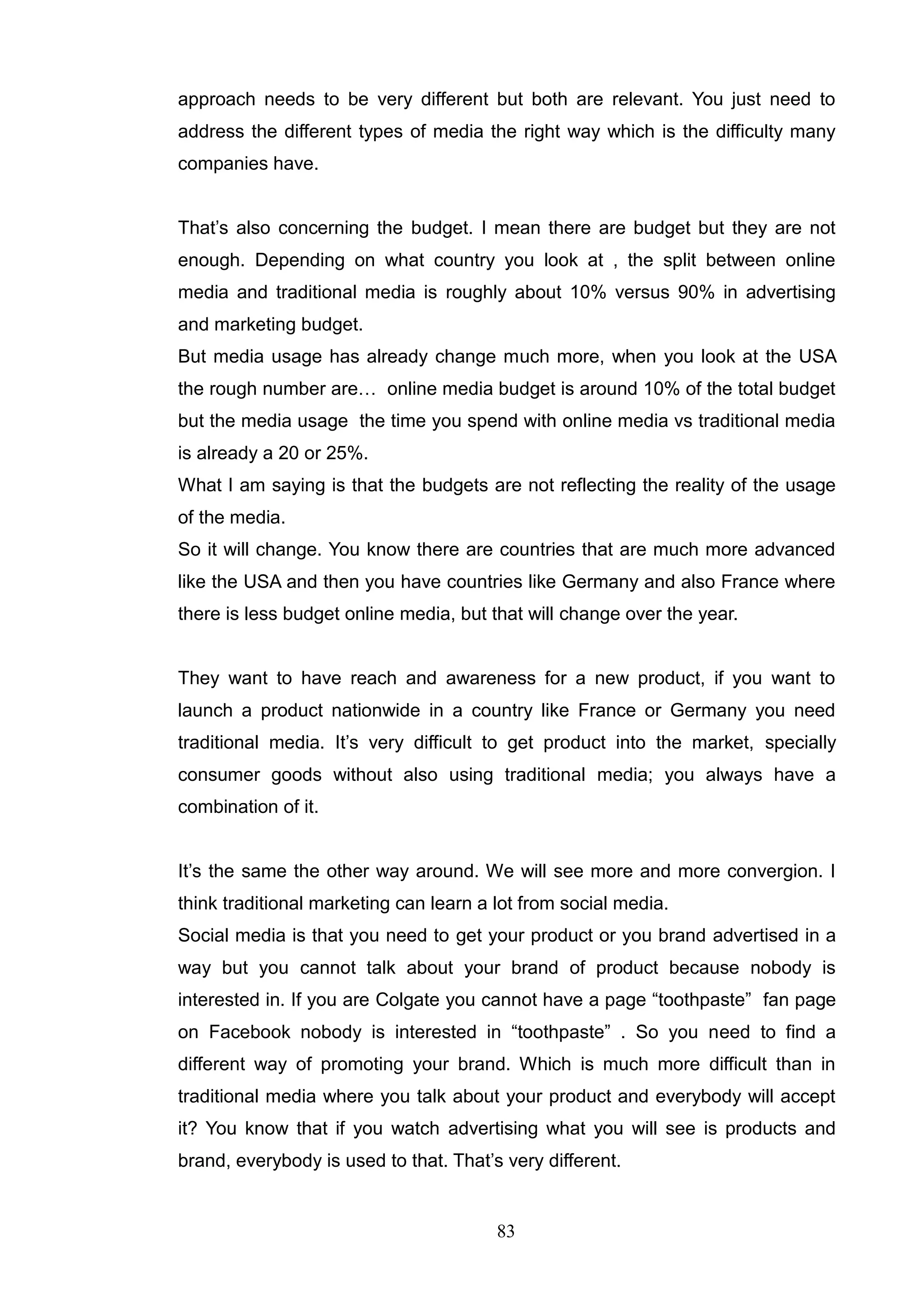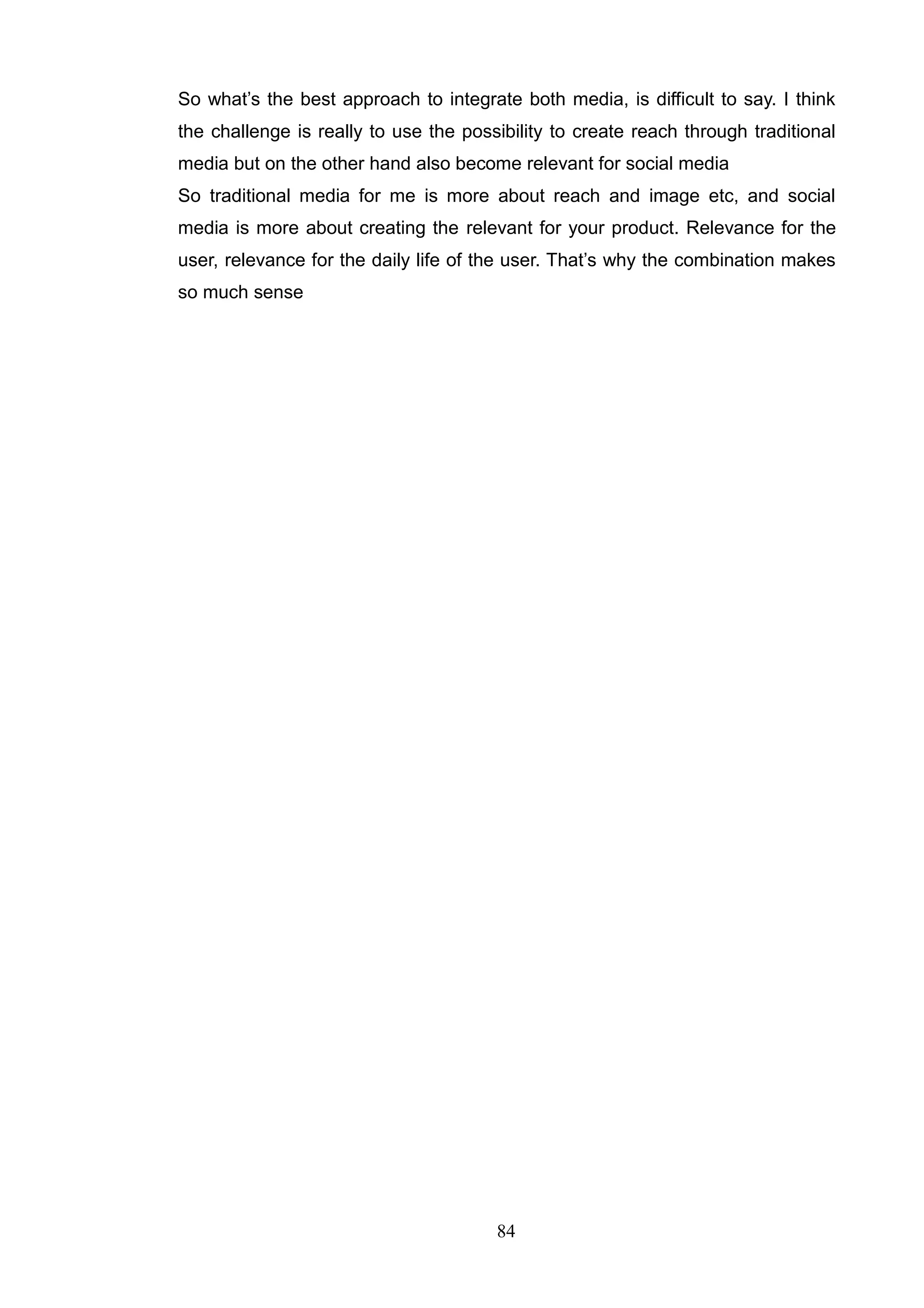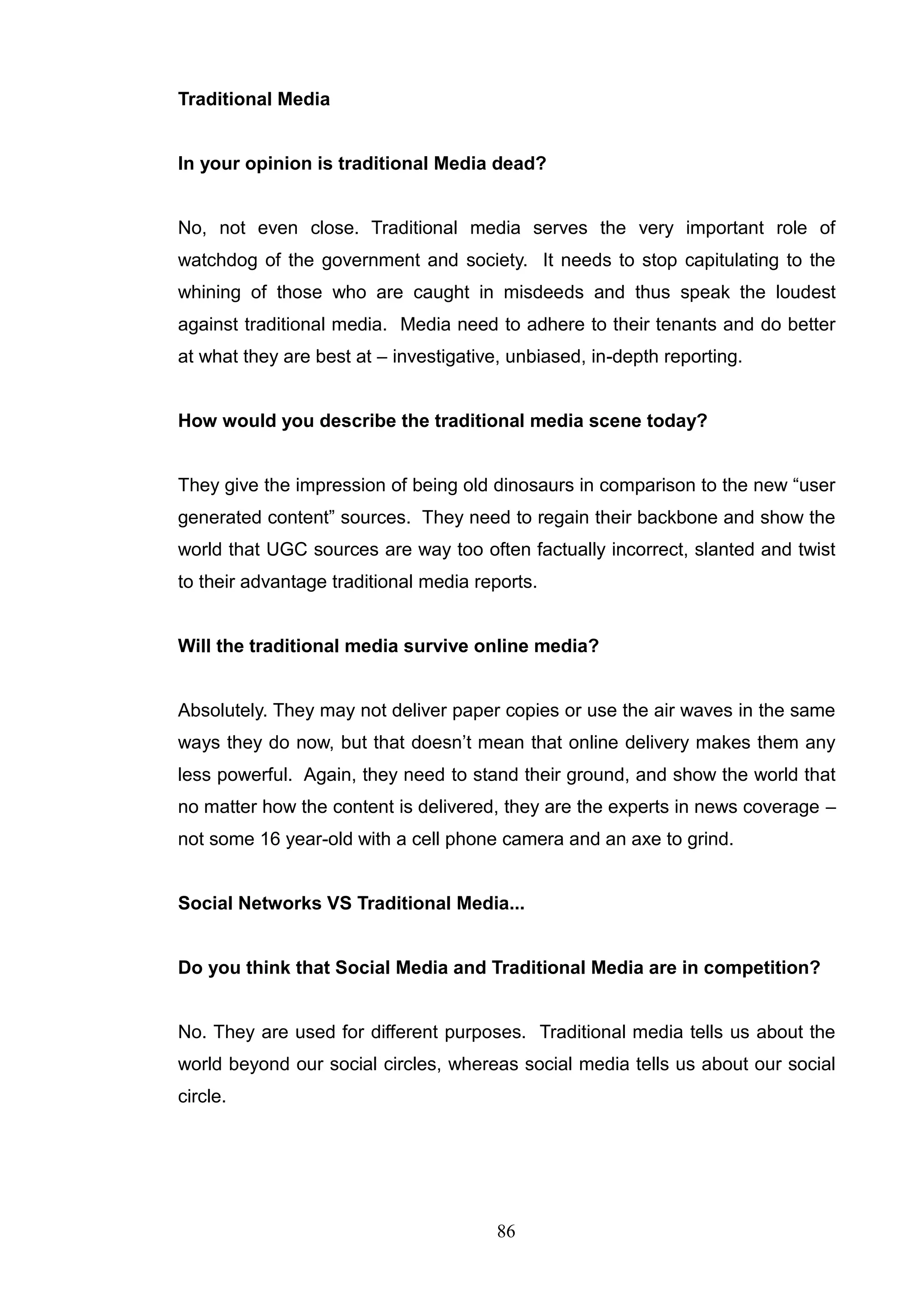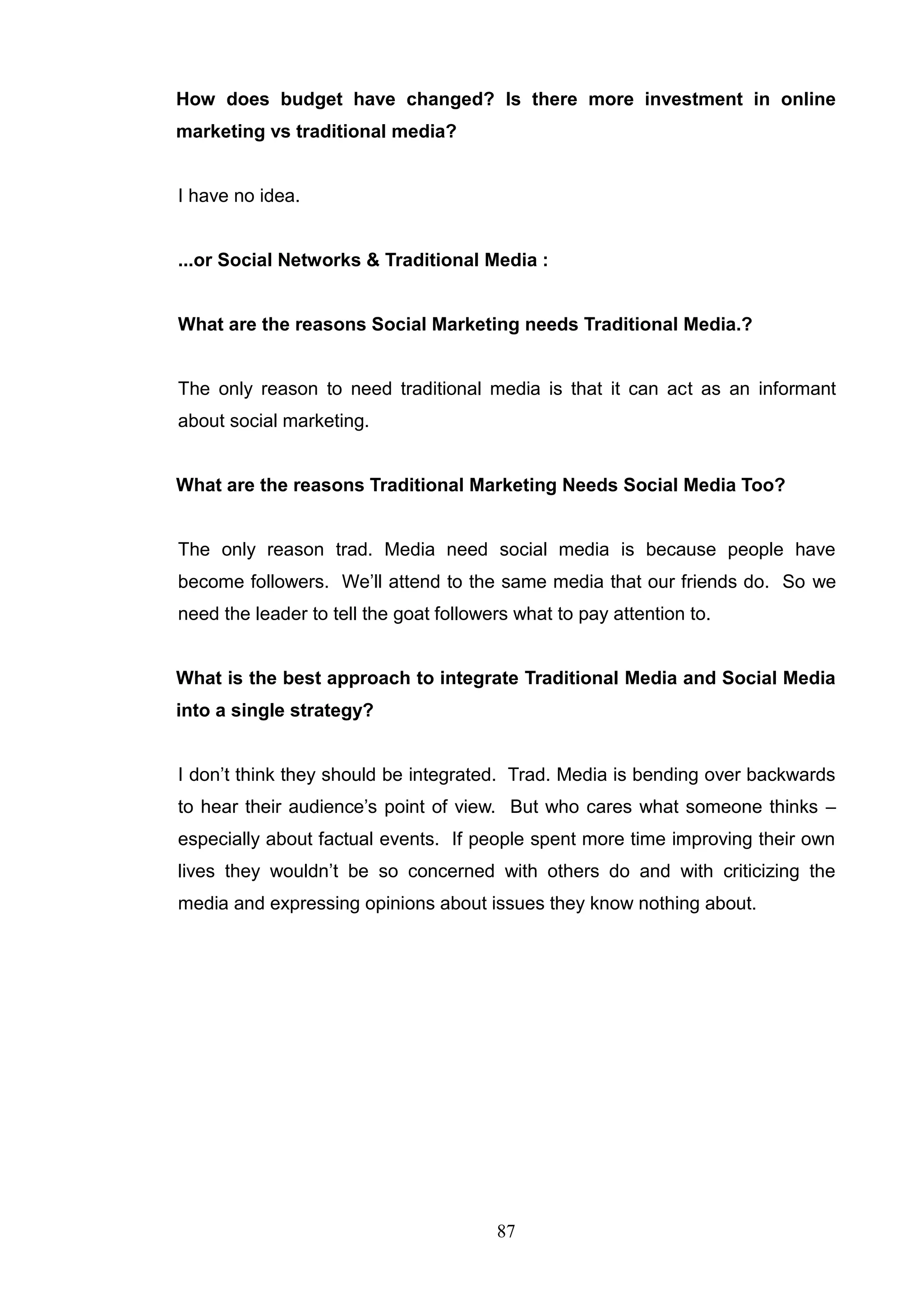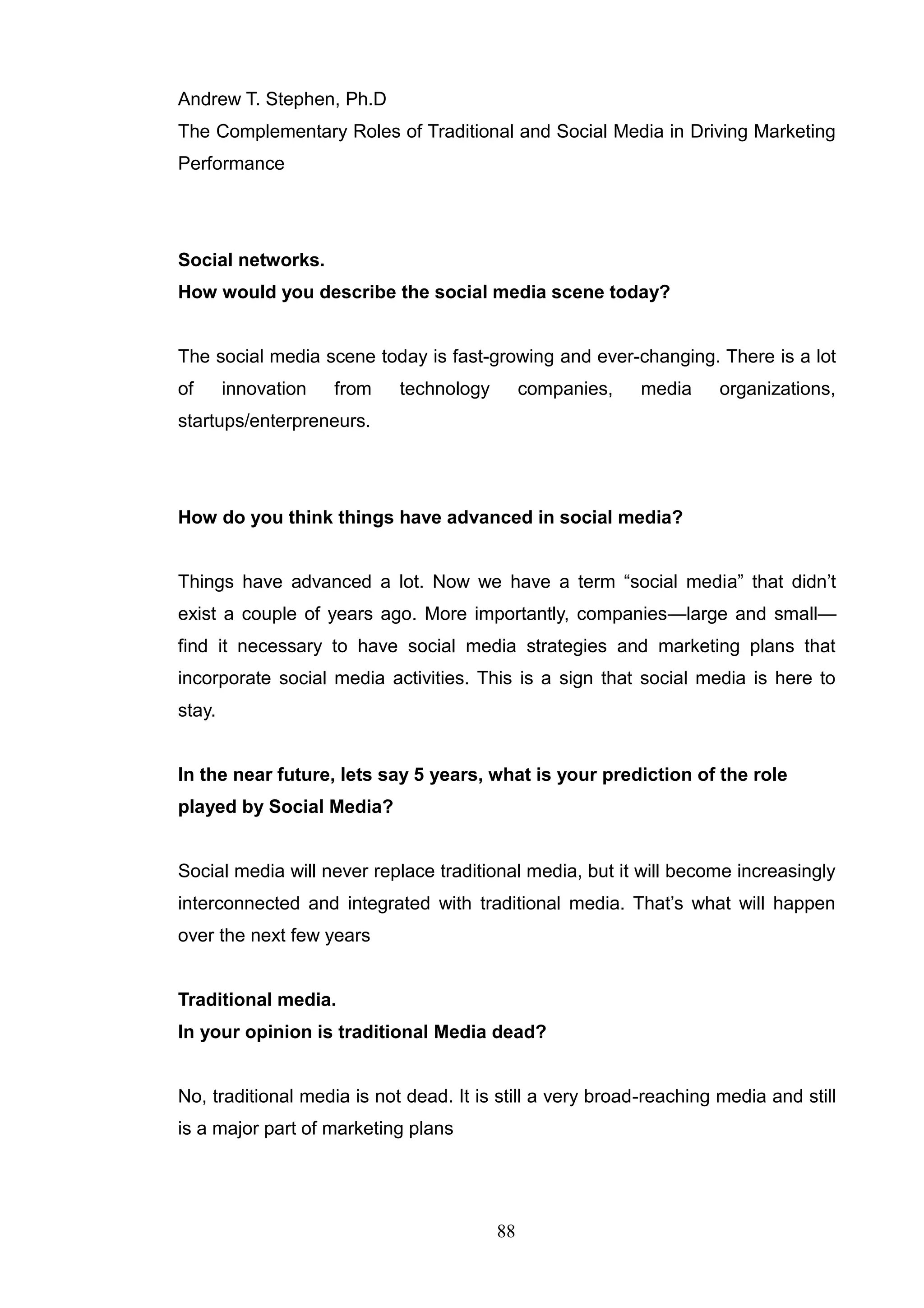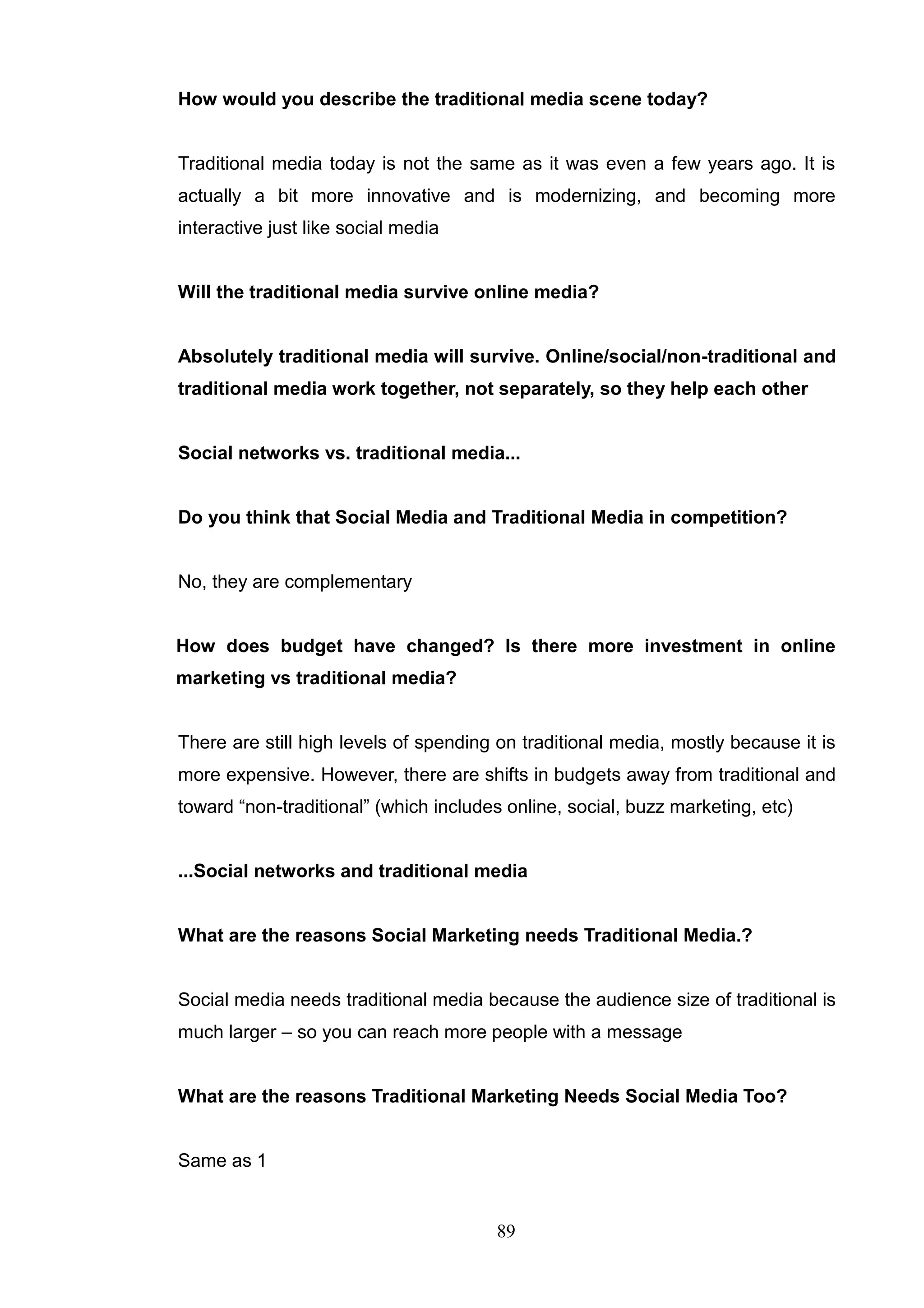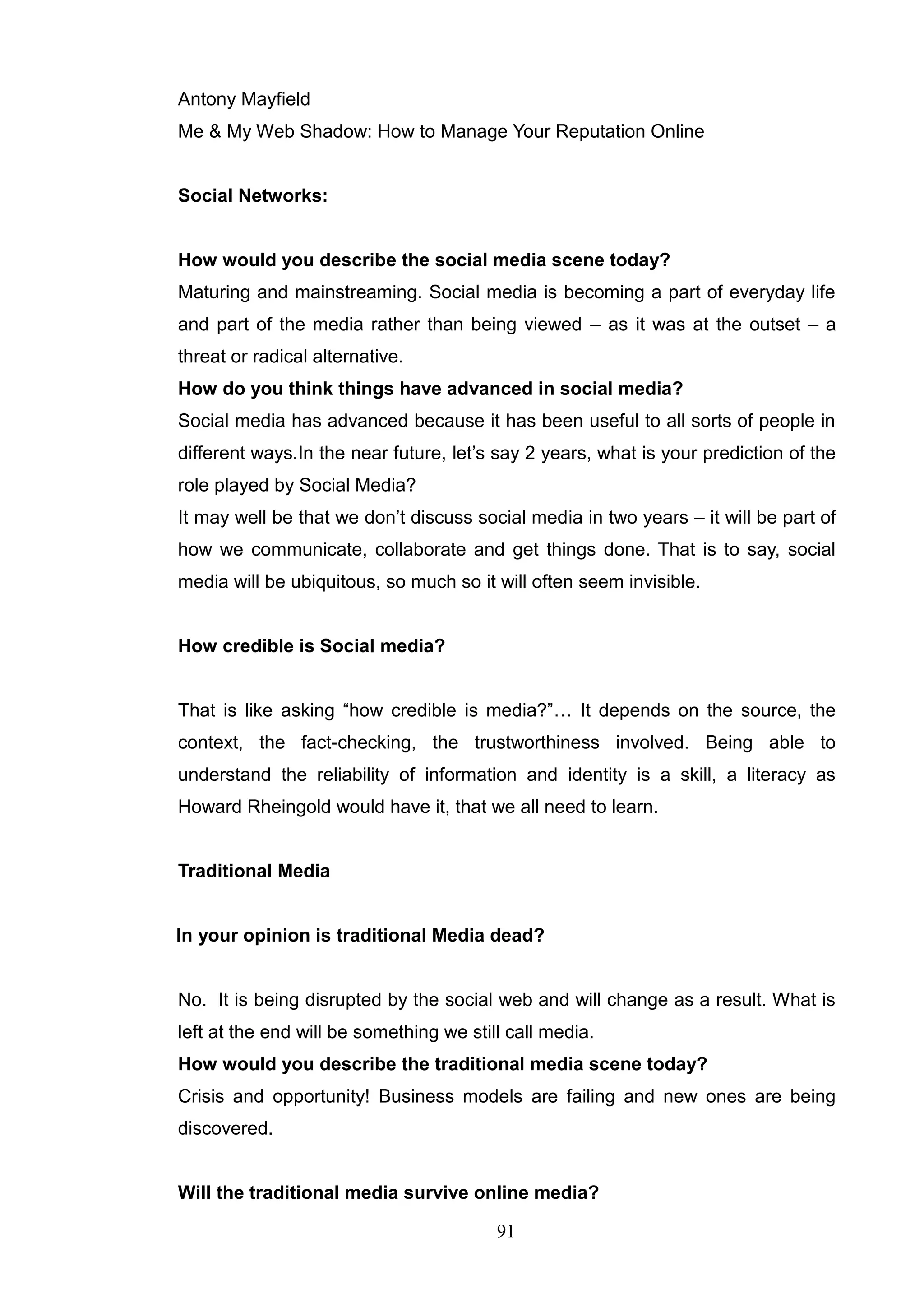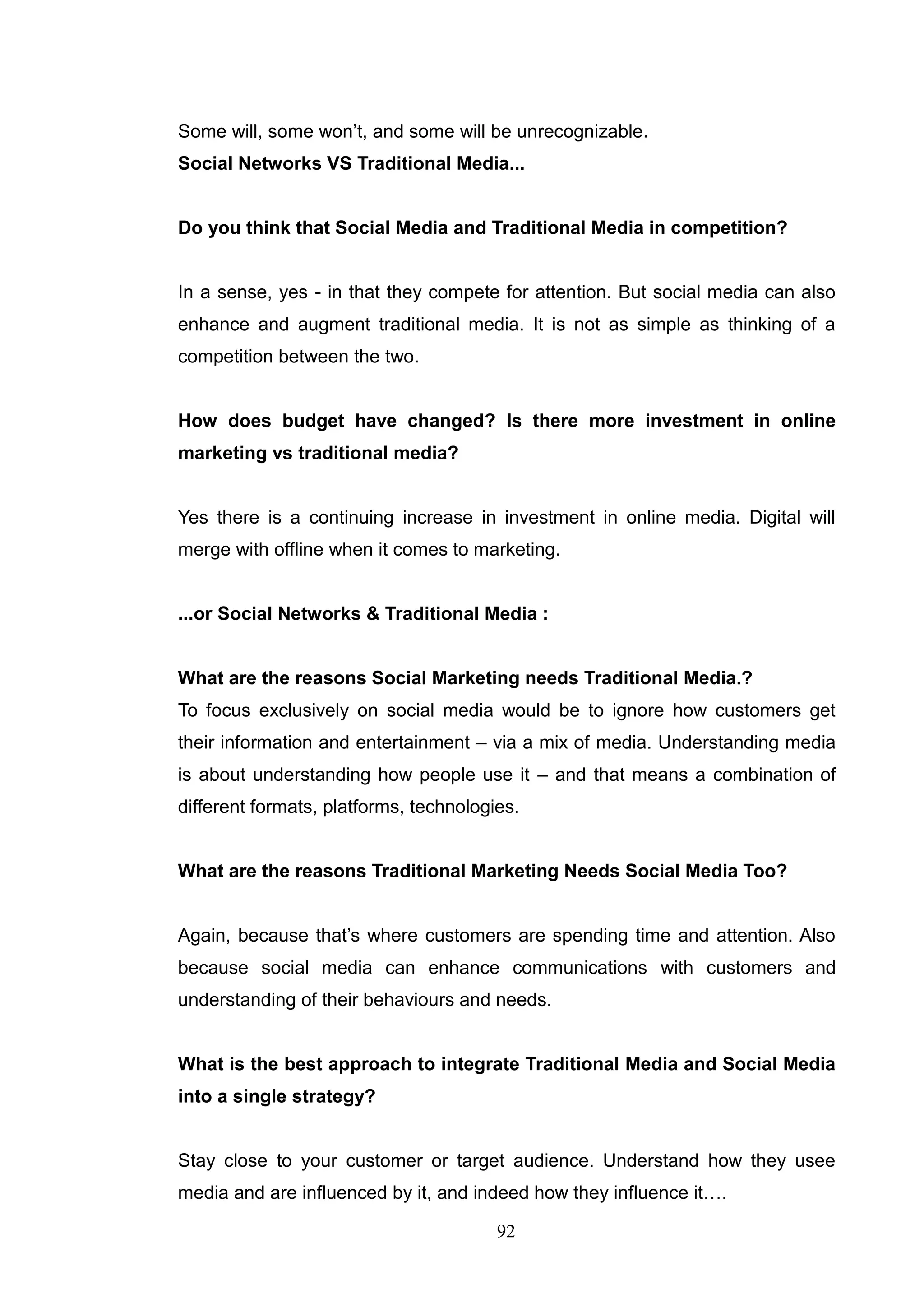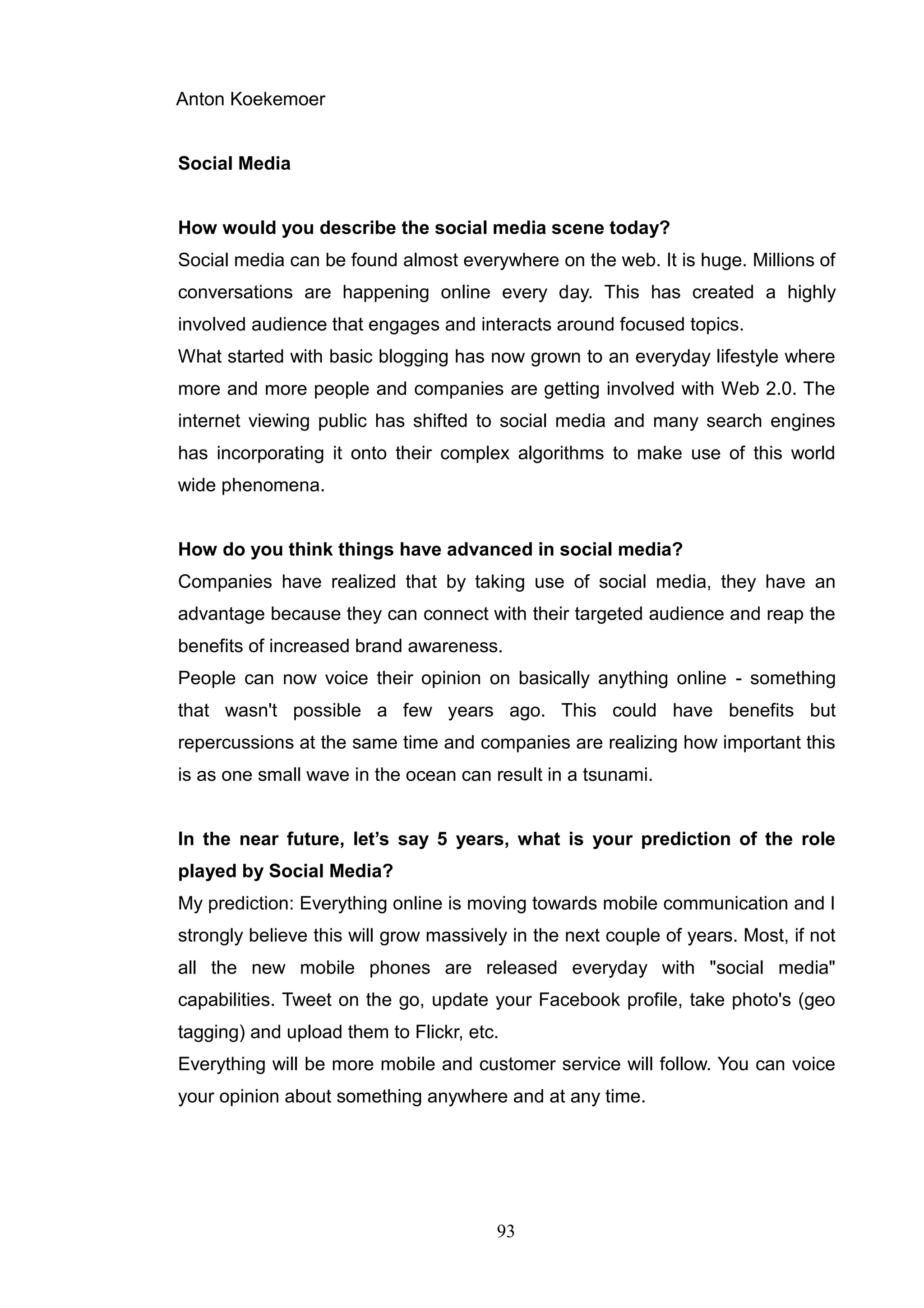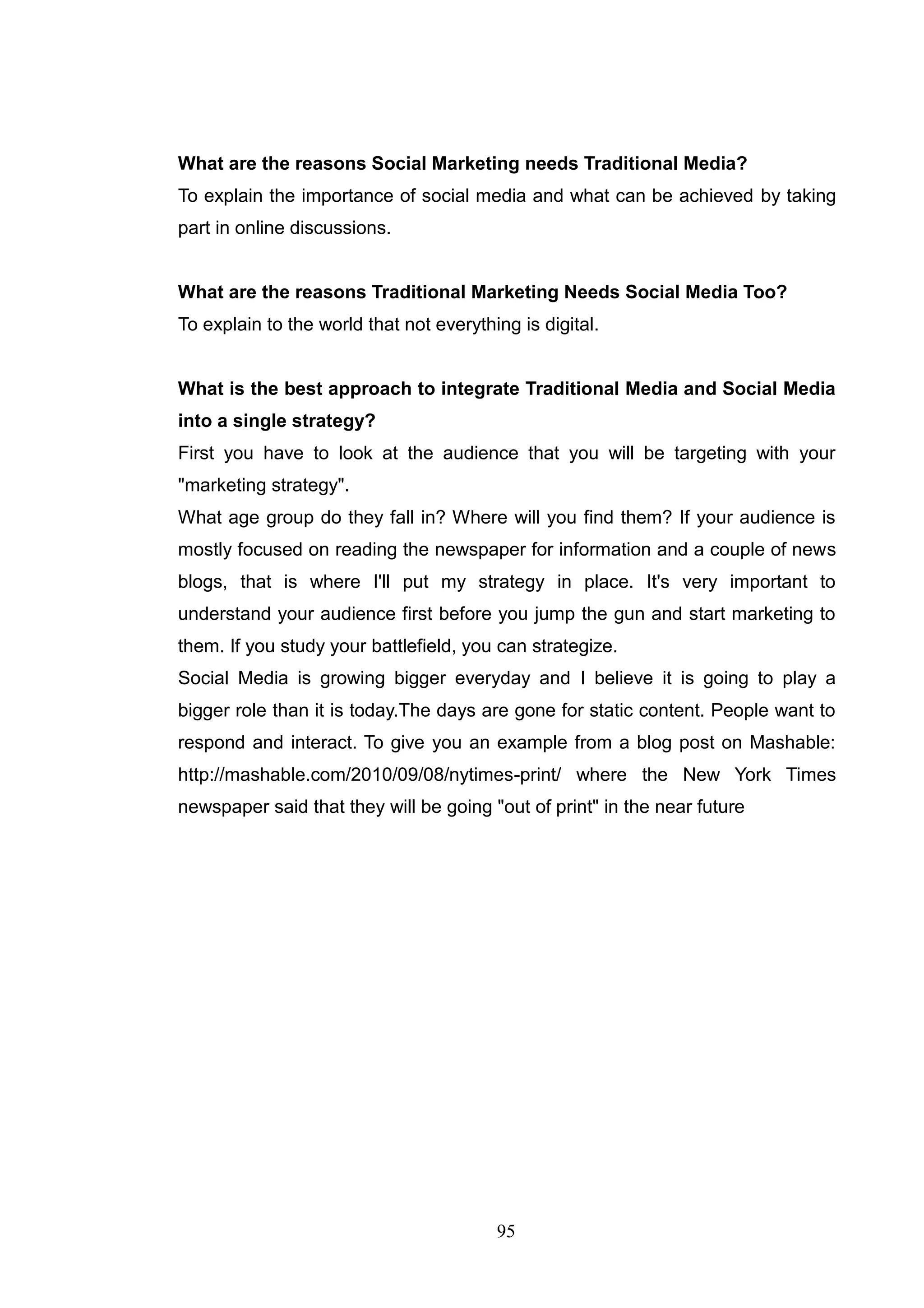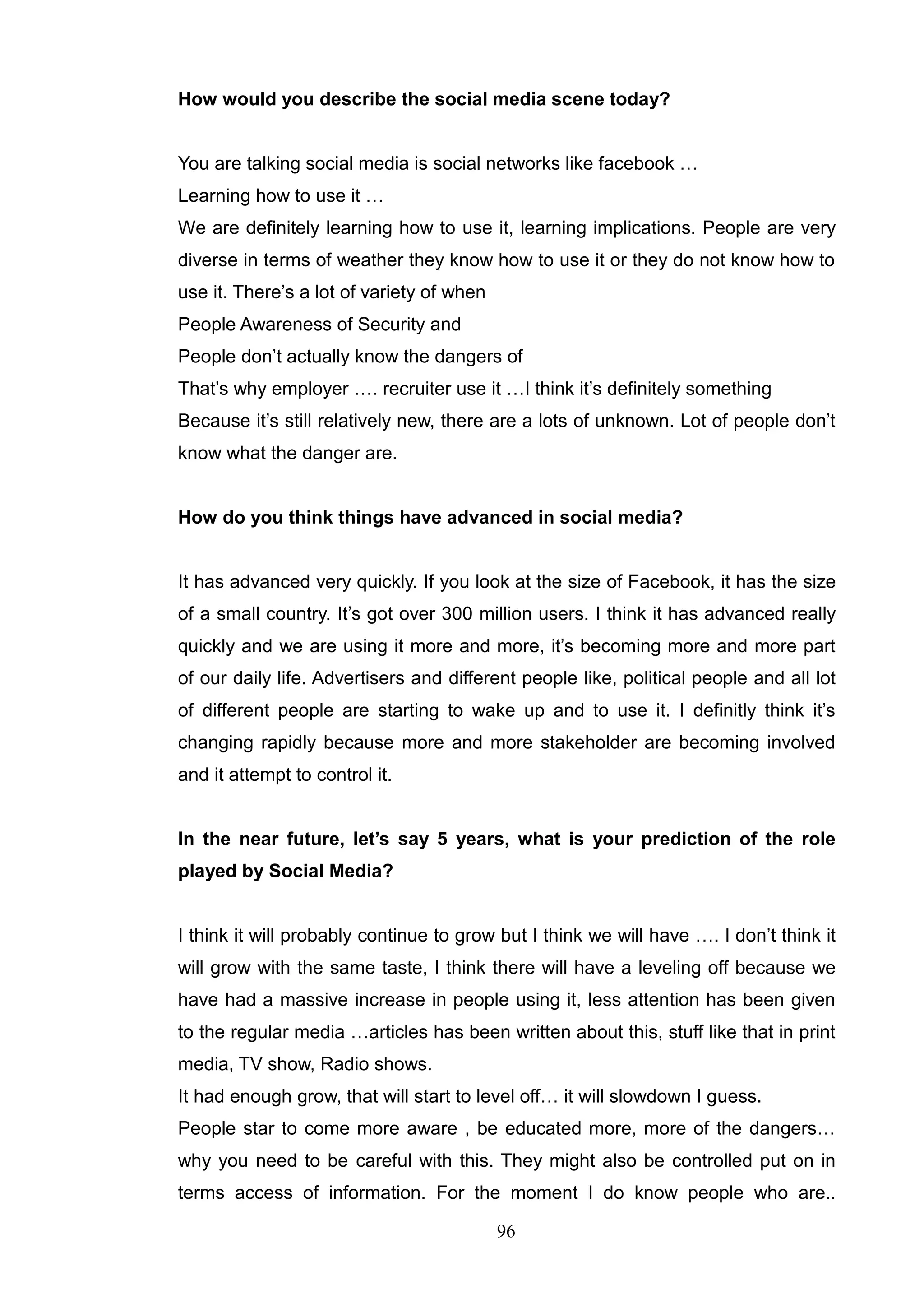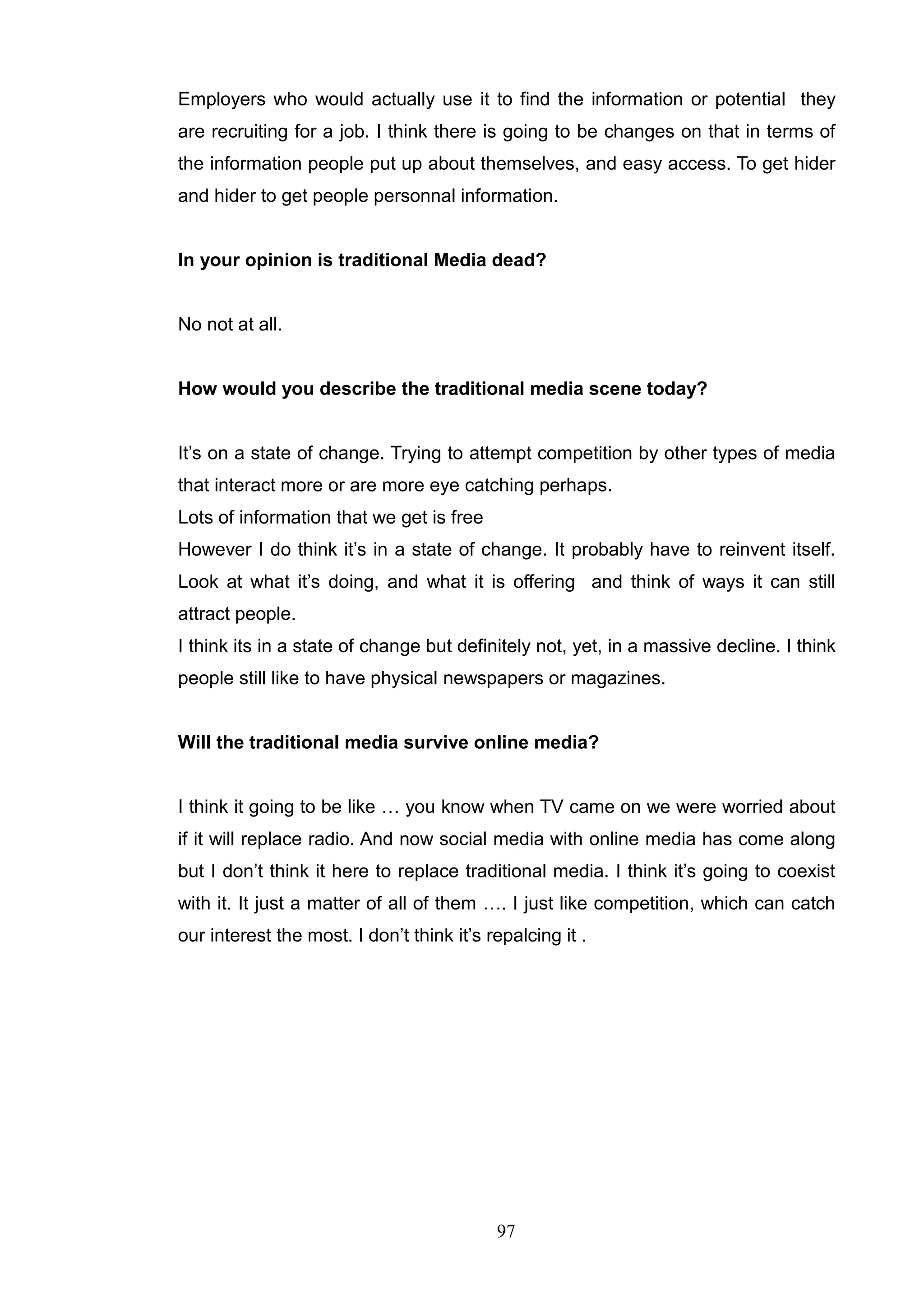This document discusses approaches to integrating traditional and social media into a single marketing strategy. It analyzes whether traditional and social media compete or complement each other. Through interviews and analysis, the document finds that traditional and social media do not compete and instead complement each other. Multiple media channels have become dominant, and traditional and social media are beginning to converge into a single media. The document develops suggestions for allocating media time based on different marketing objectives.
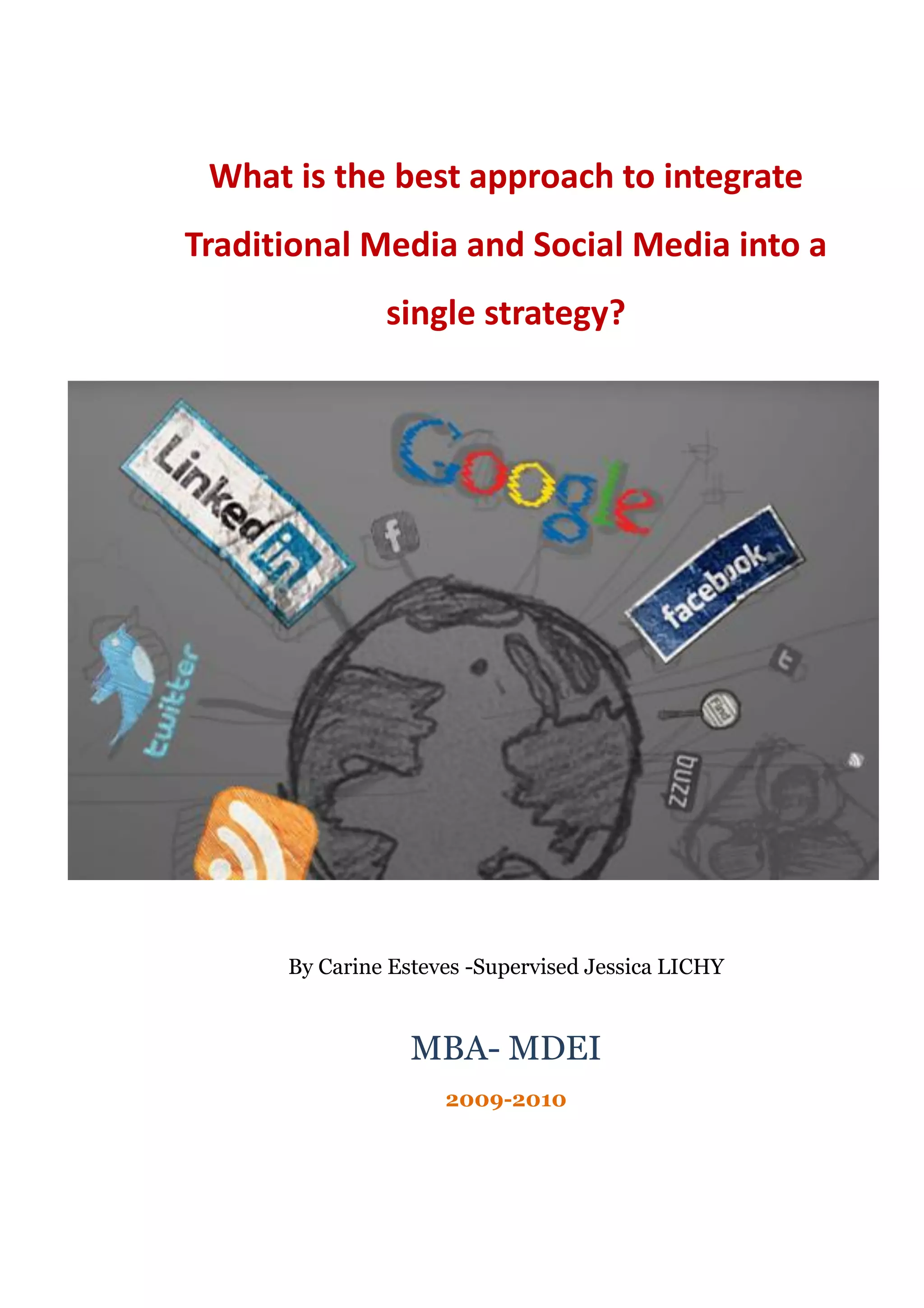
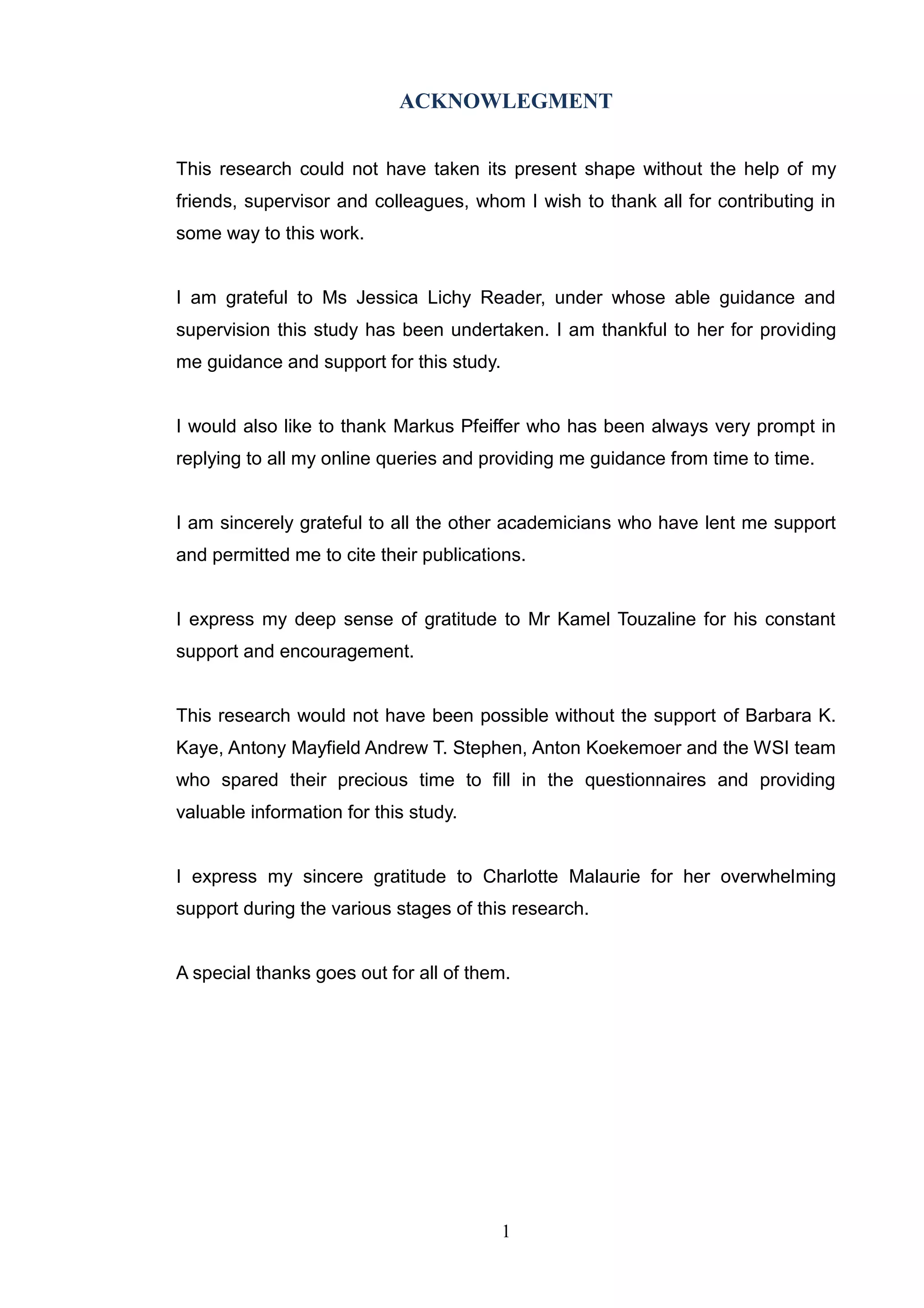
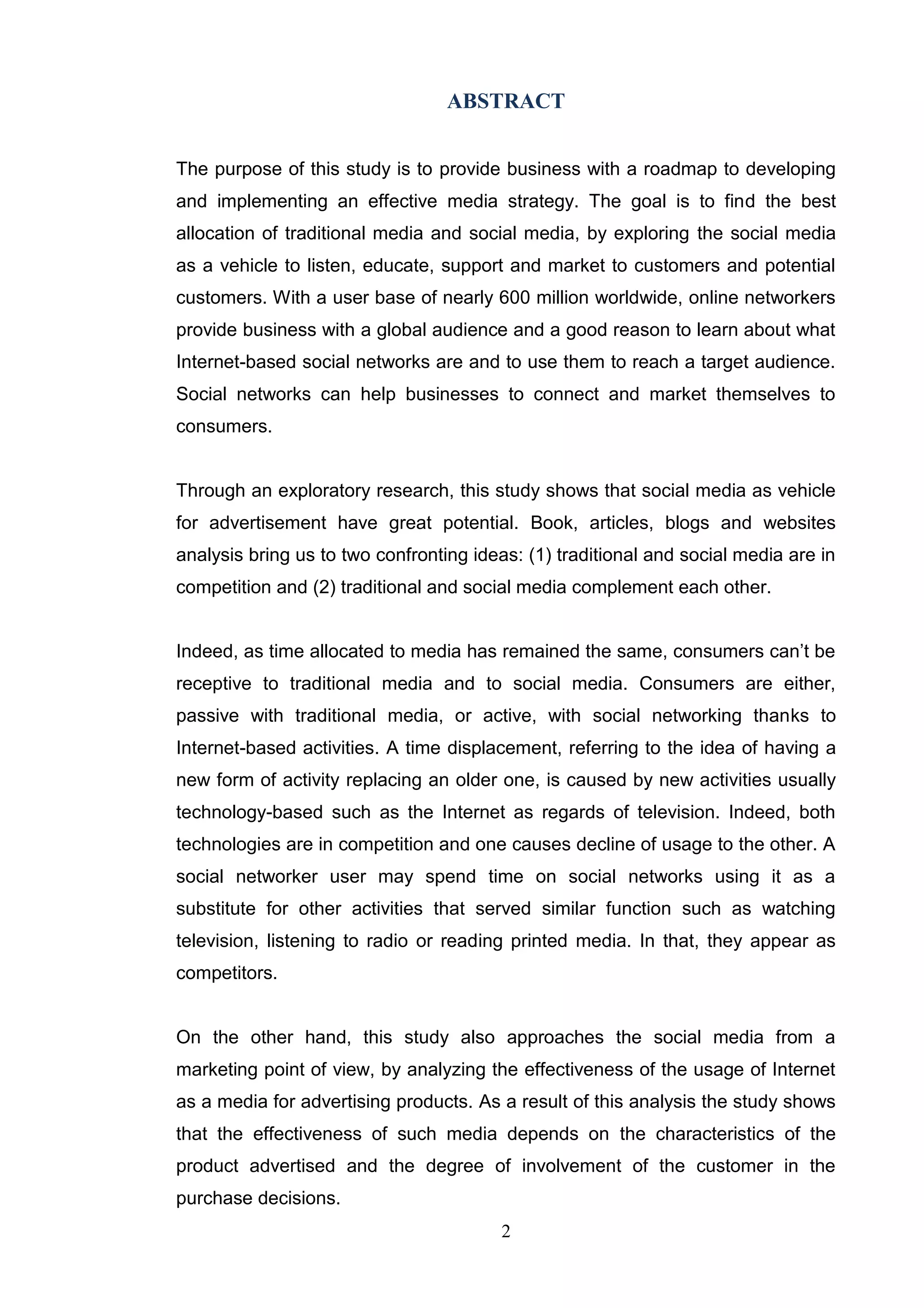


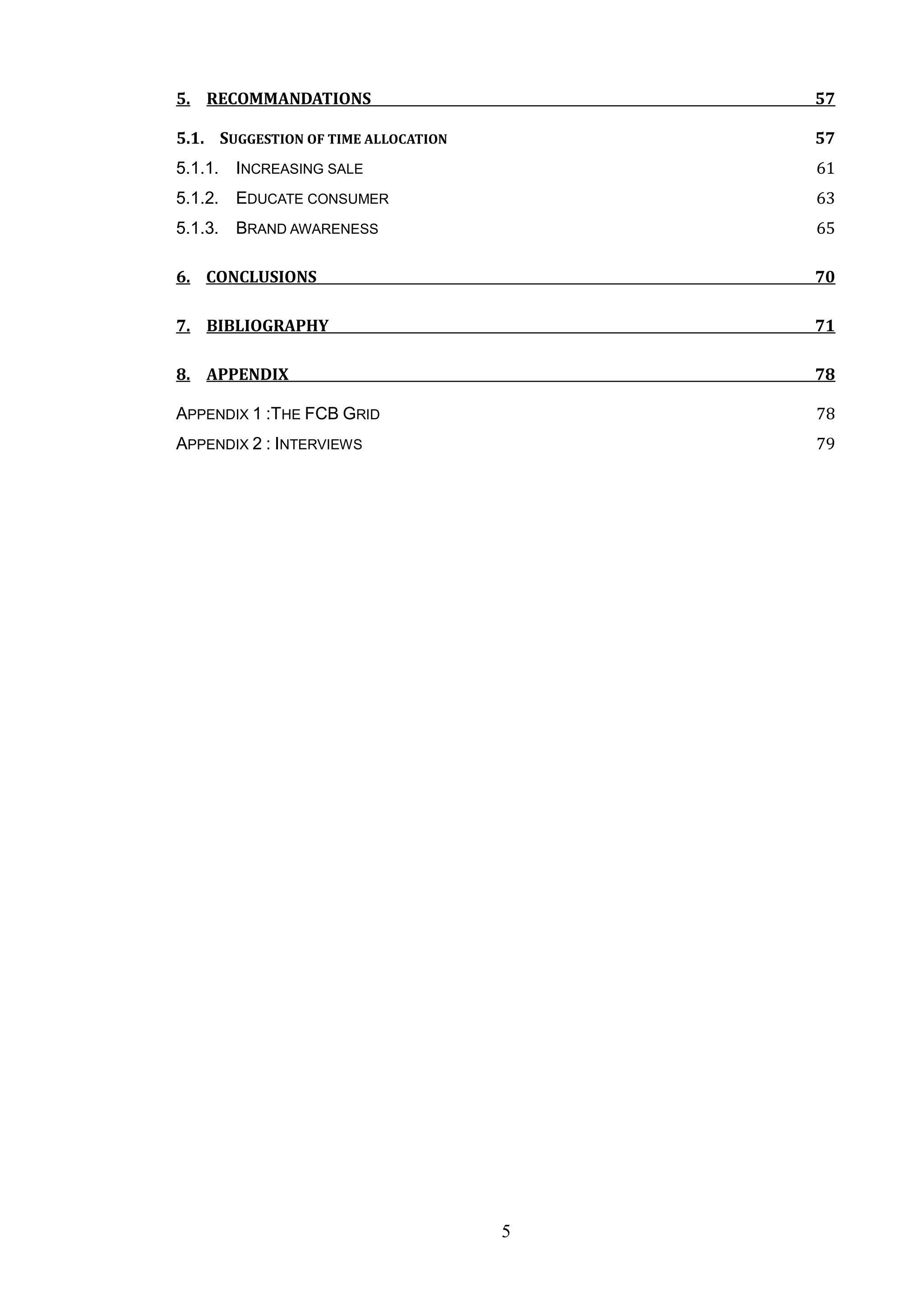
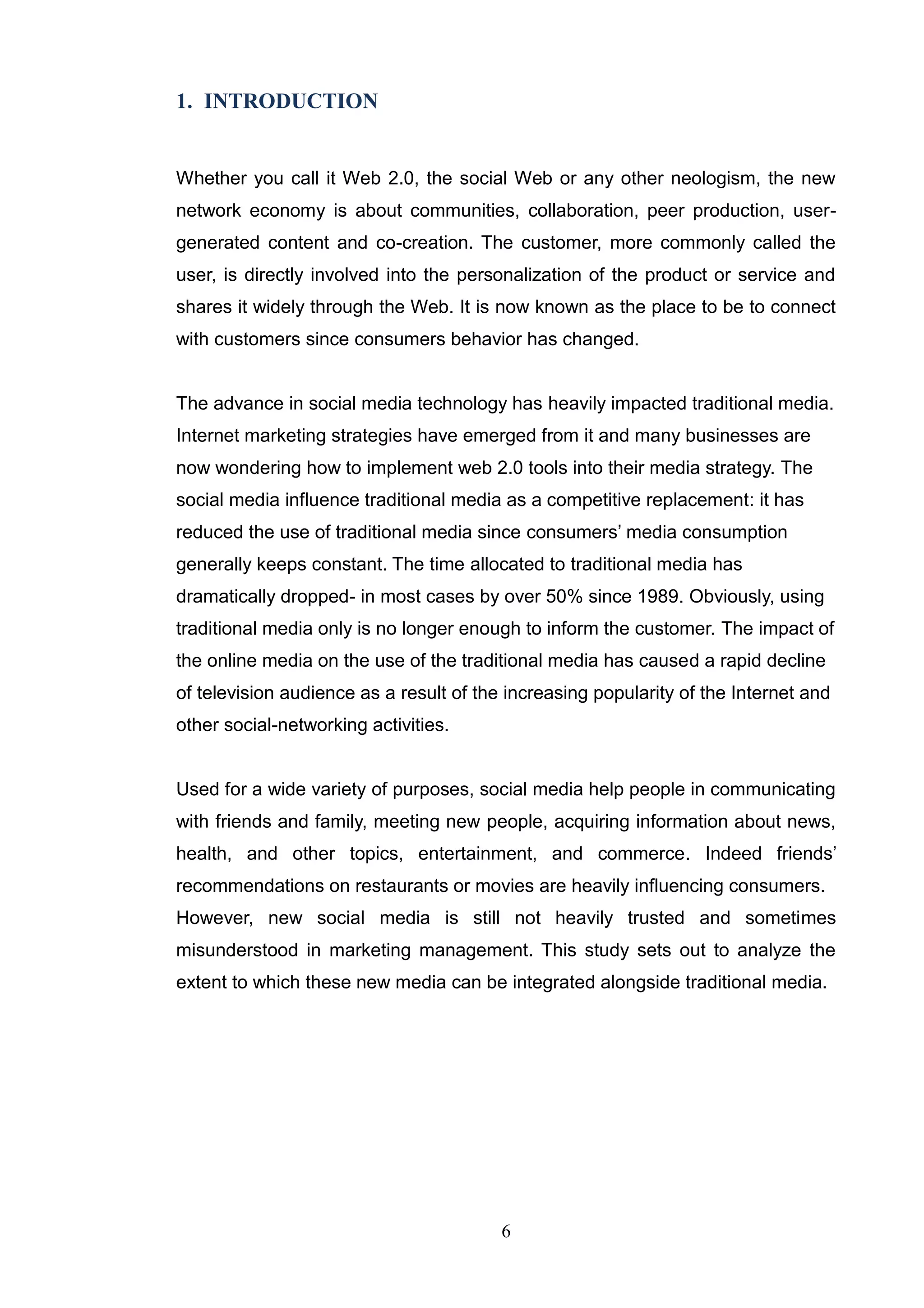
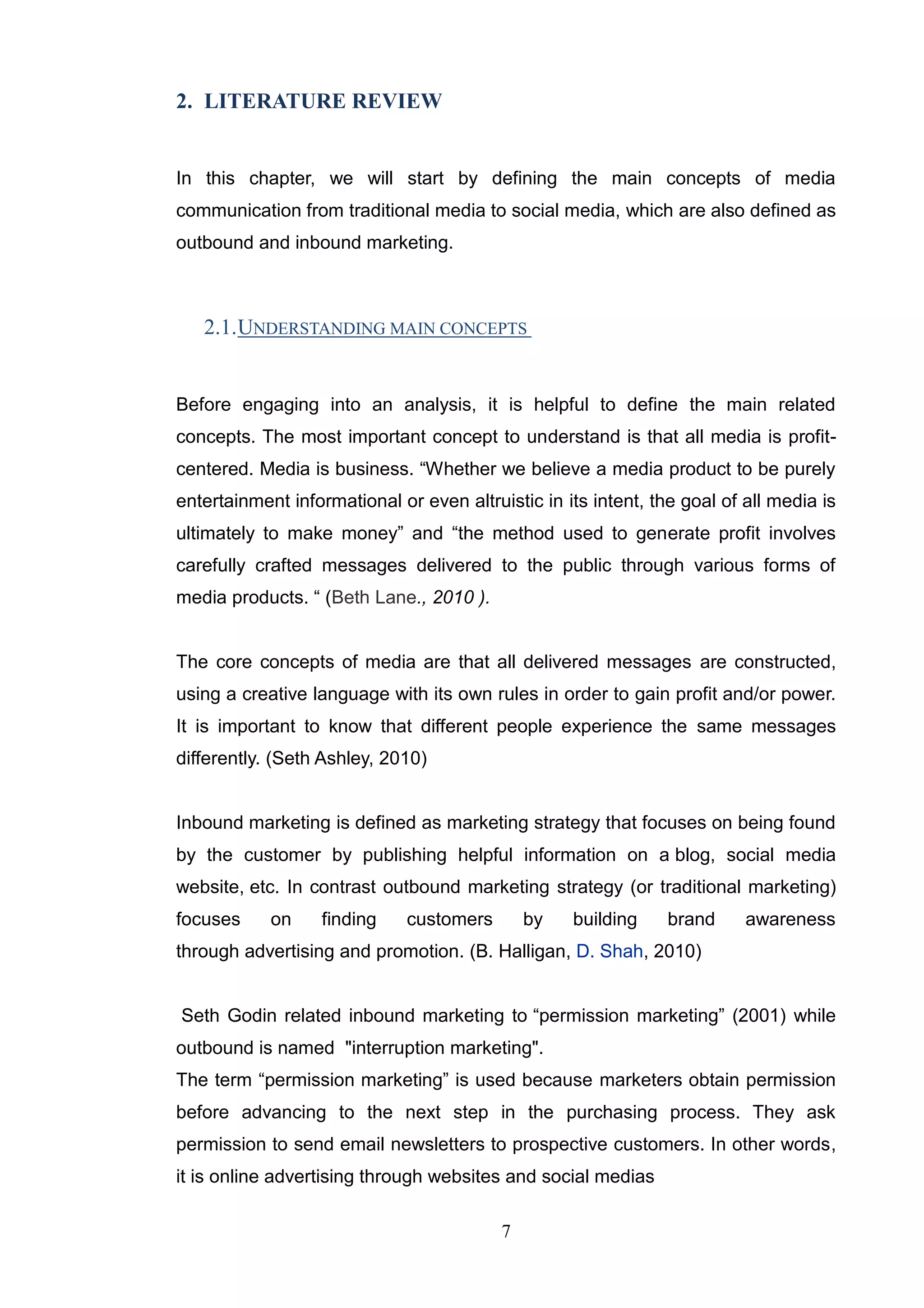
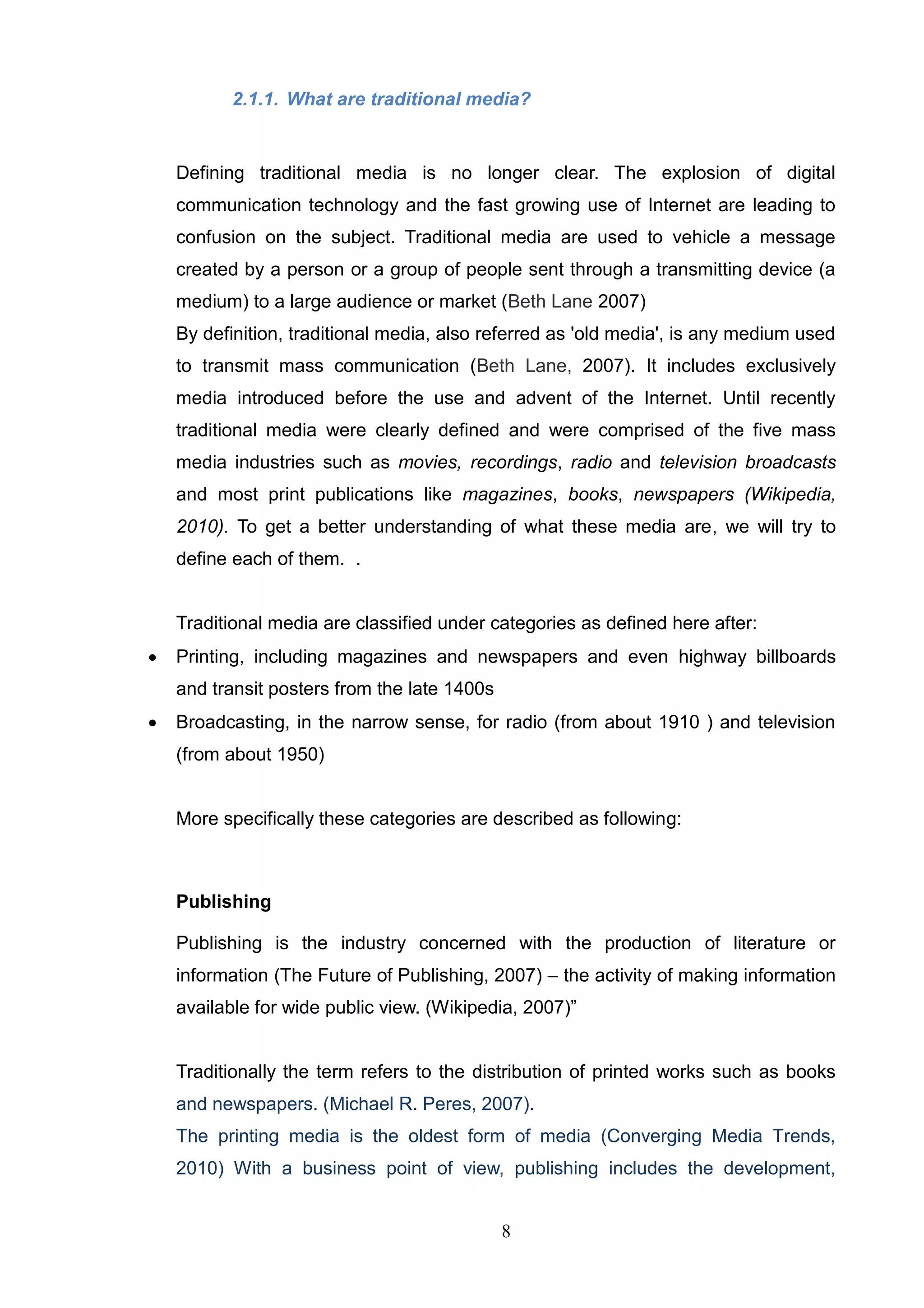


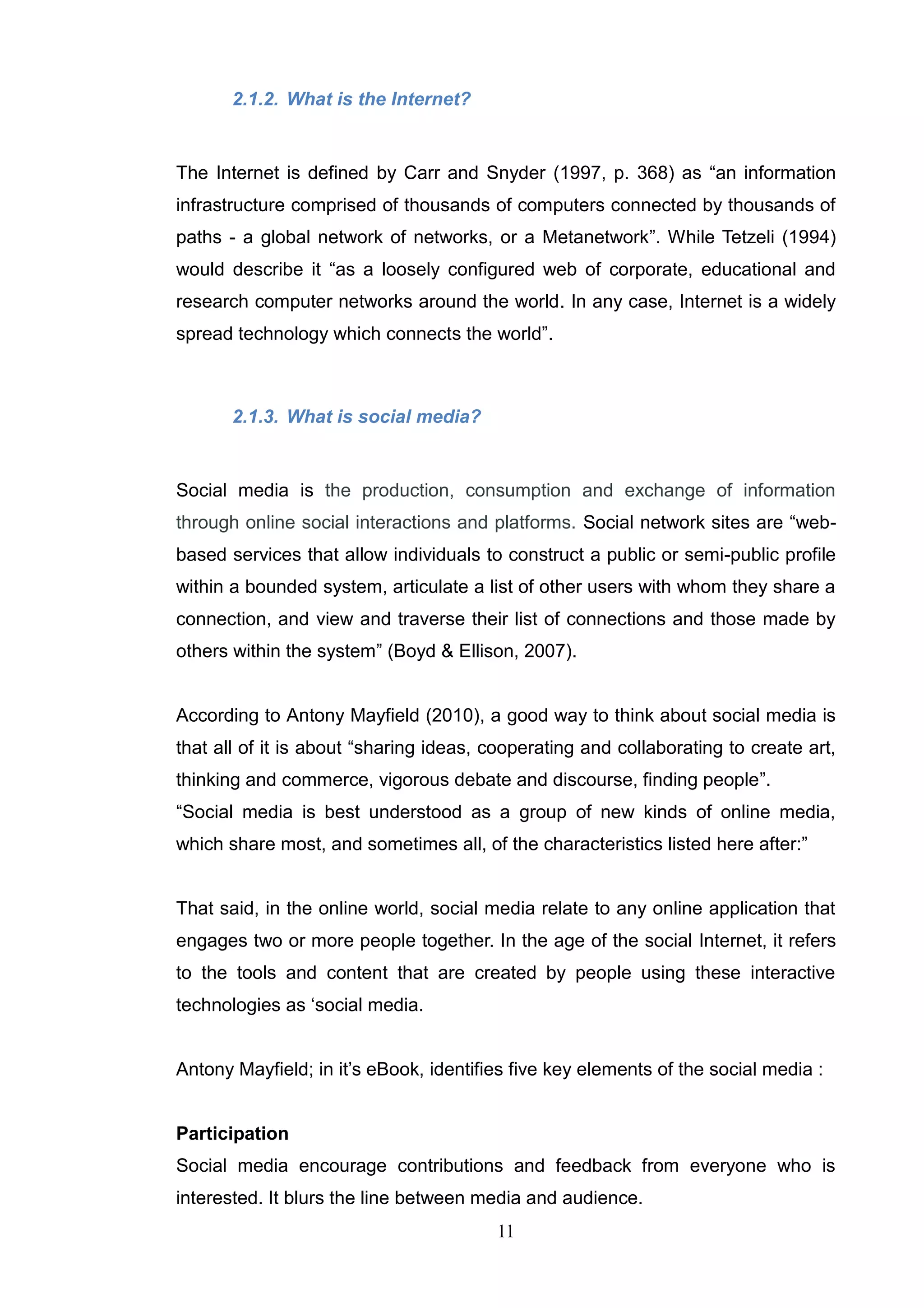
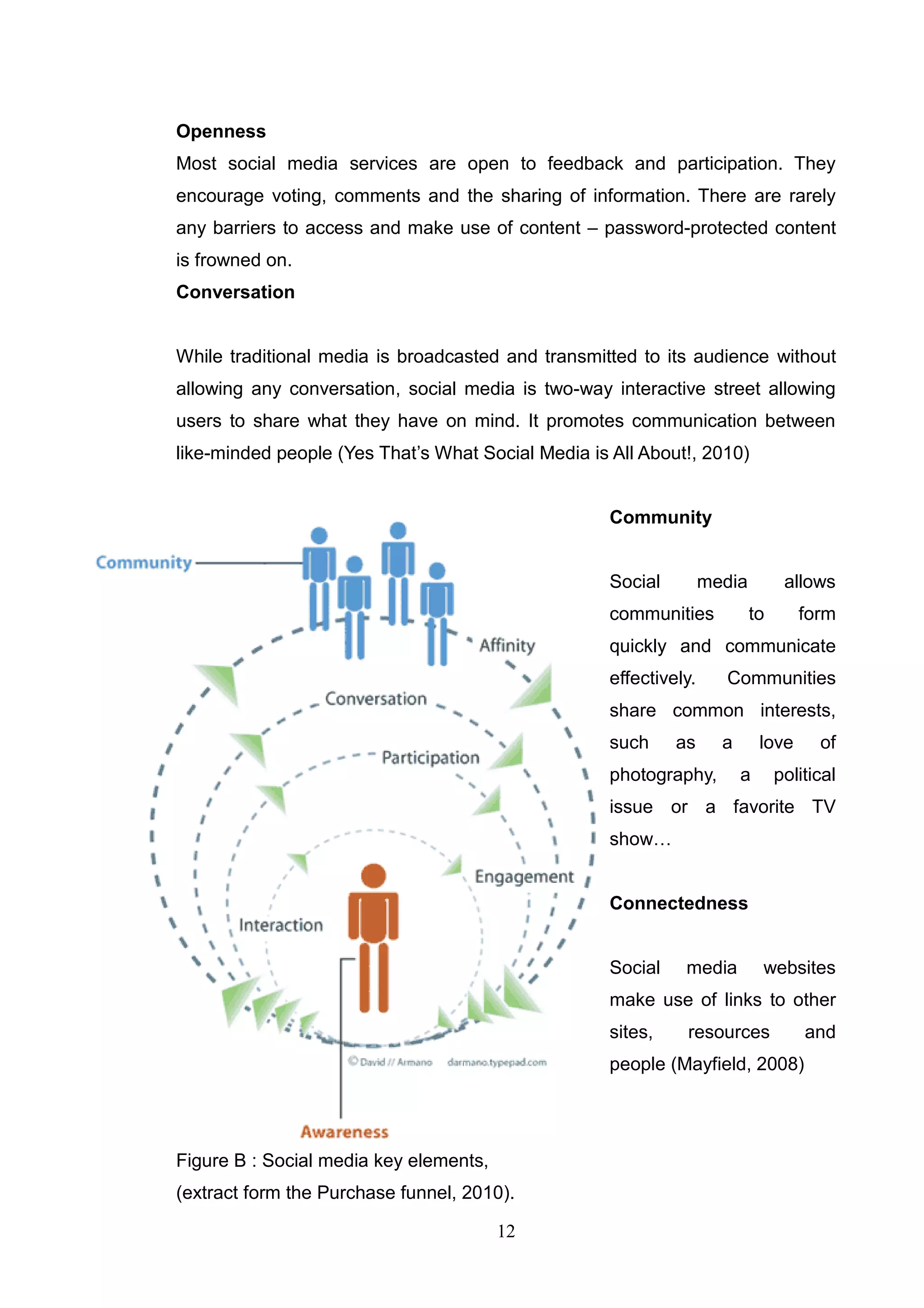
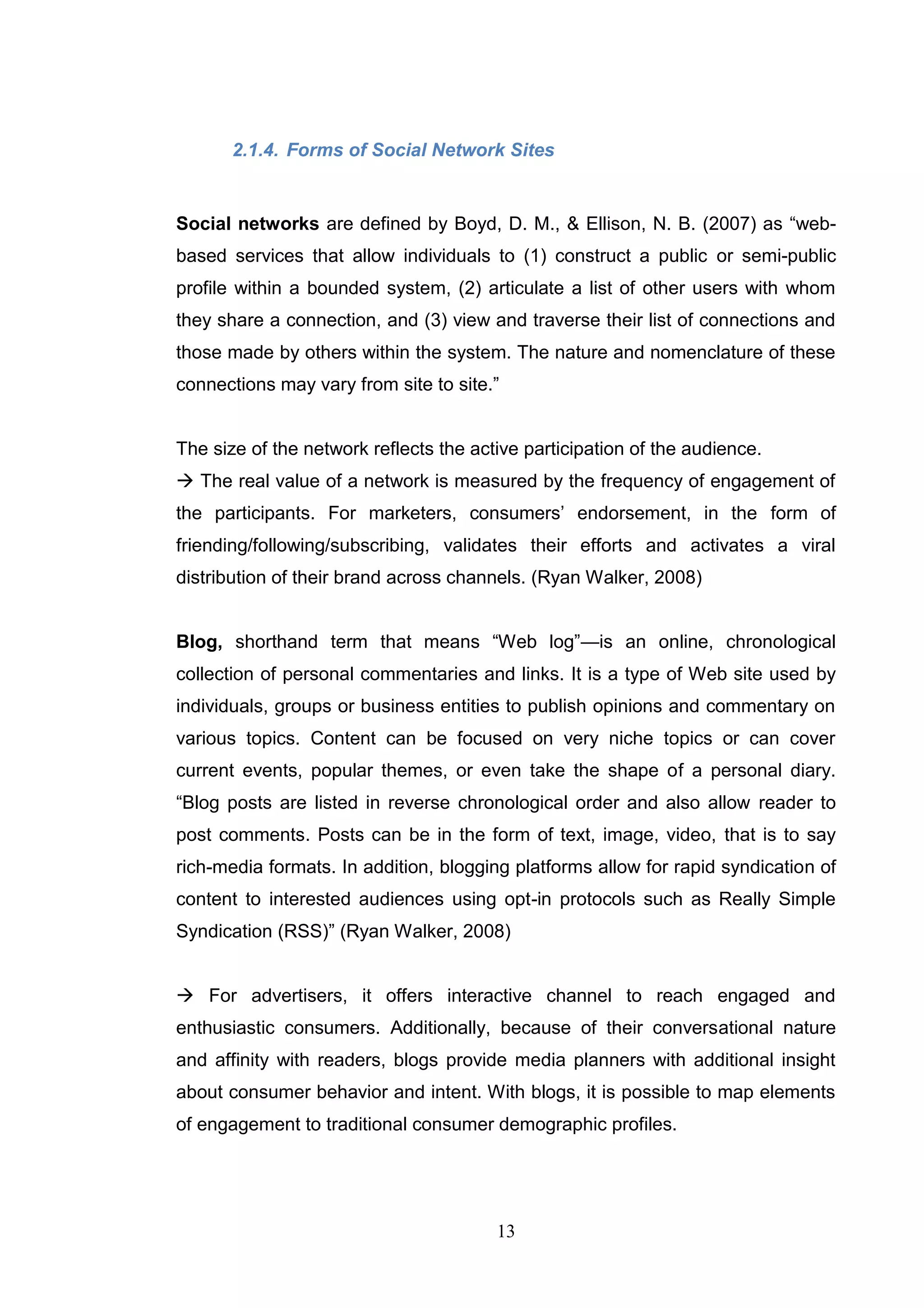

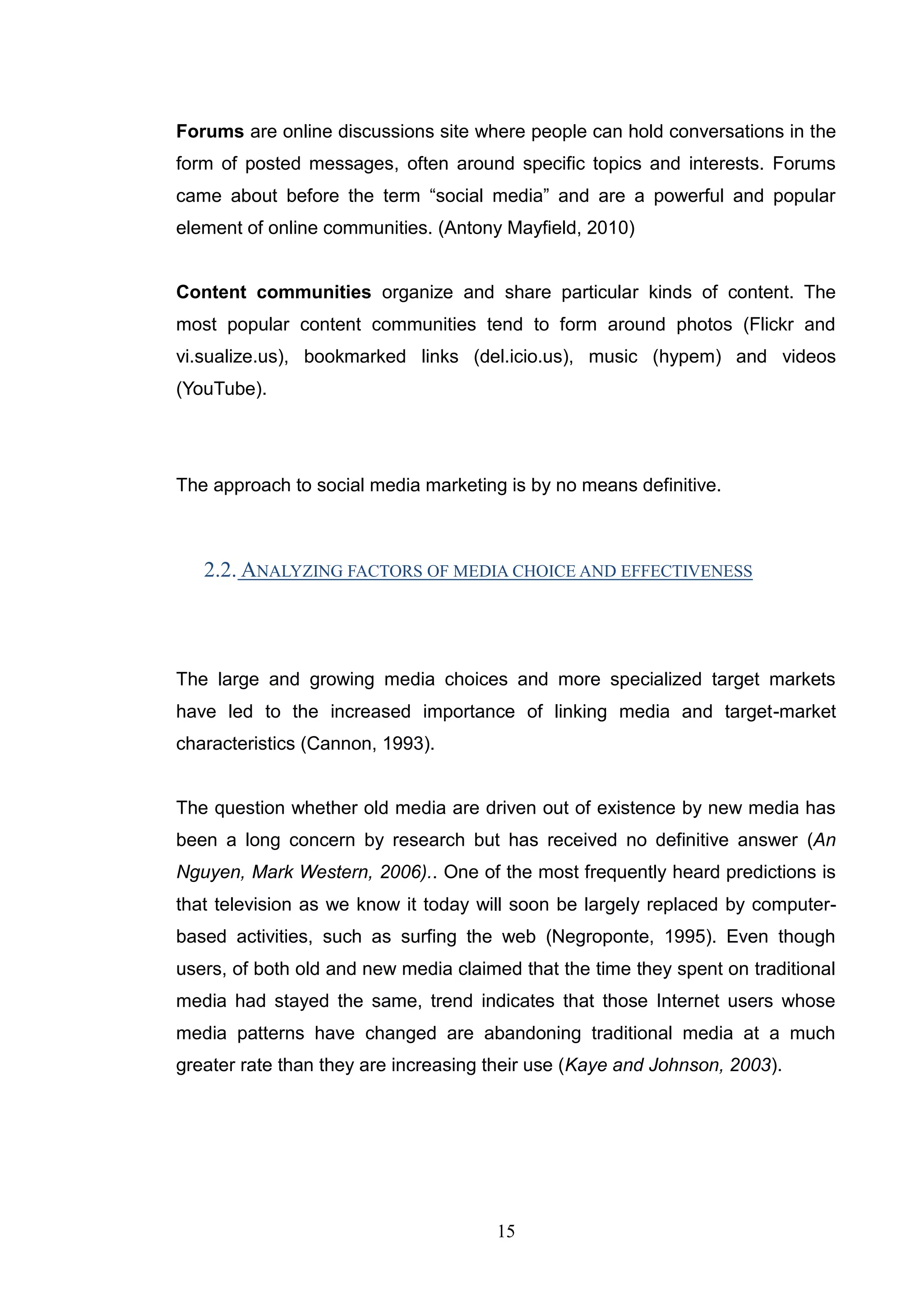
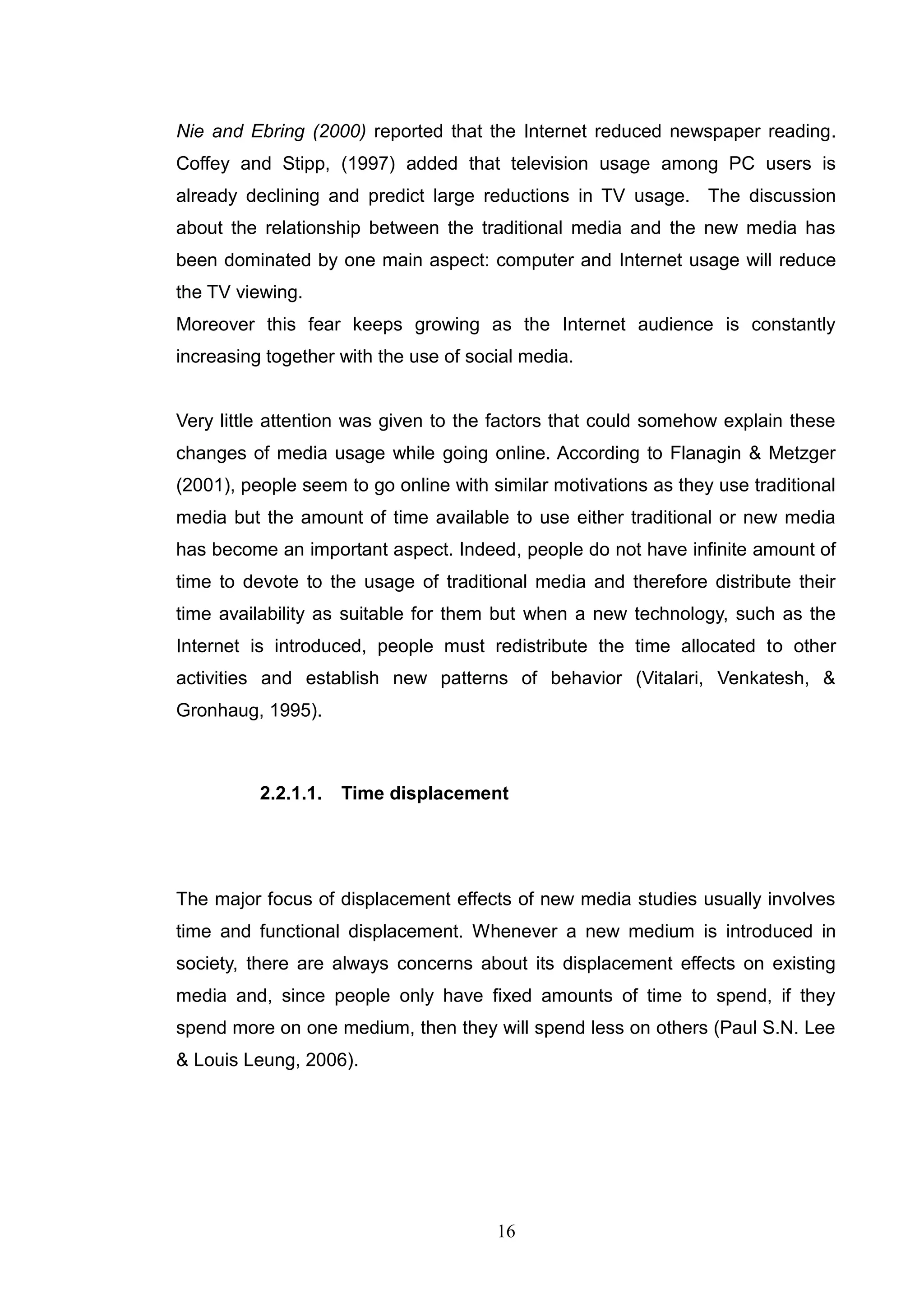
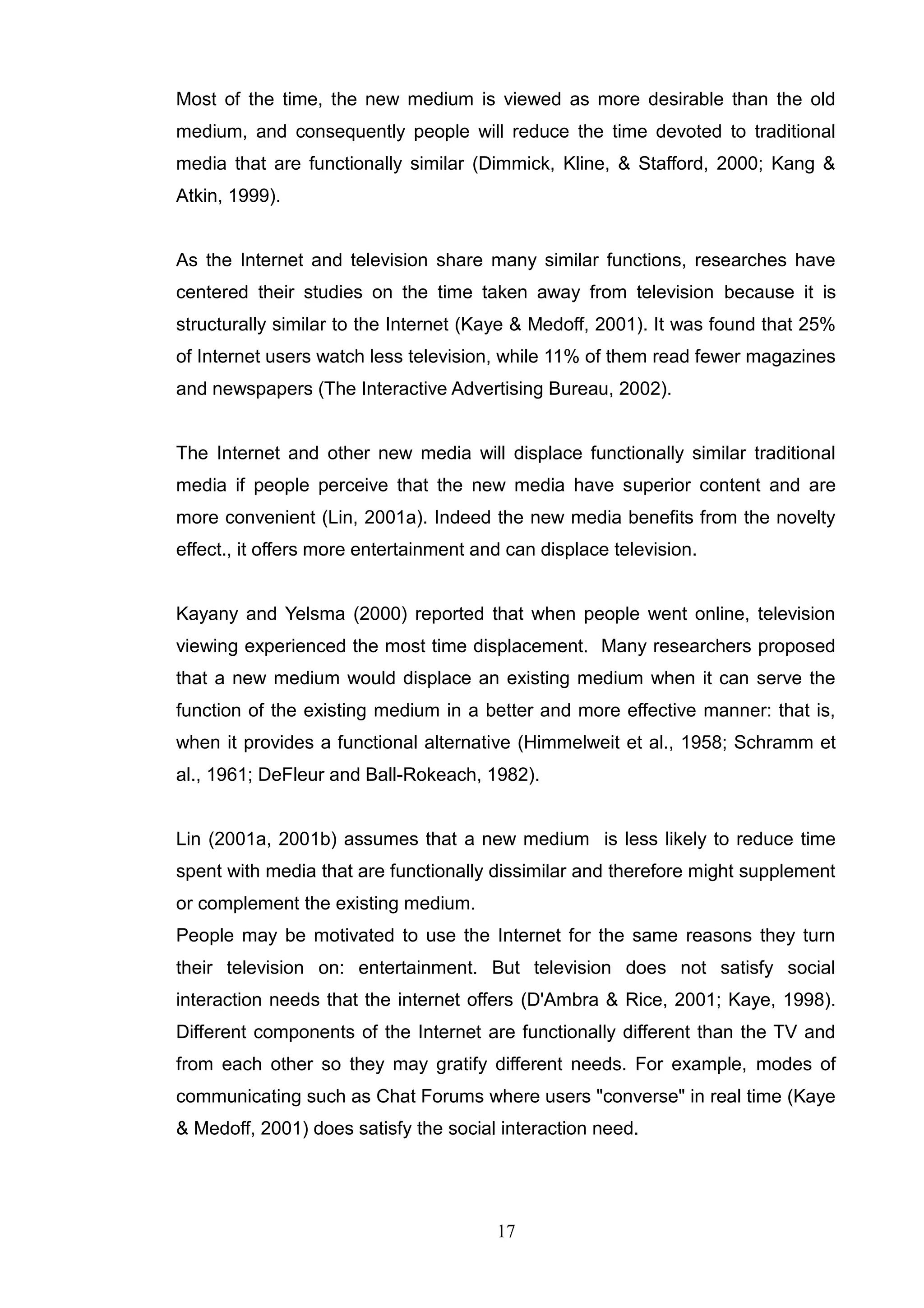

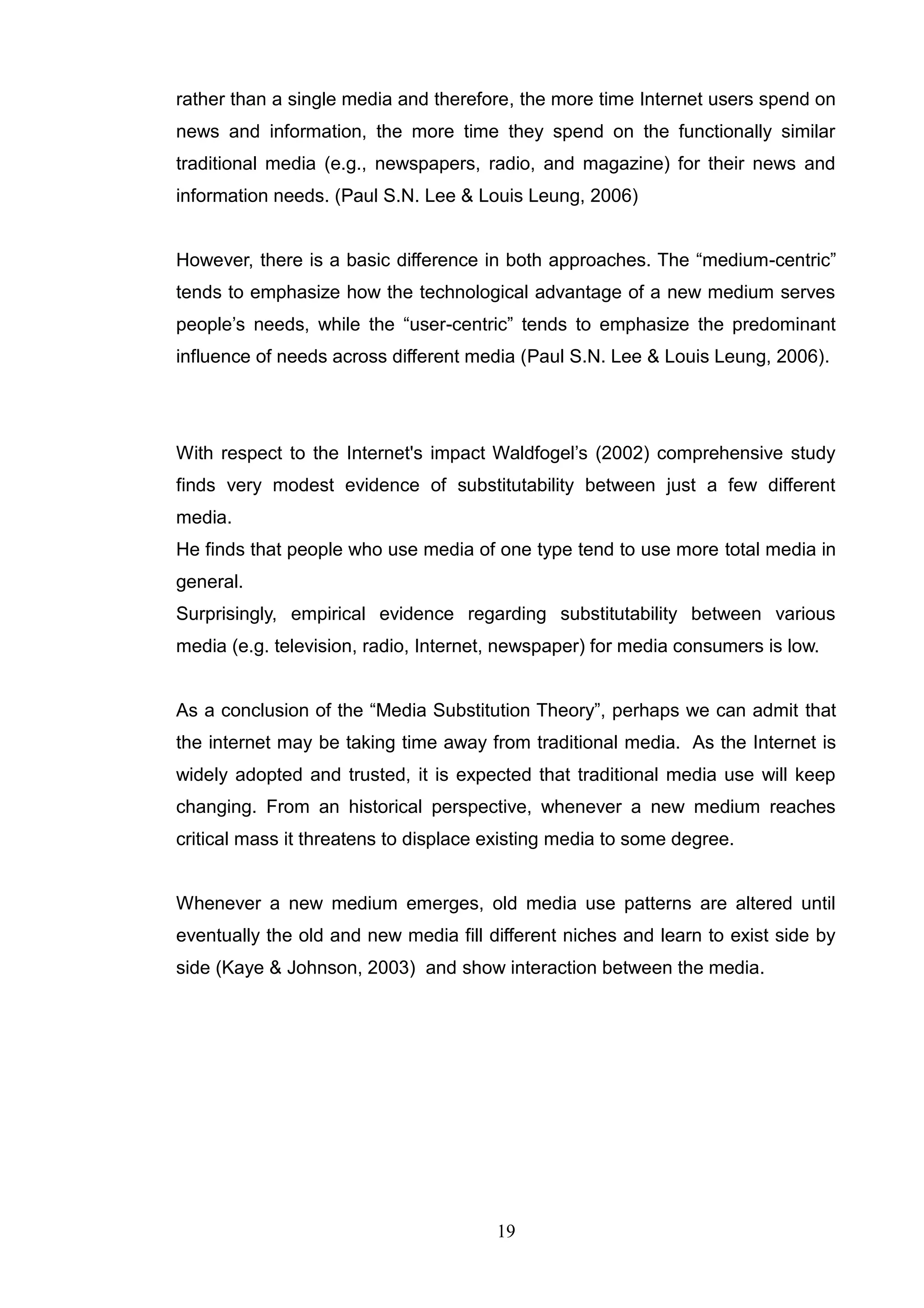
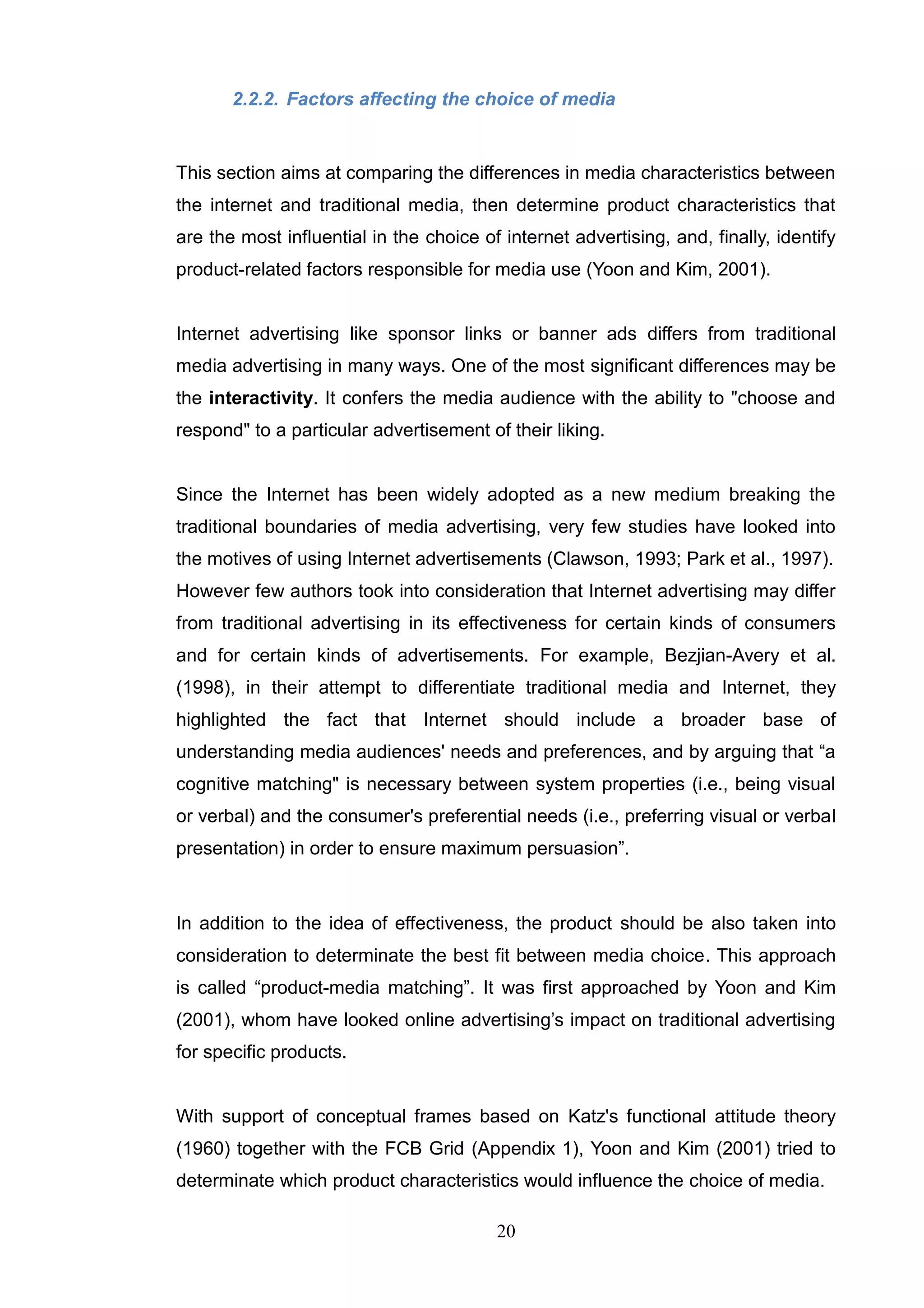
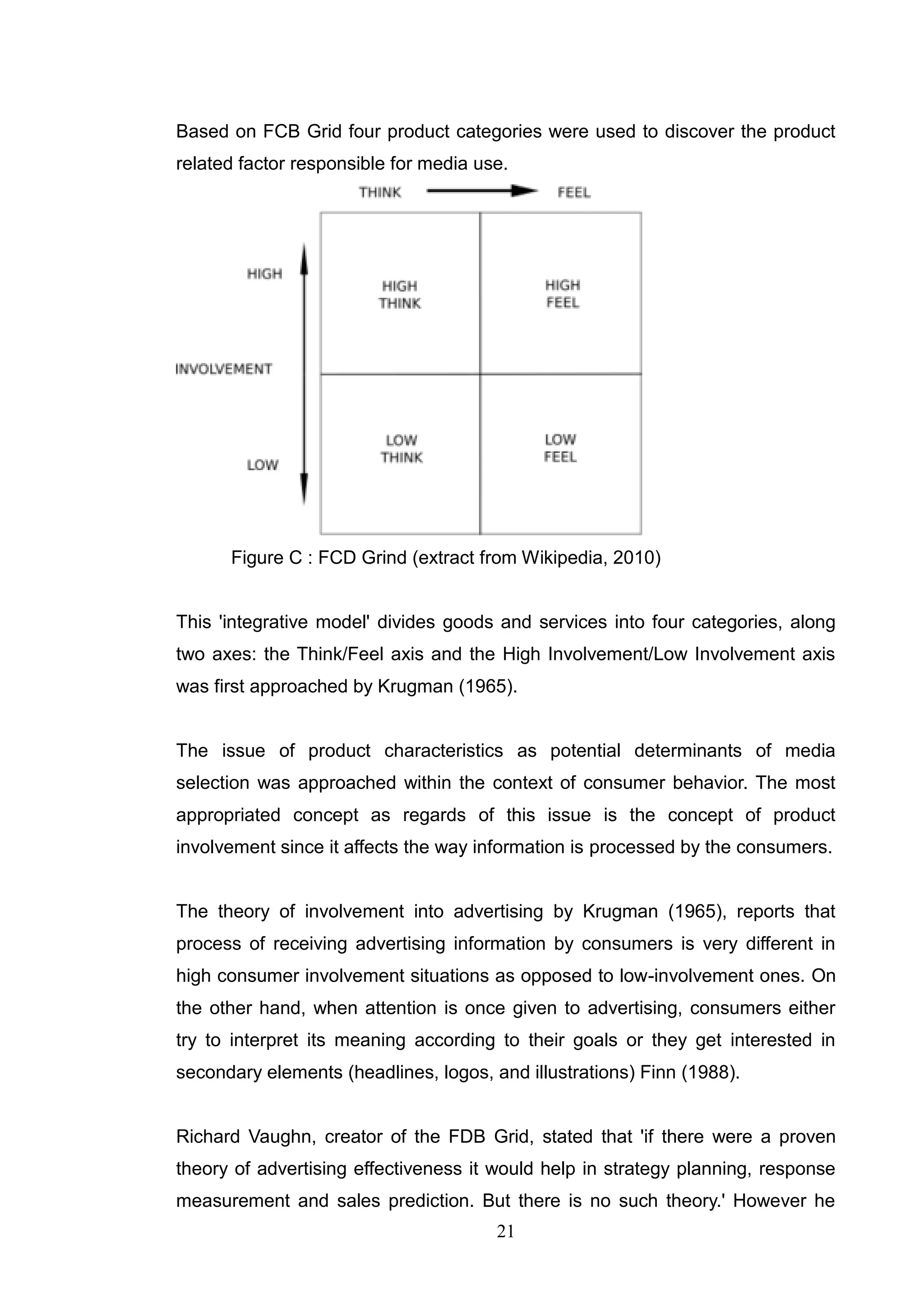
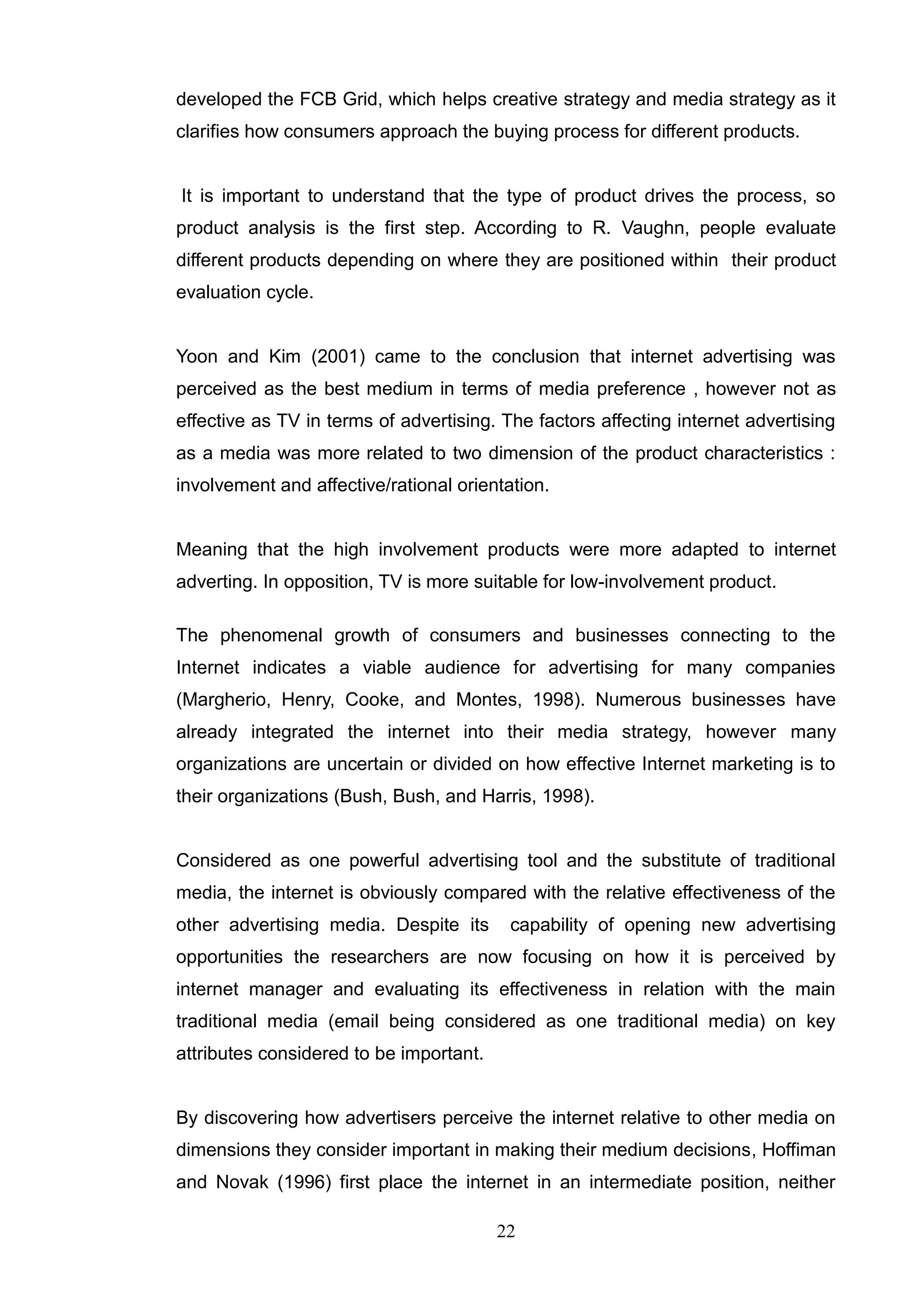
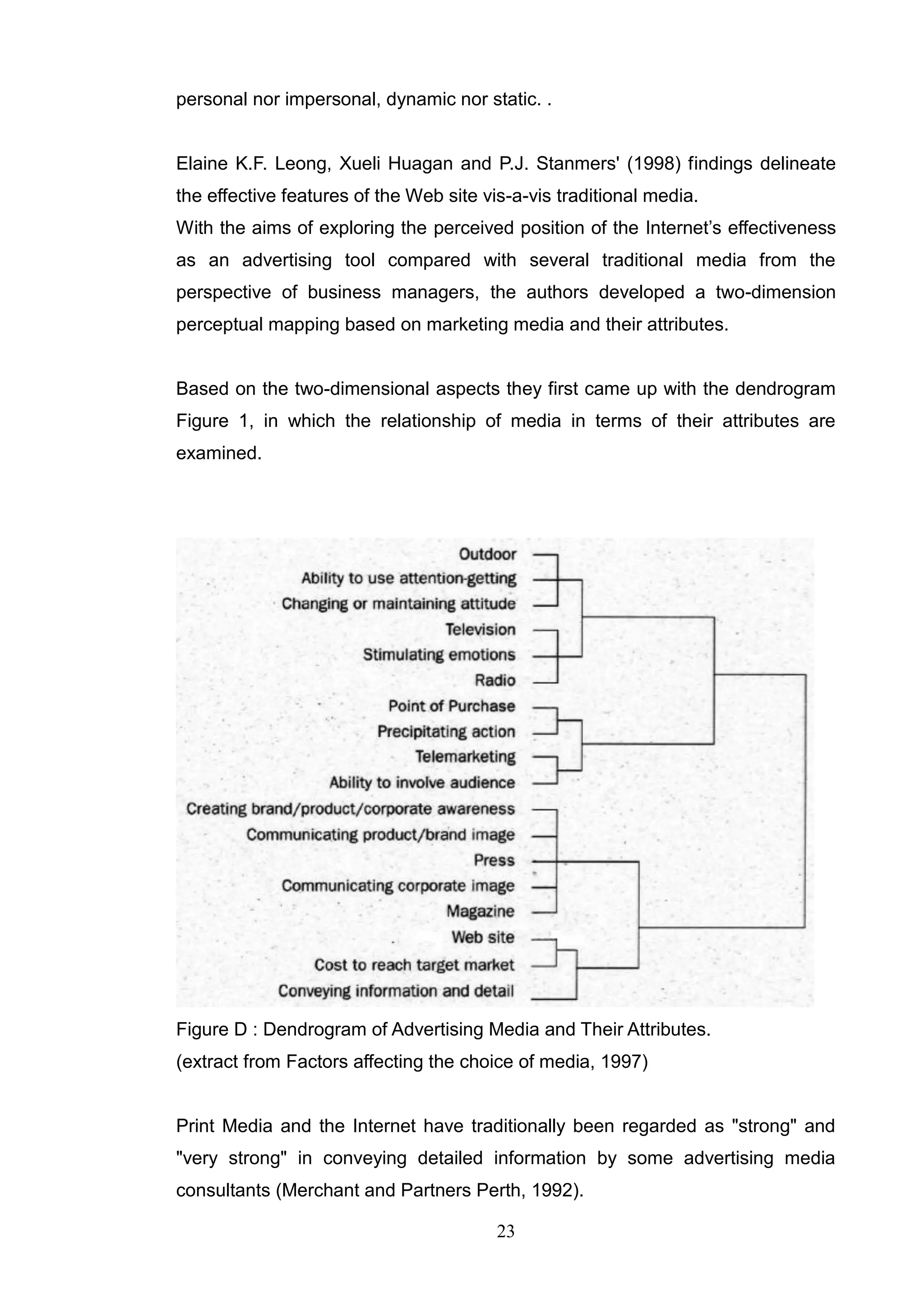
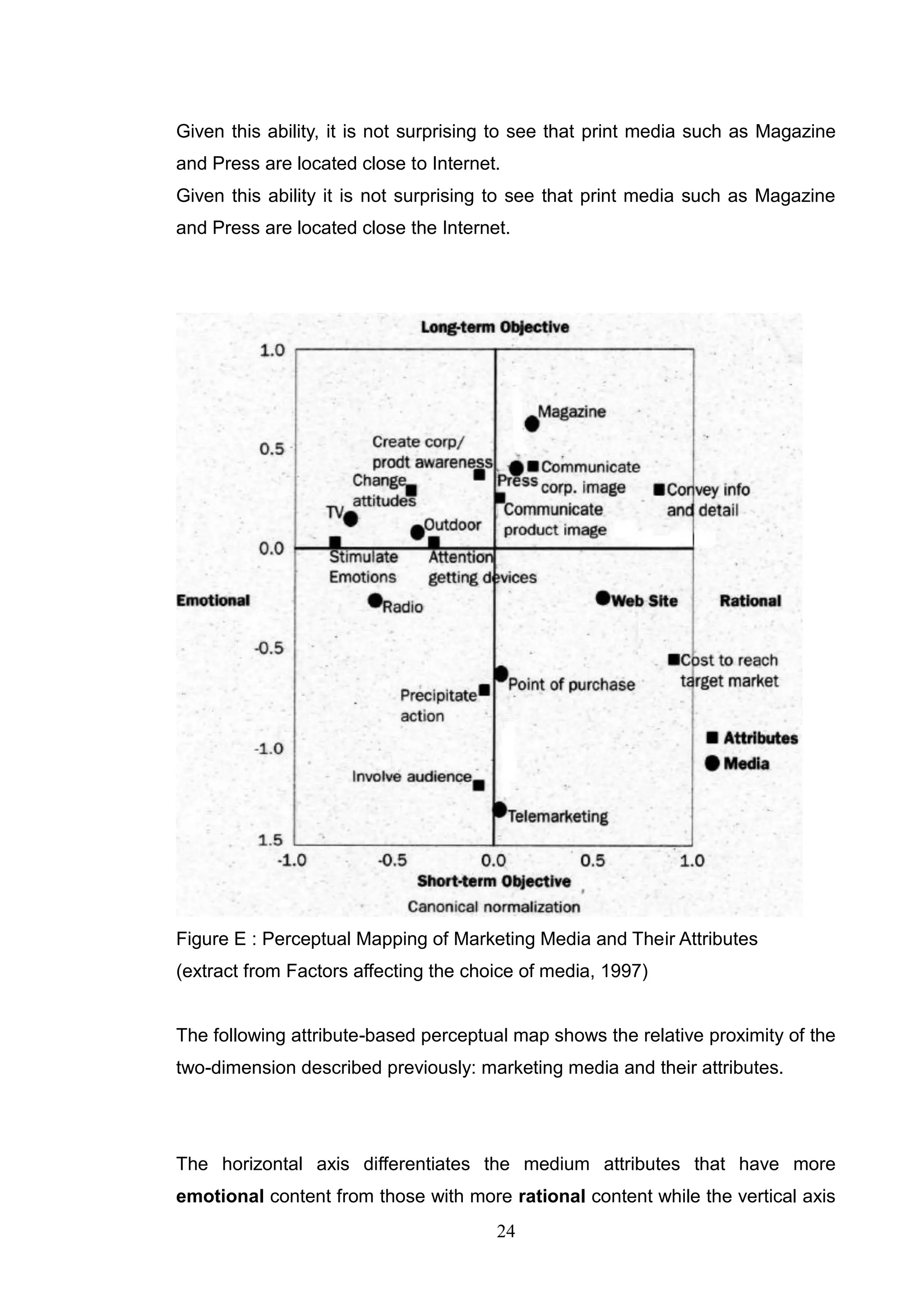
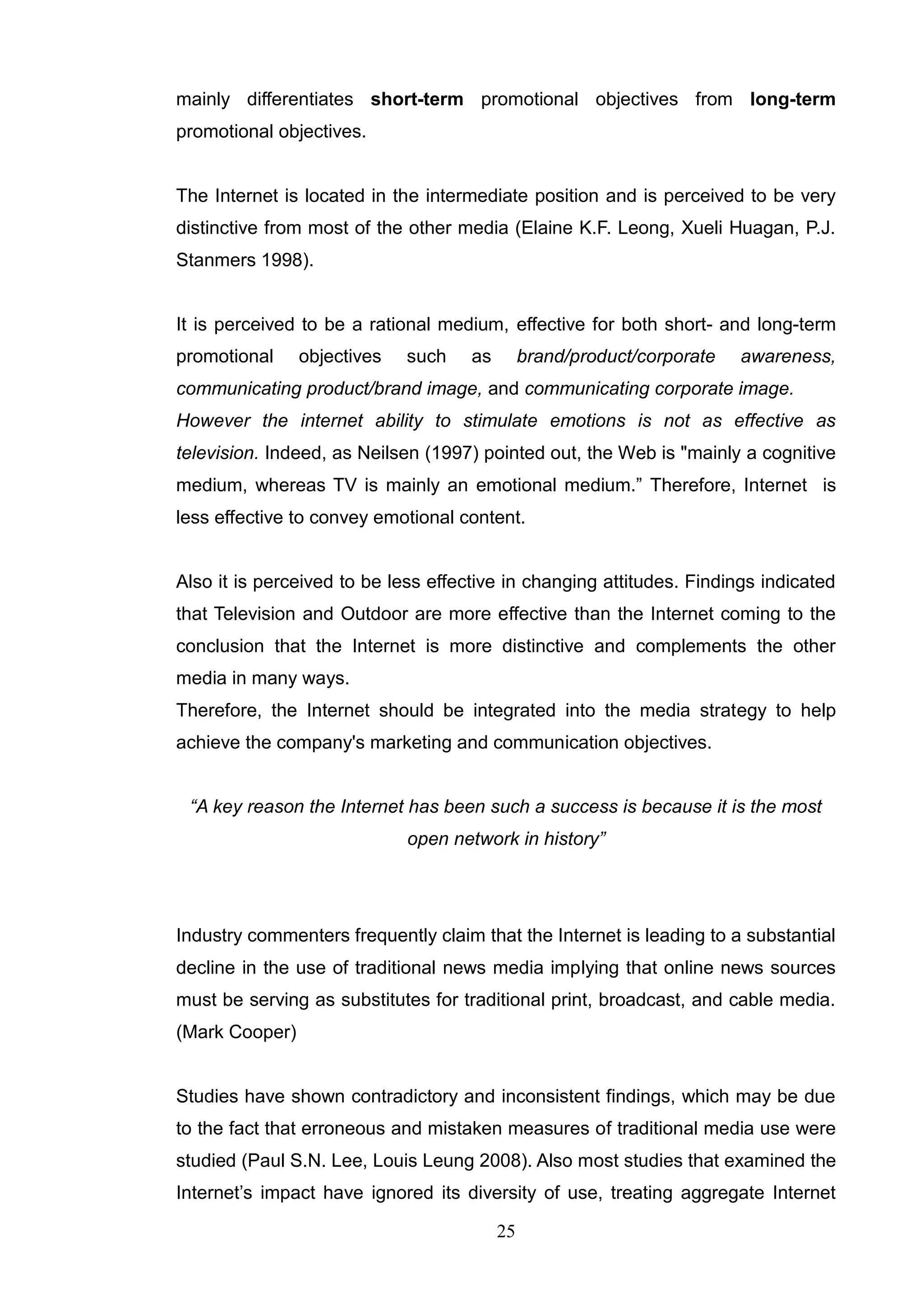
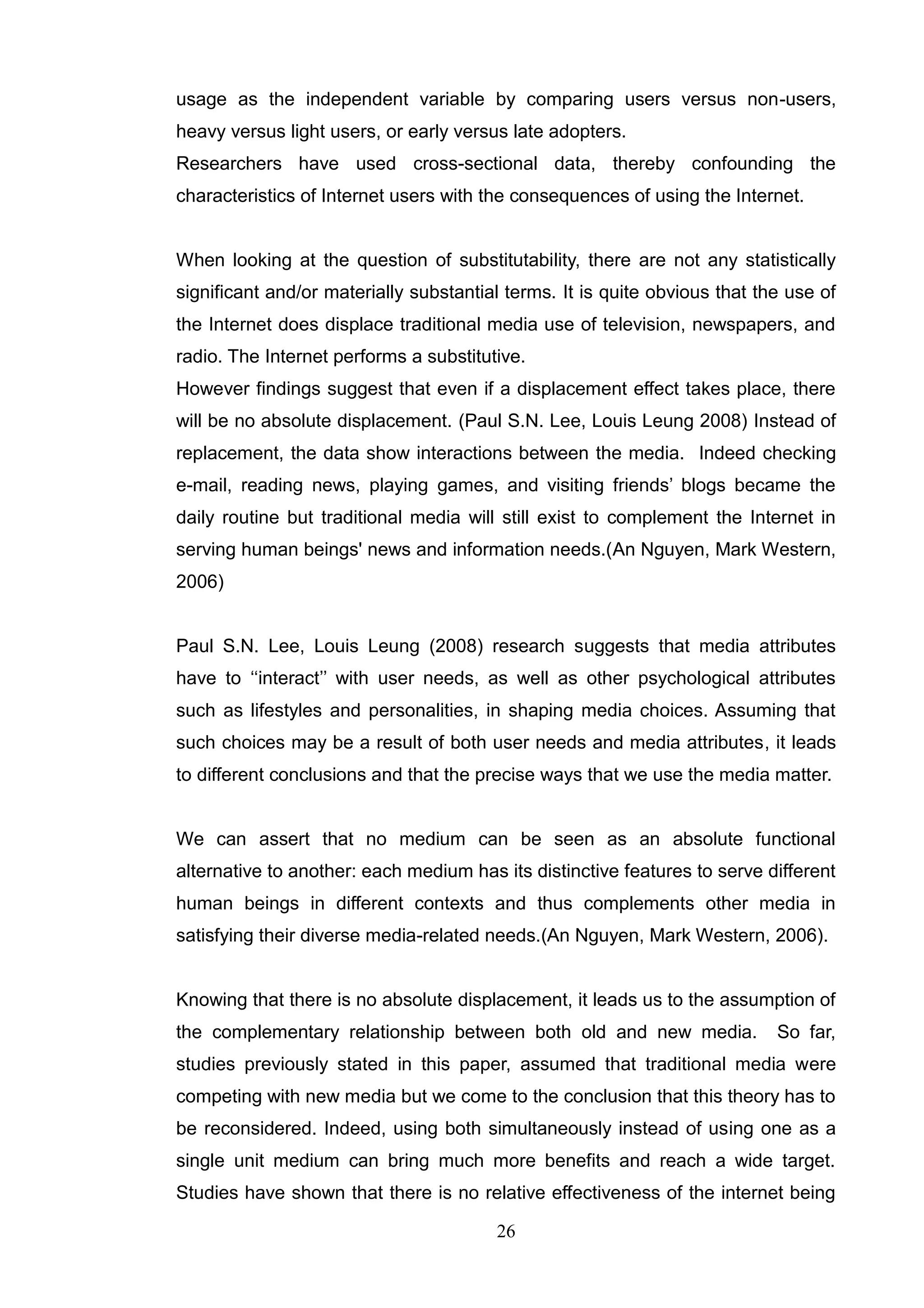
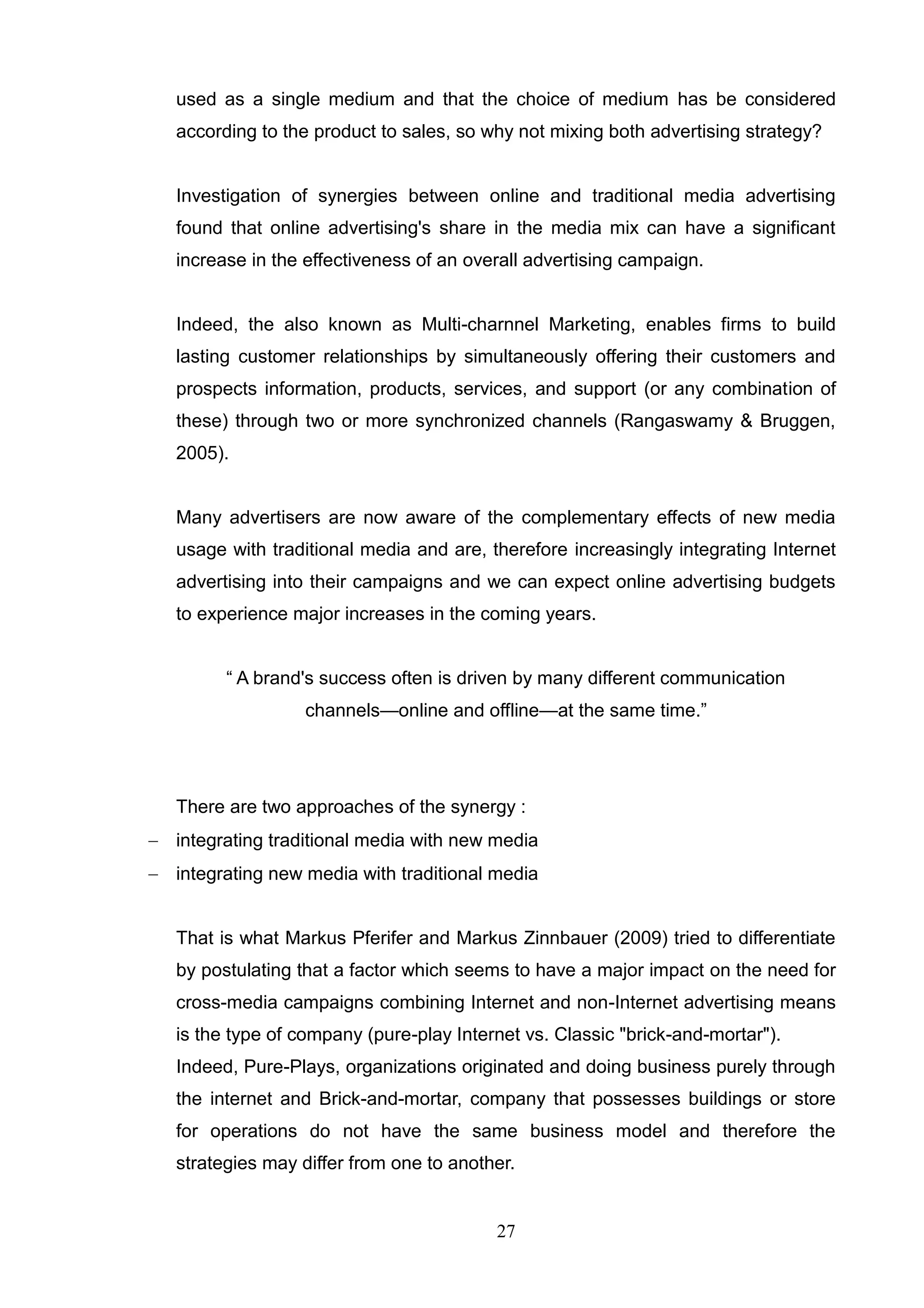
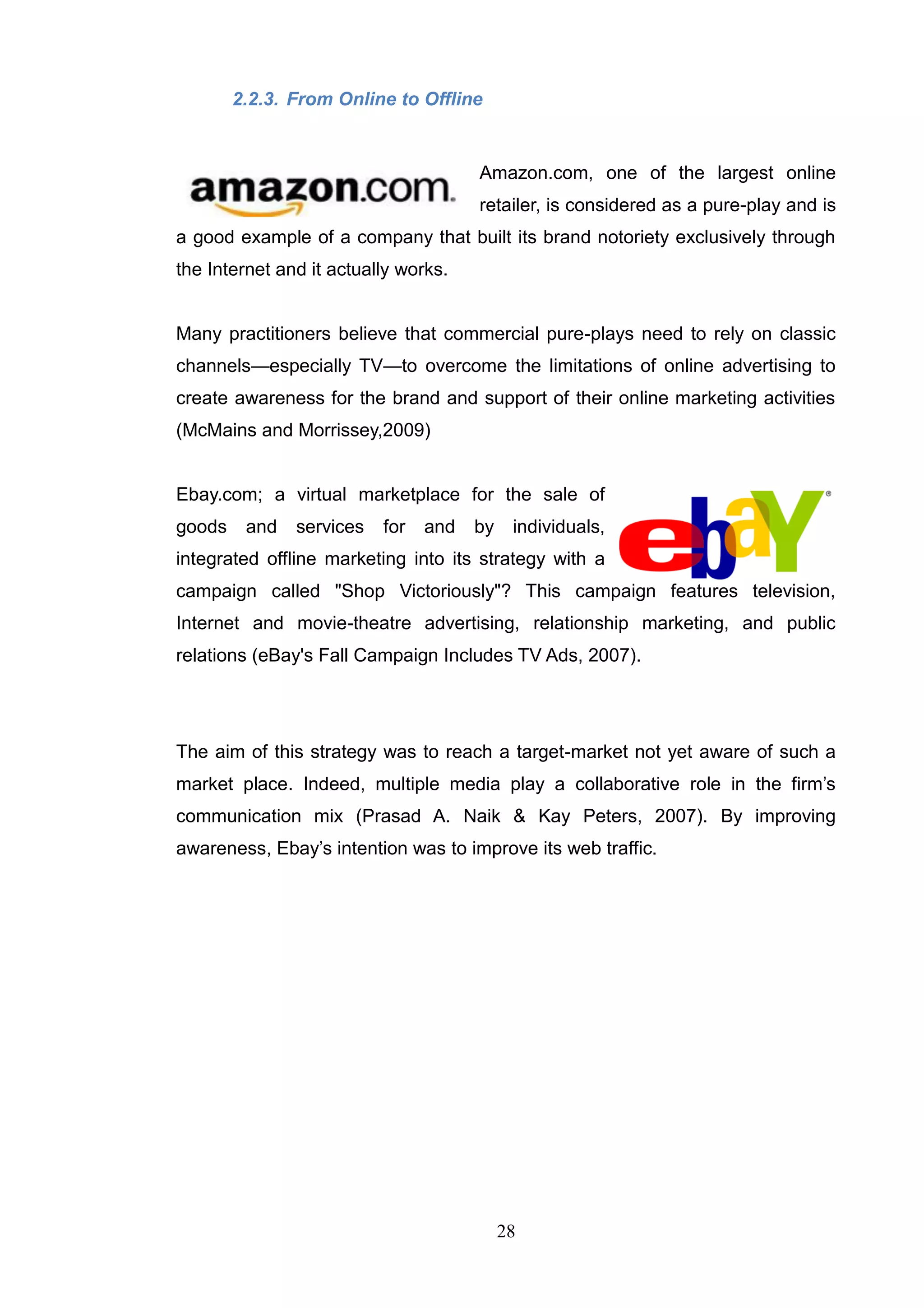
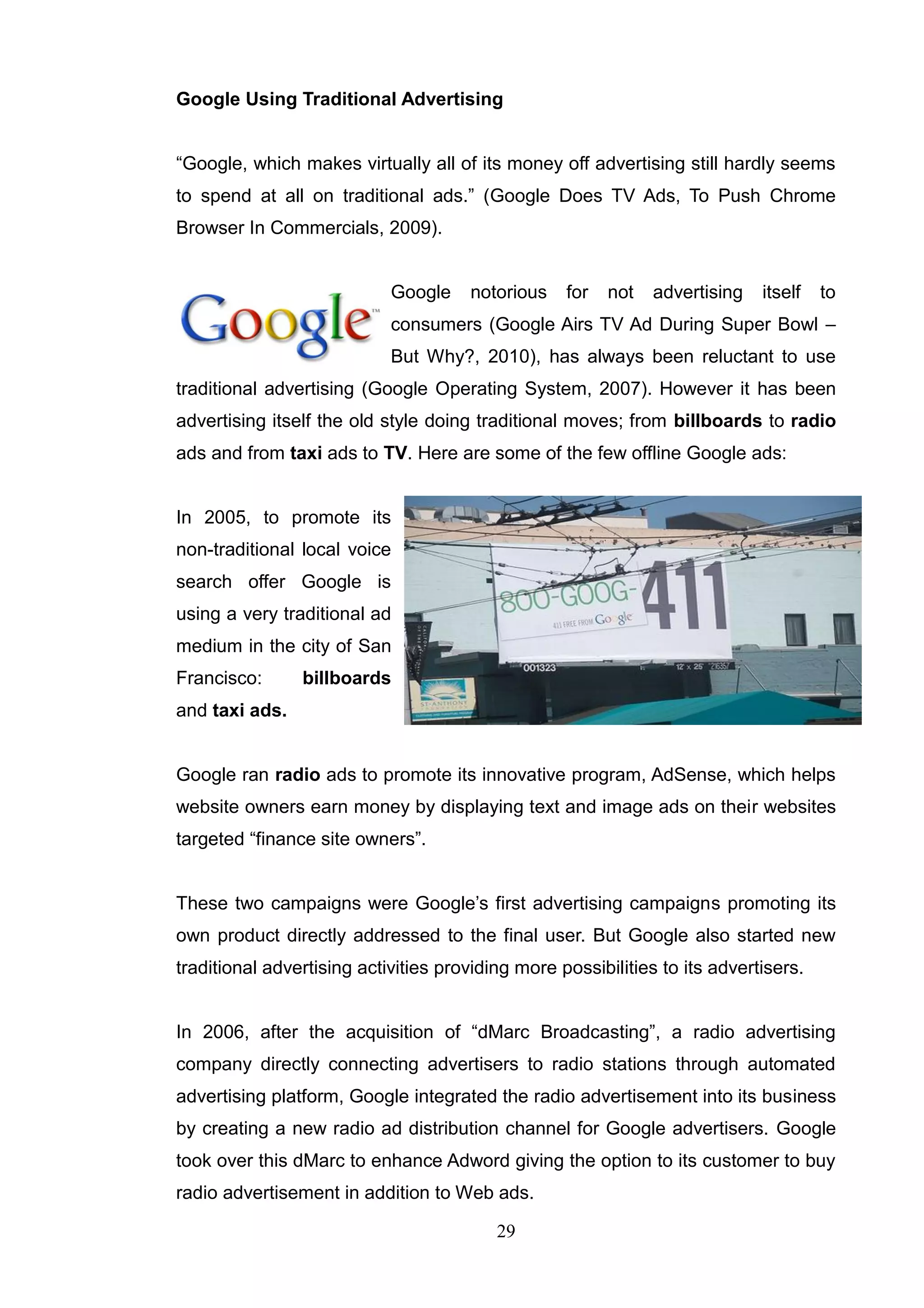


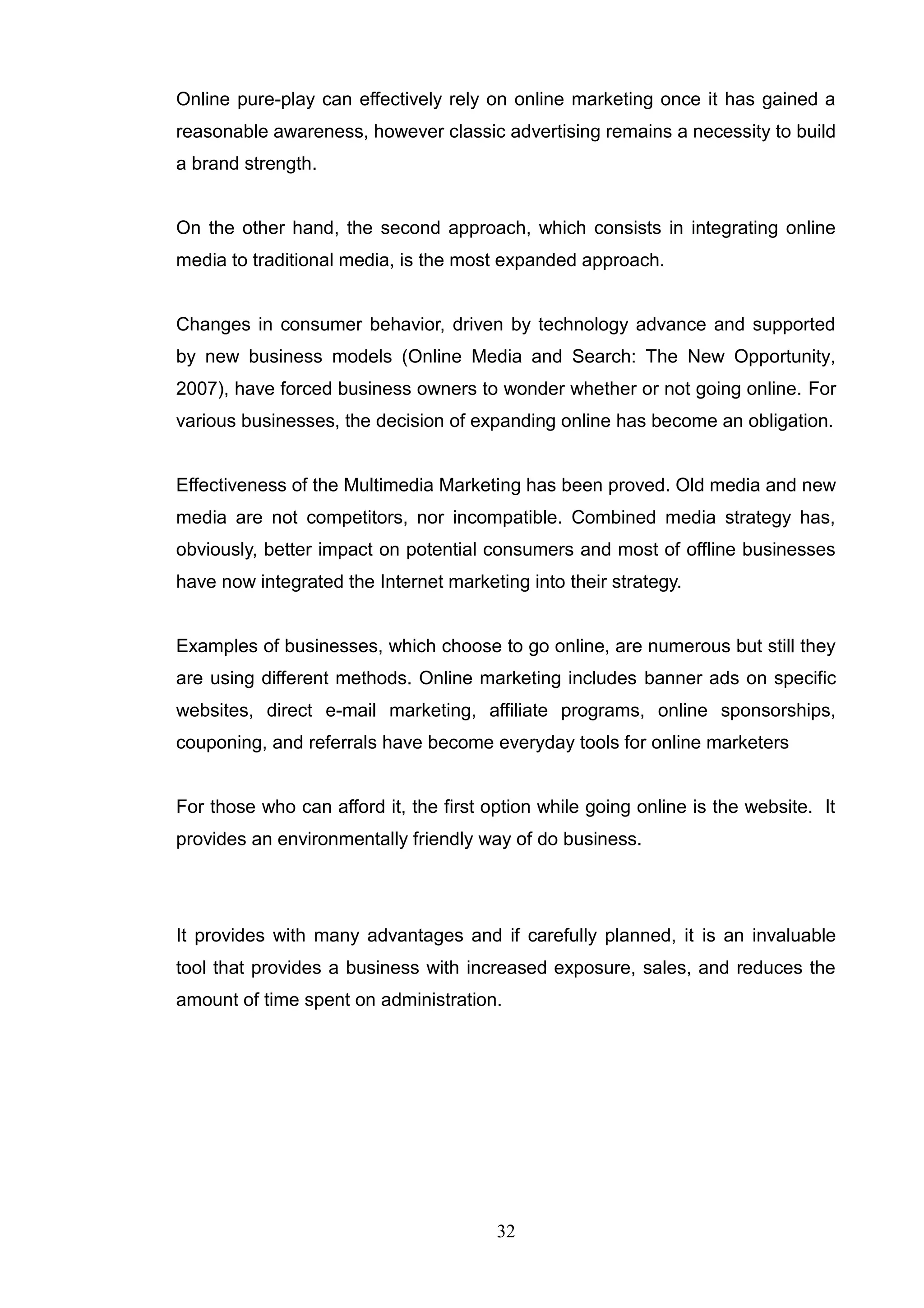
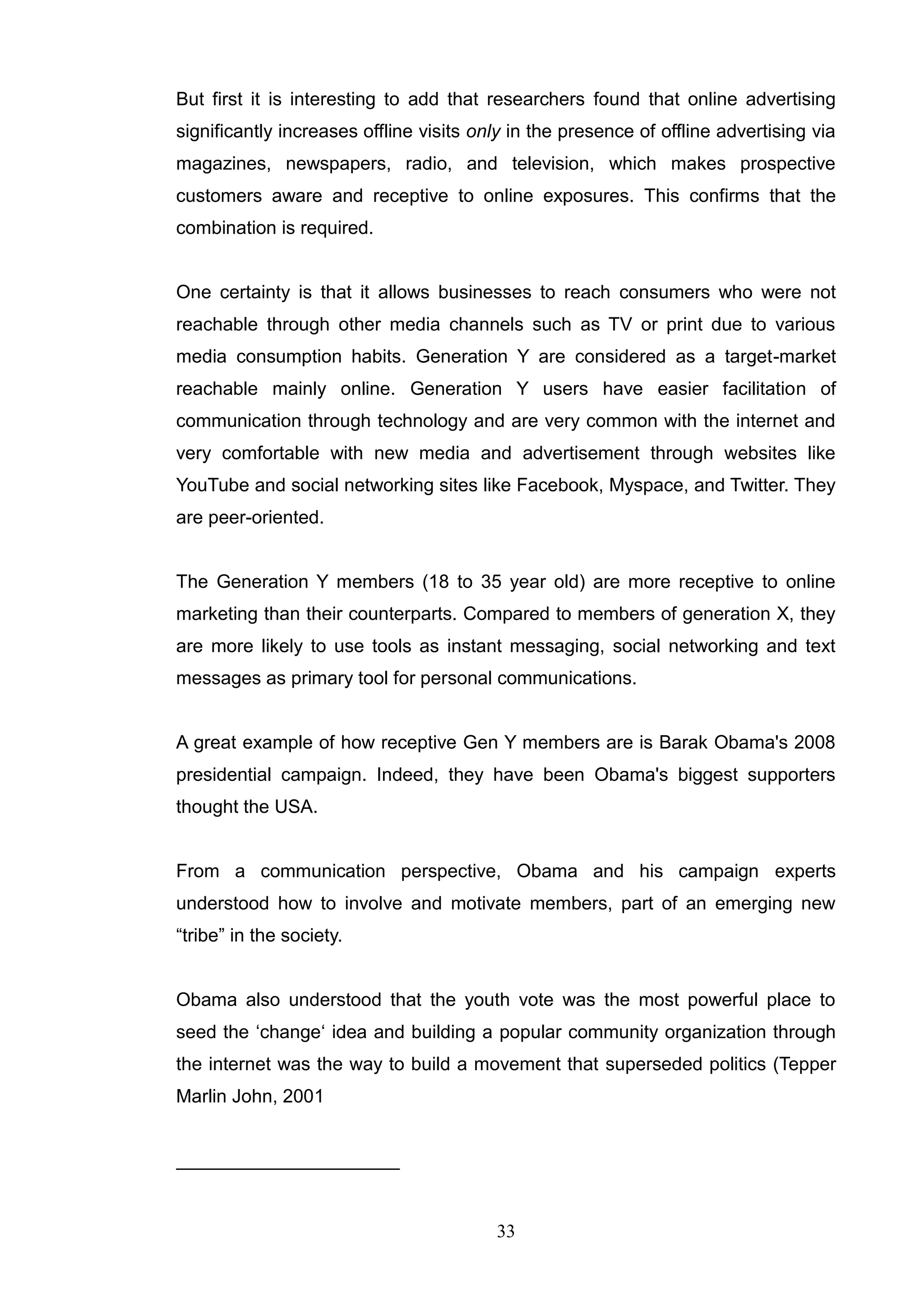
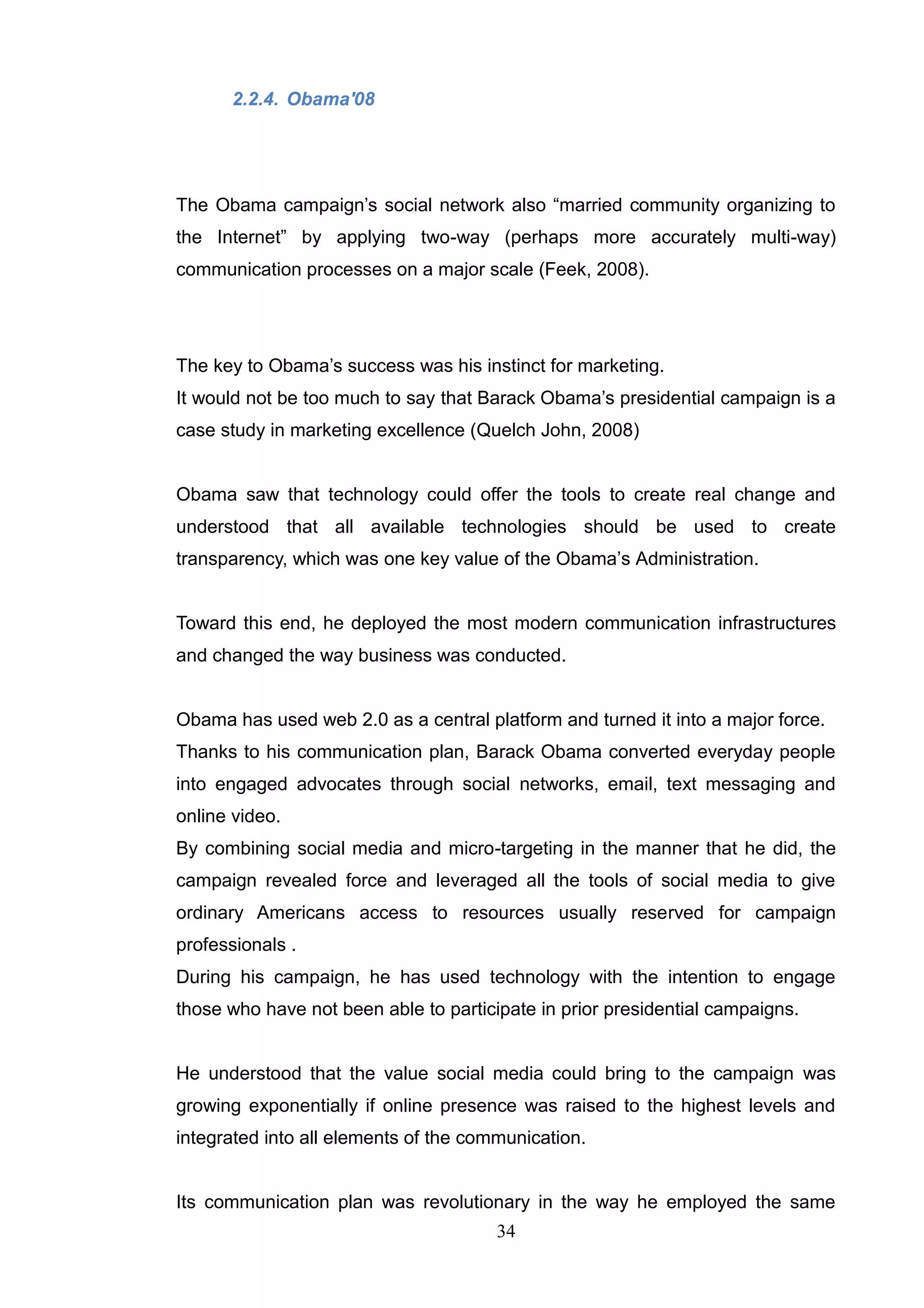
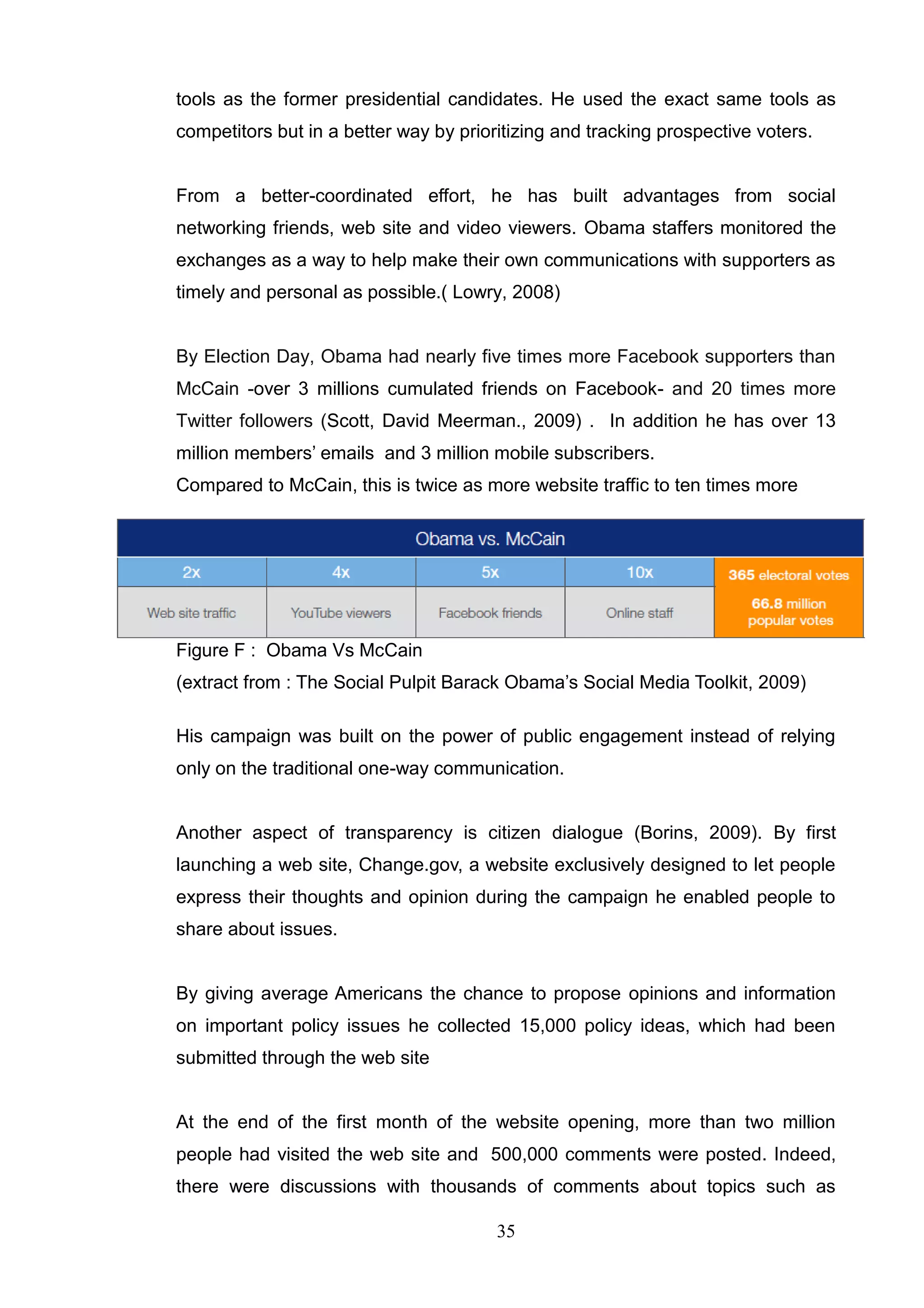

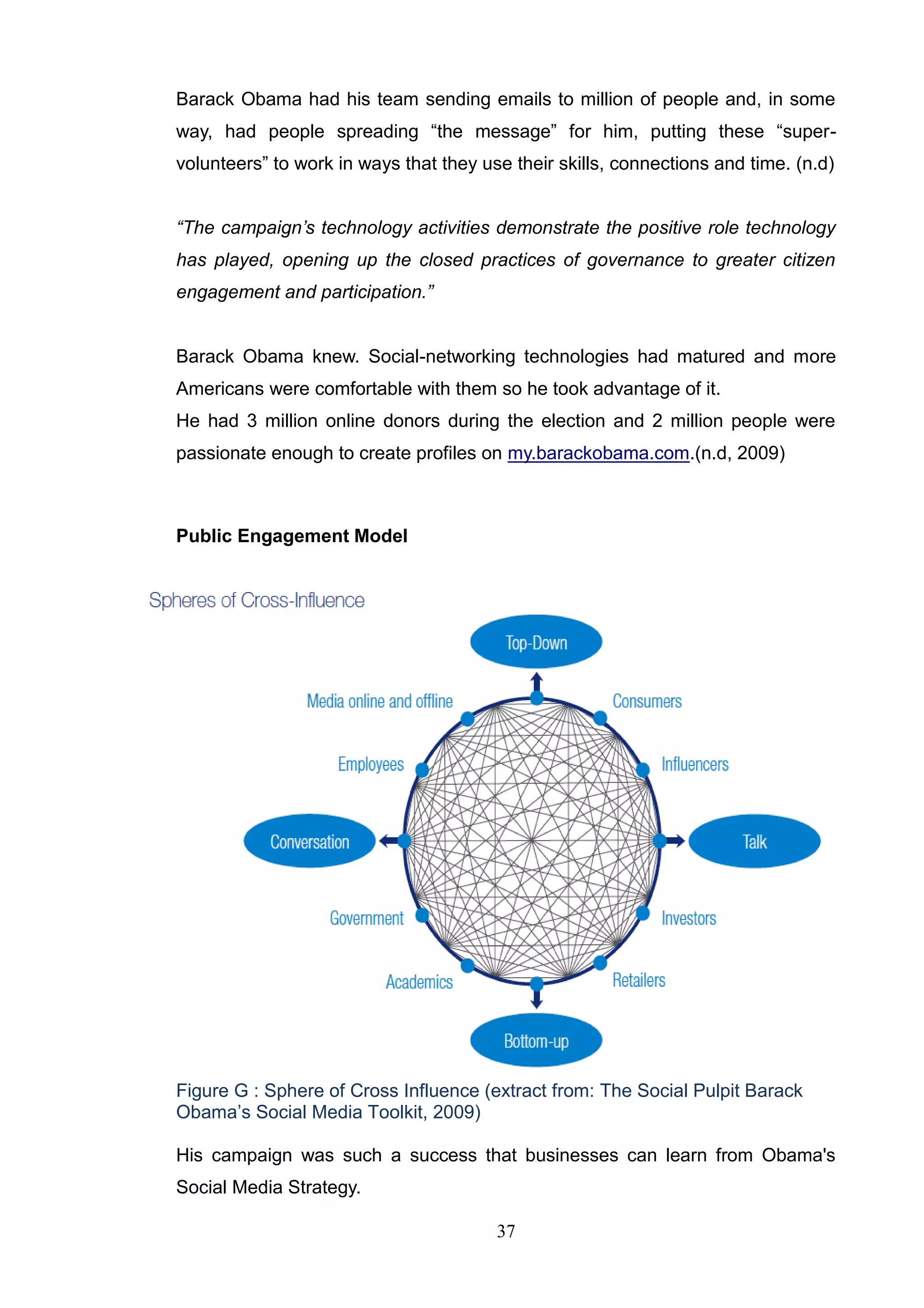
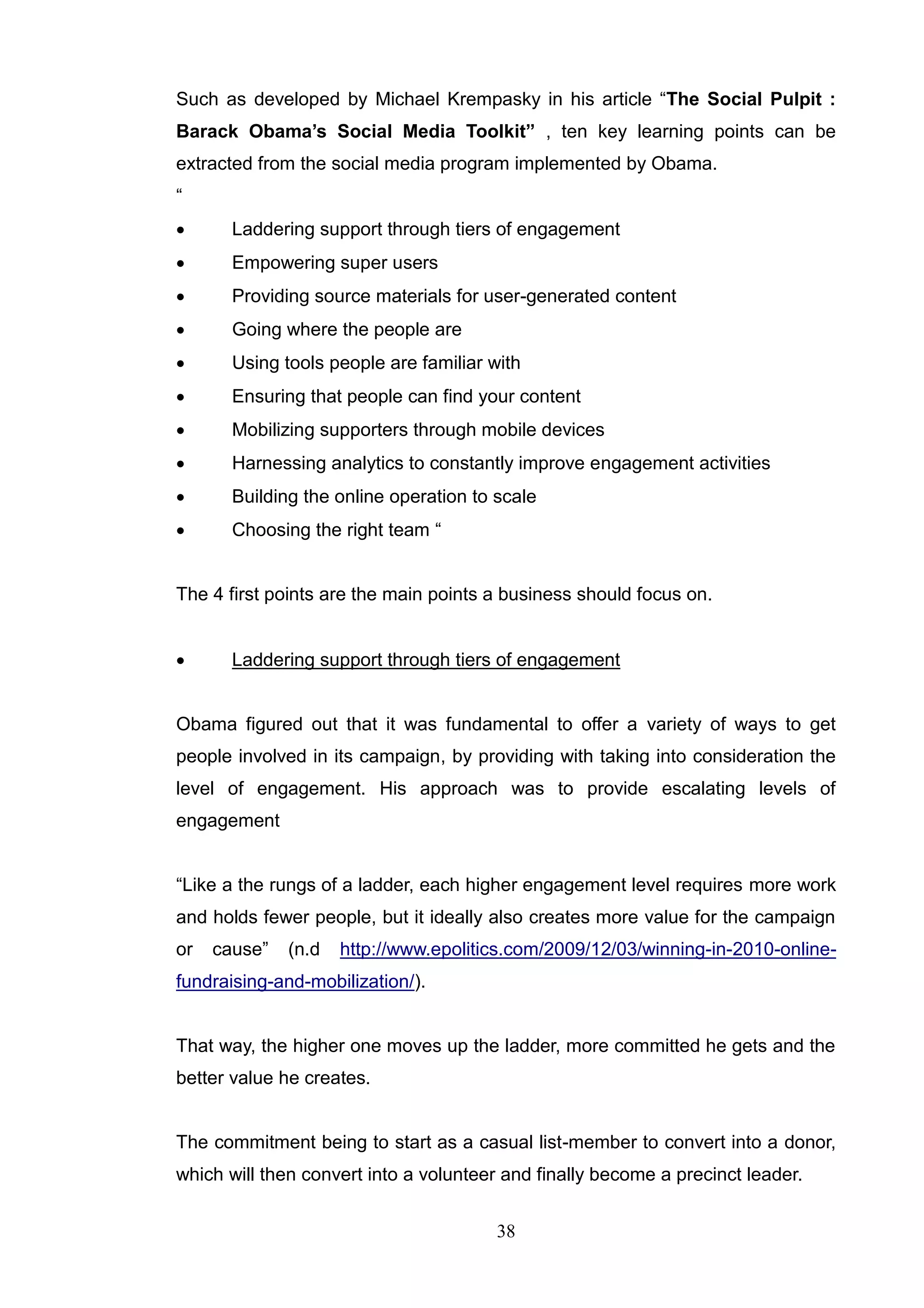
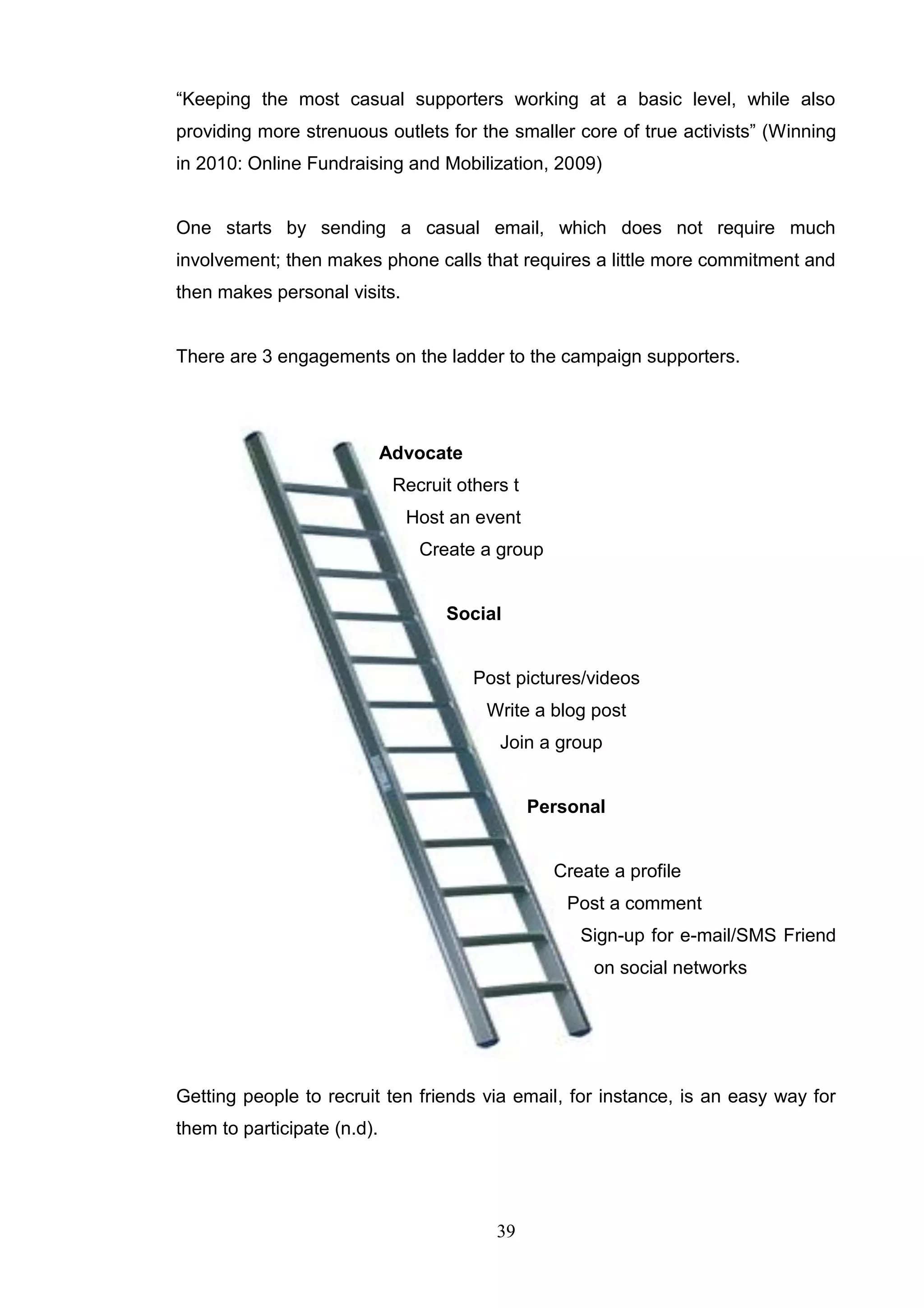
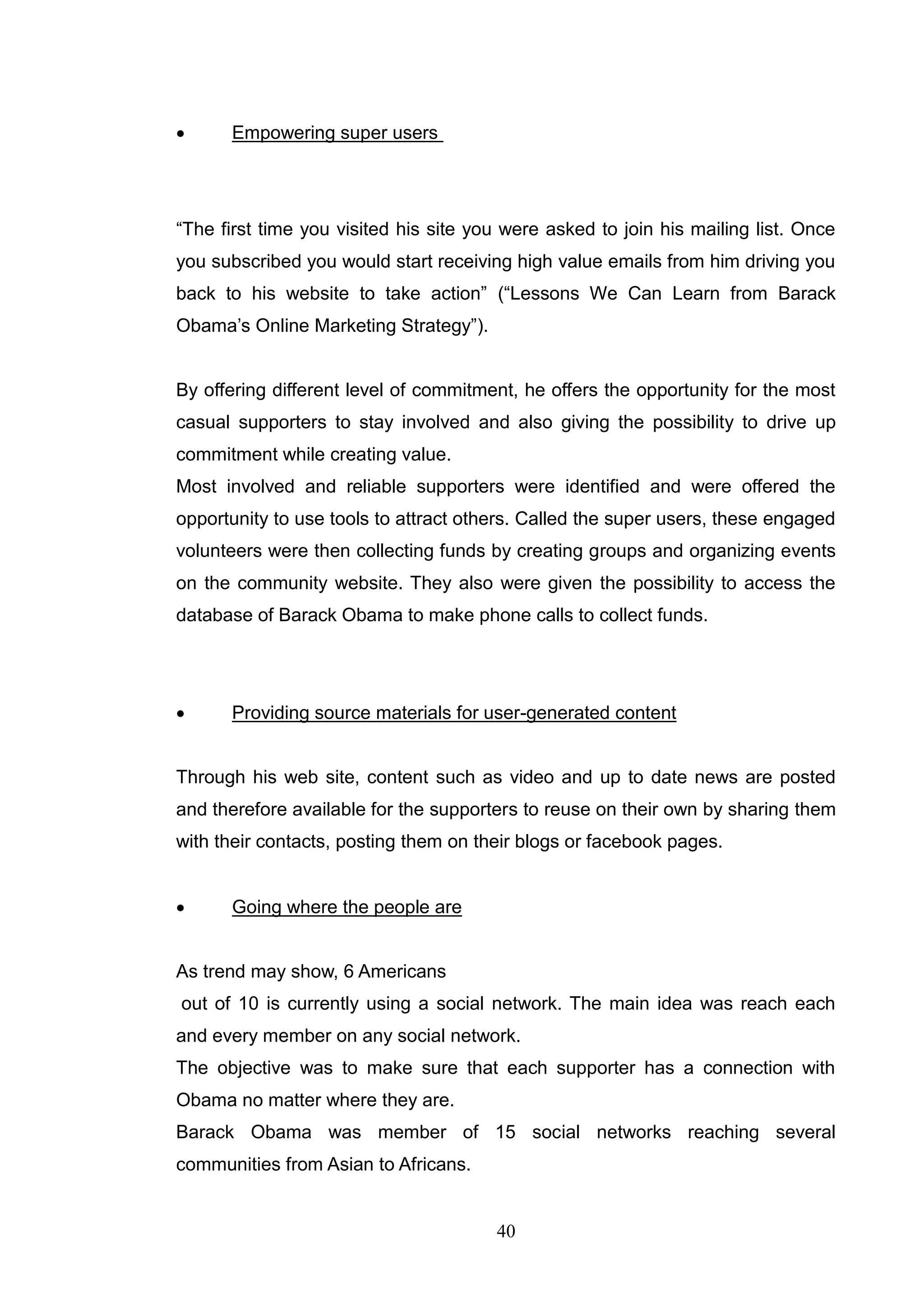
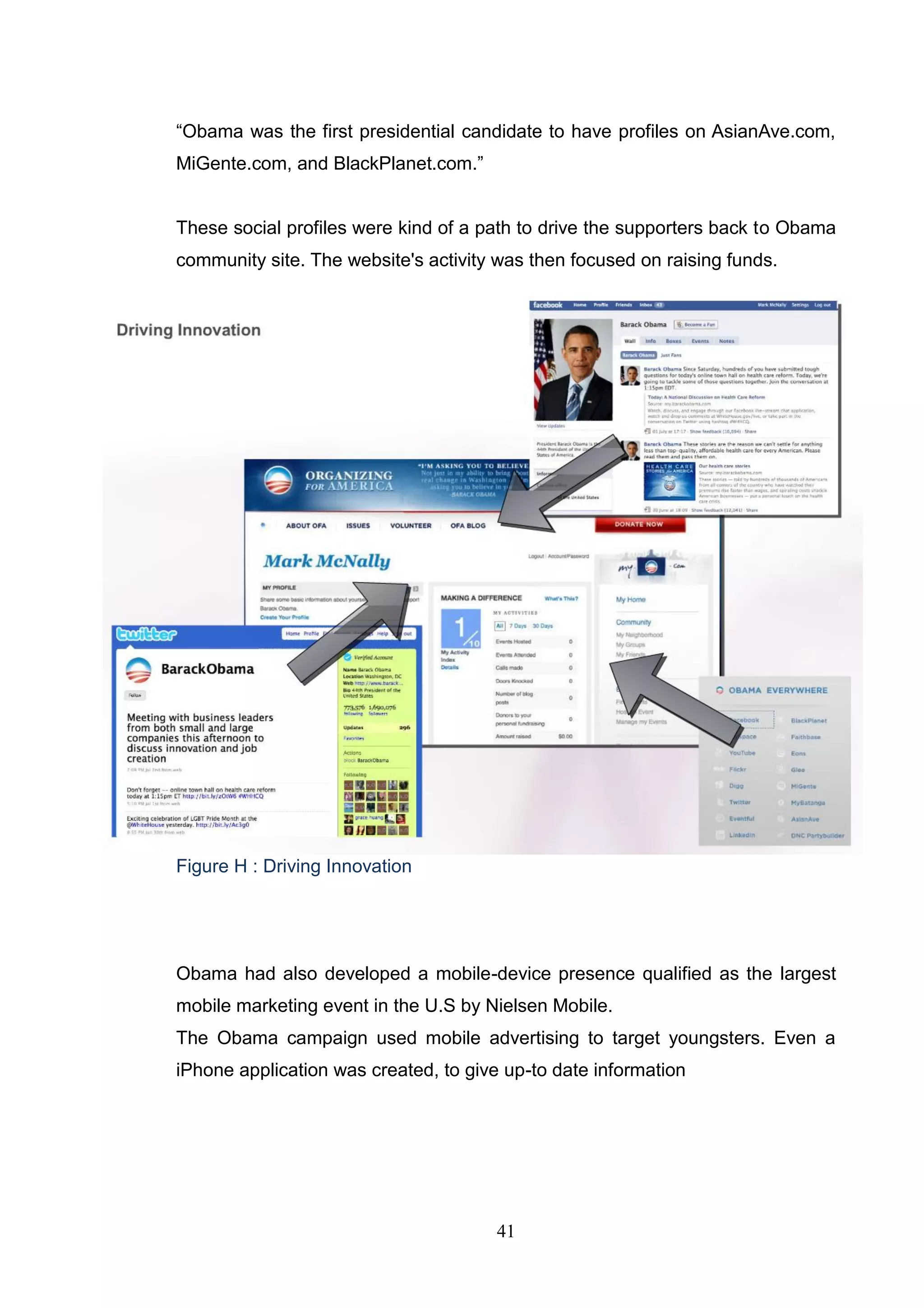
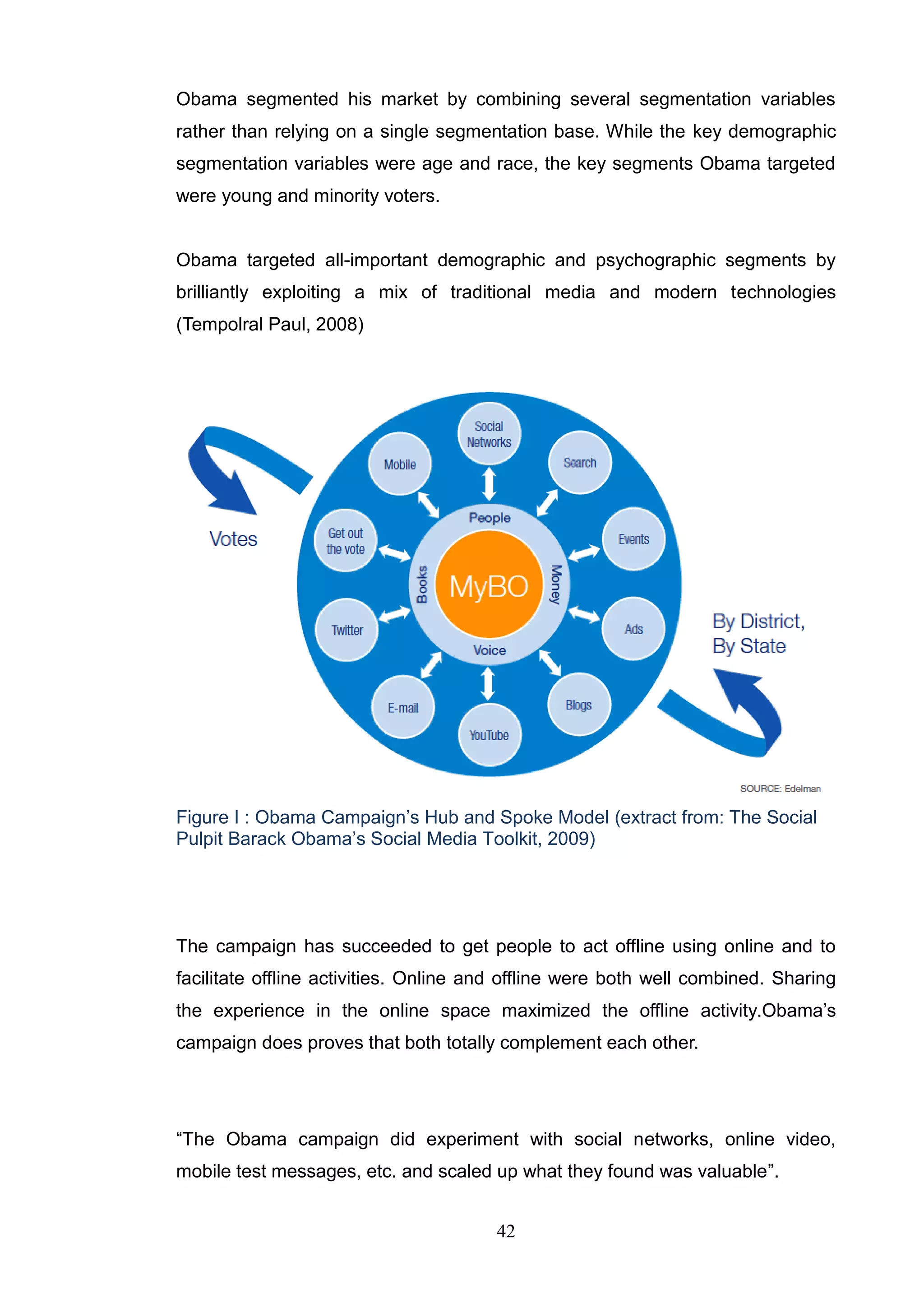
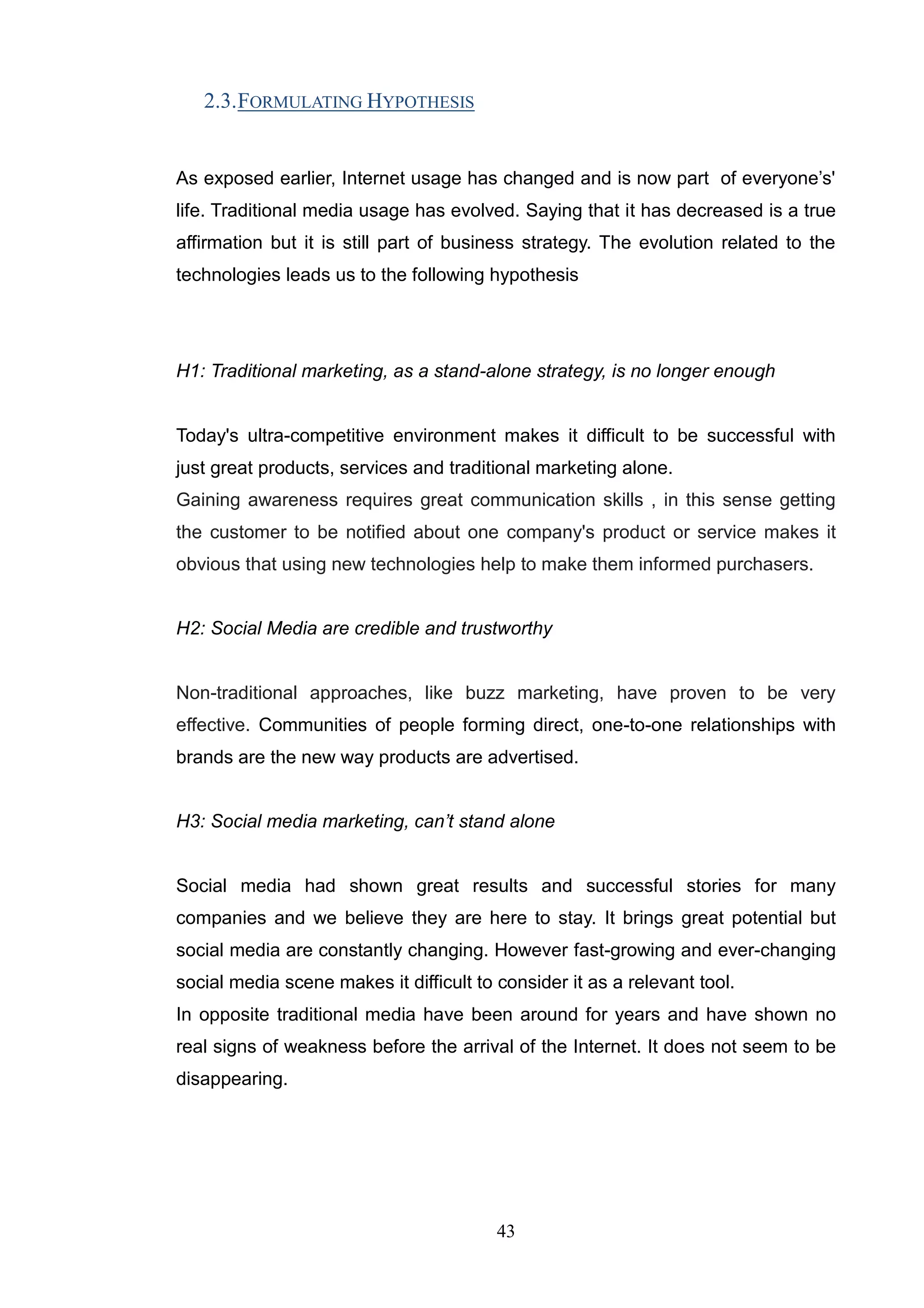

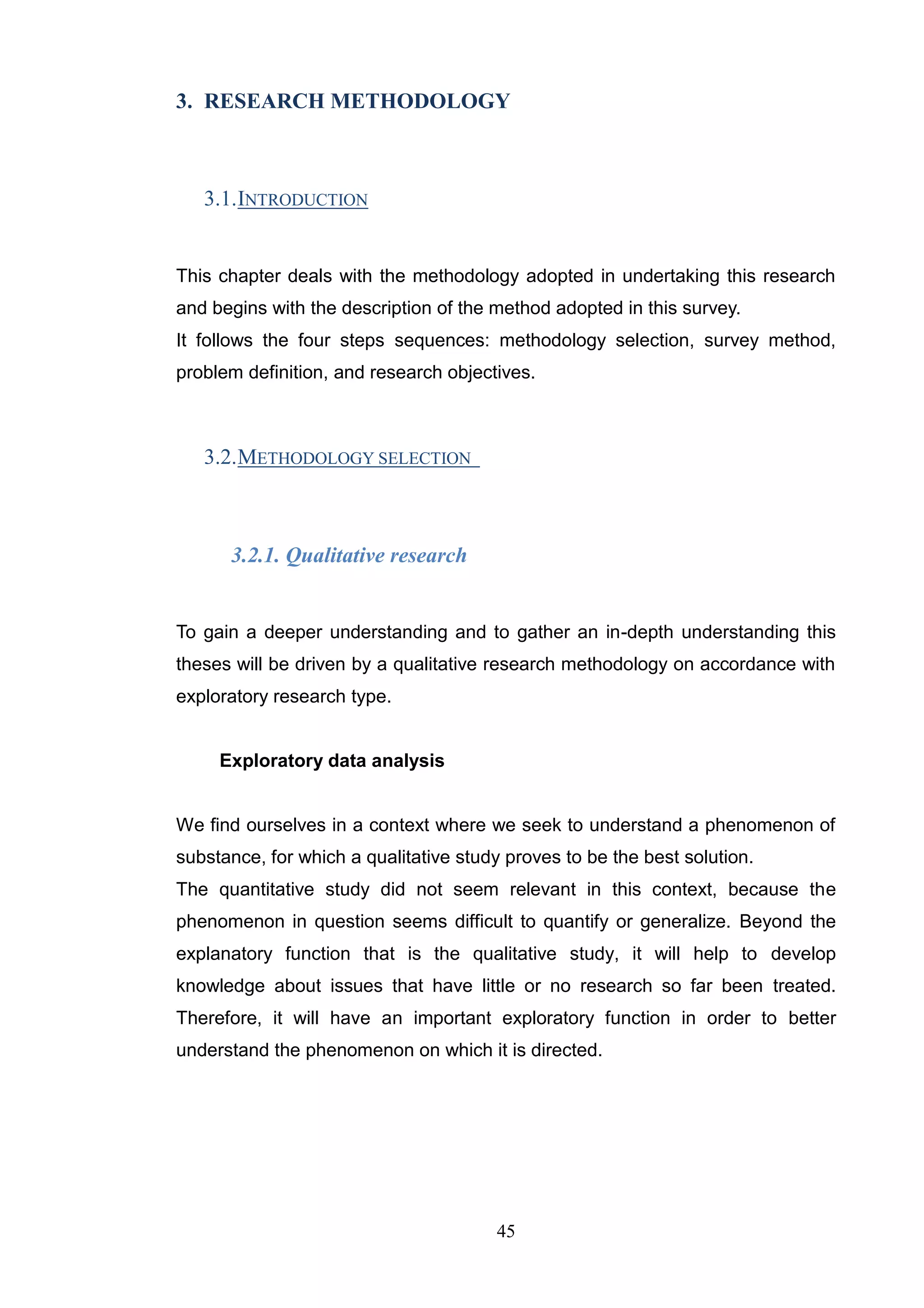
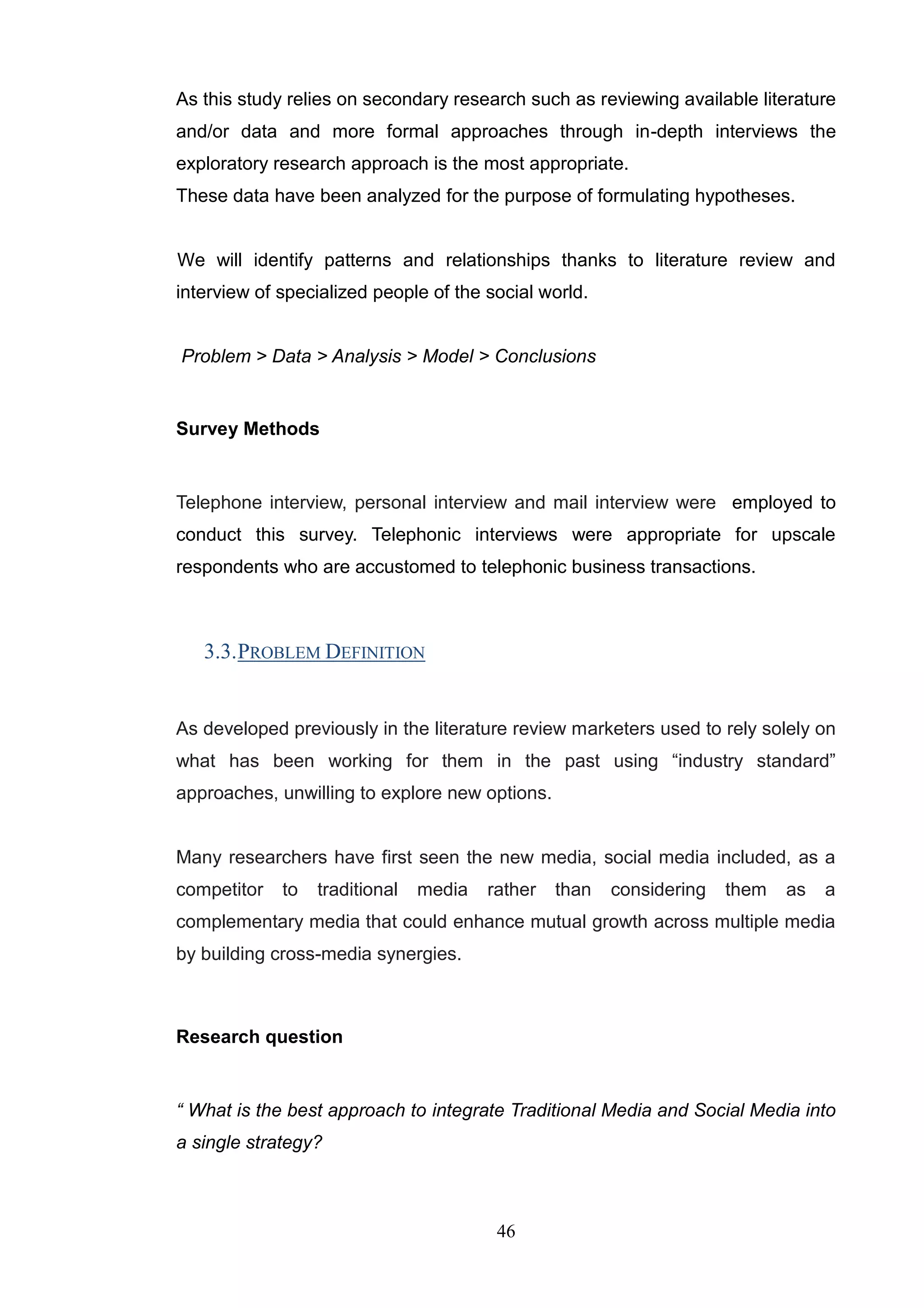
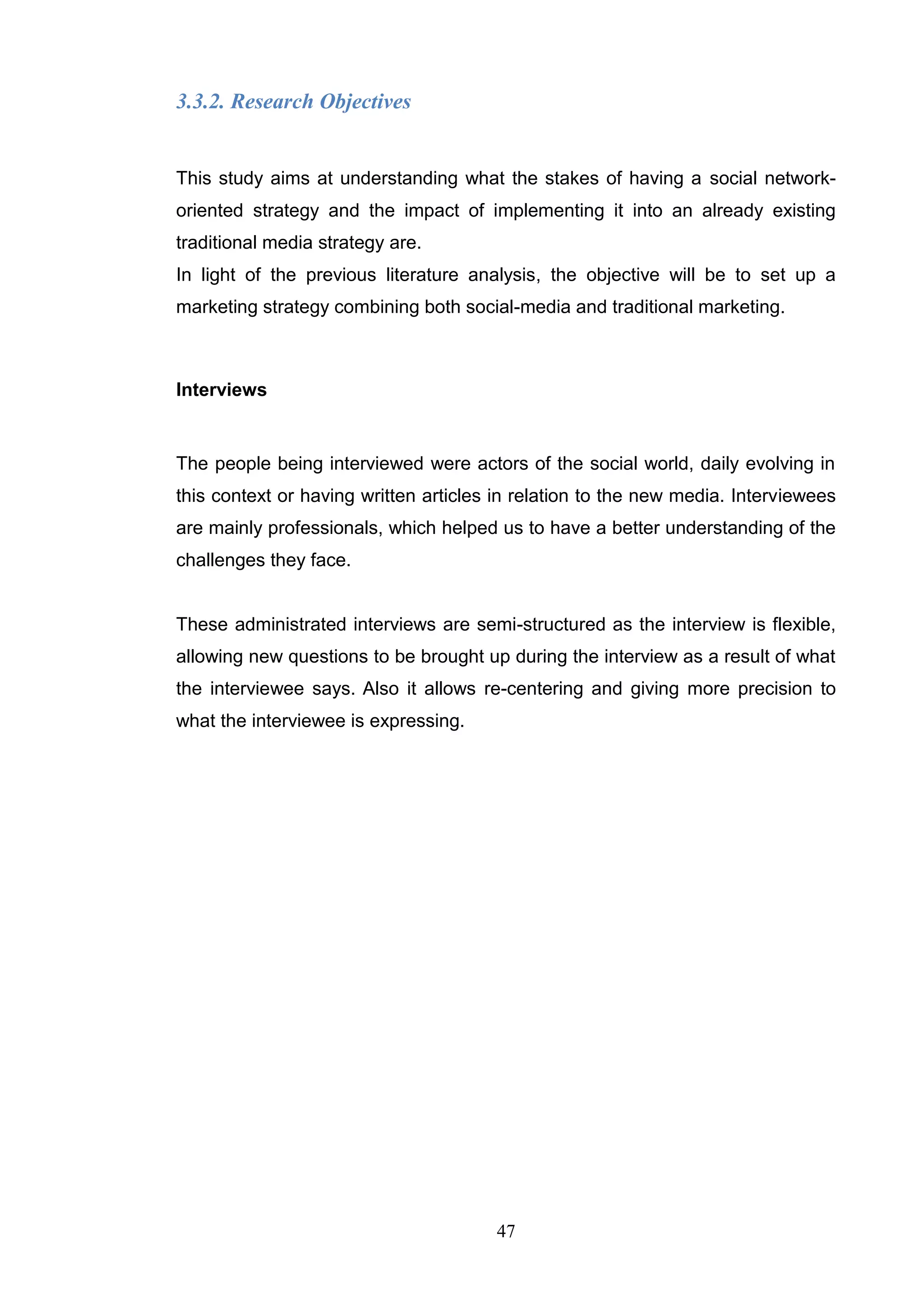
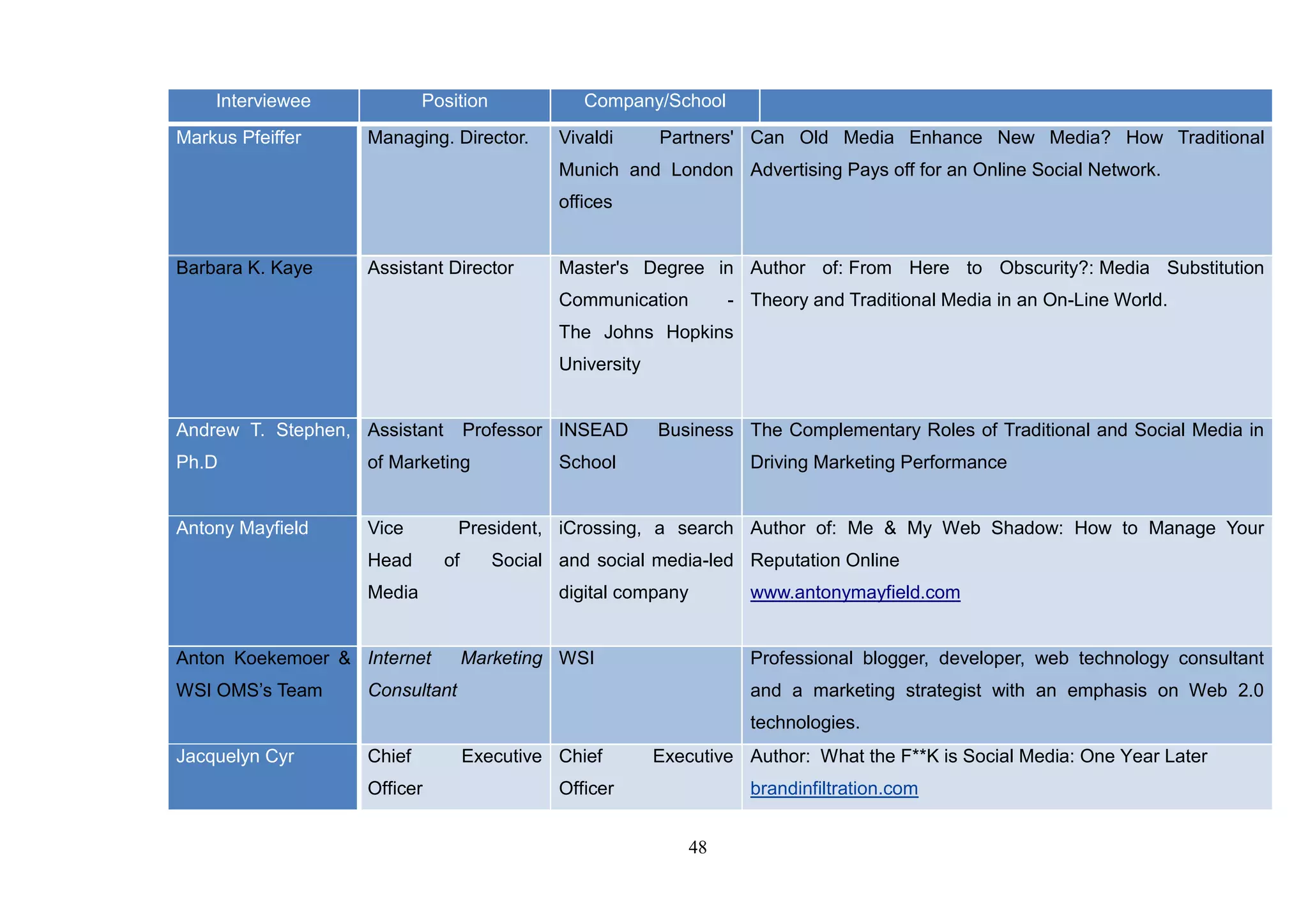
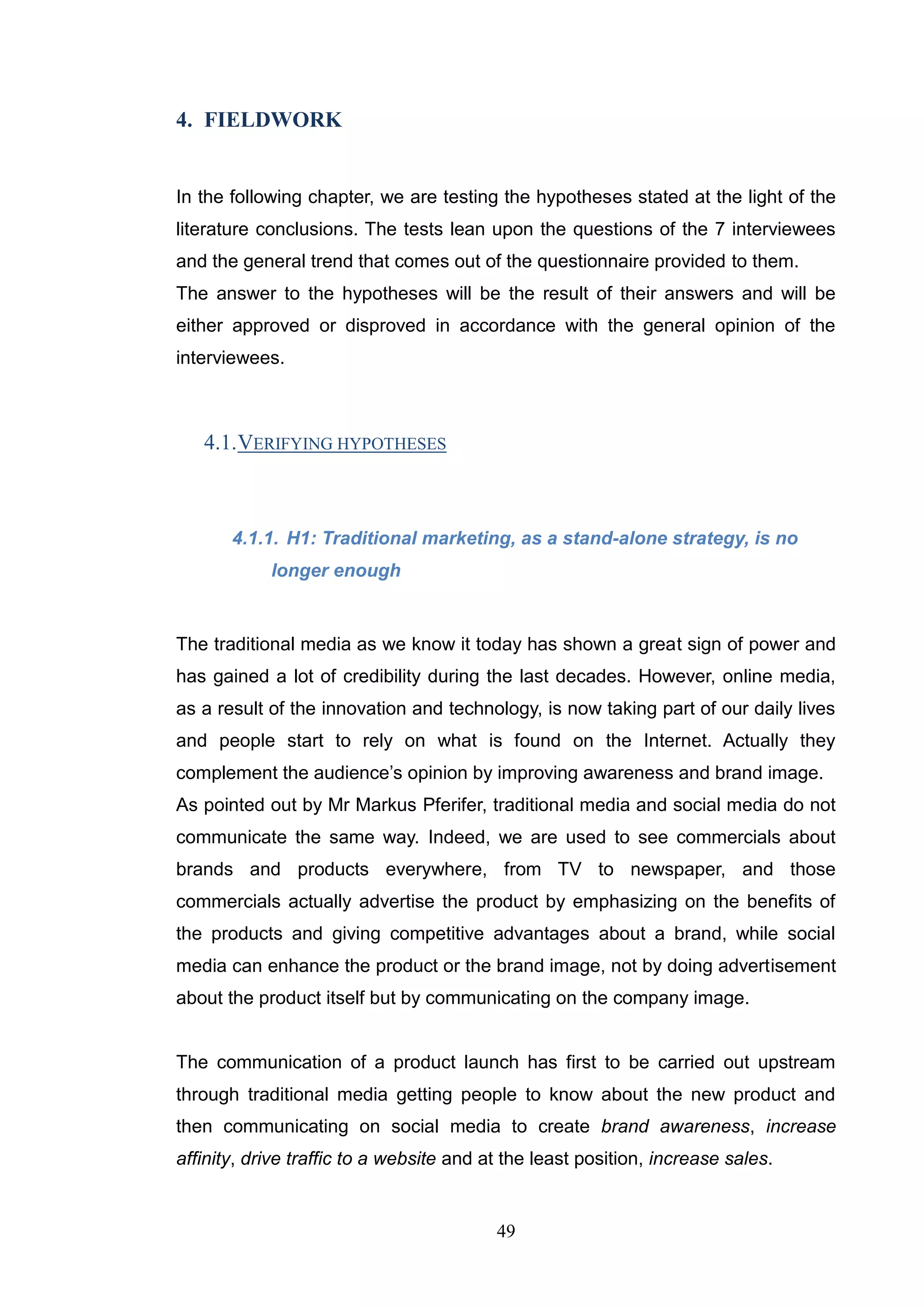
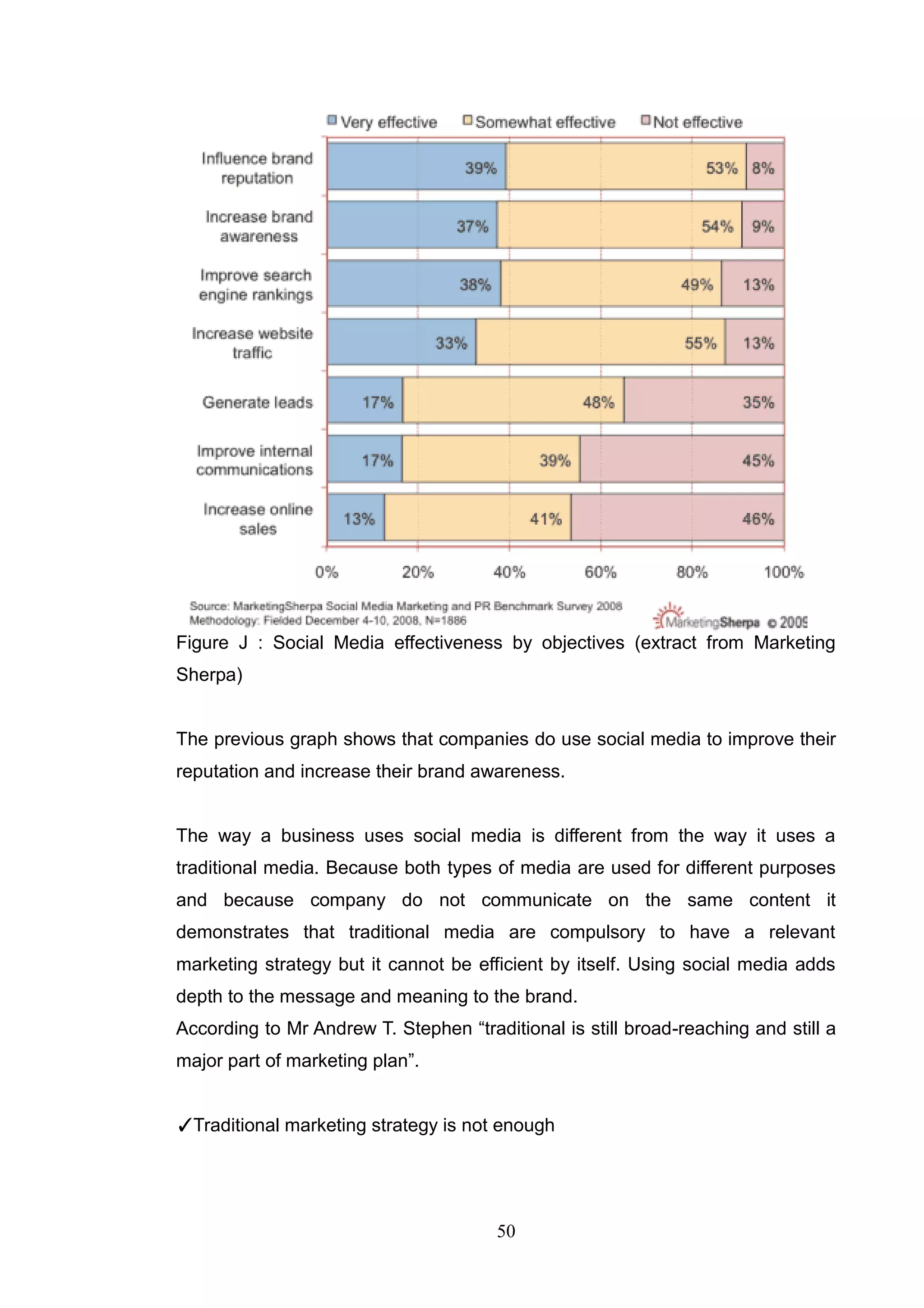
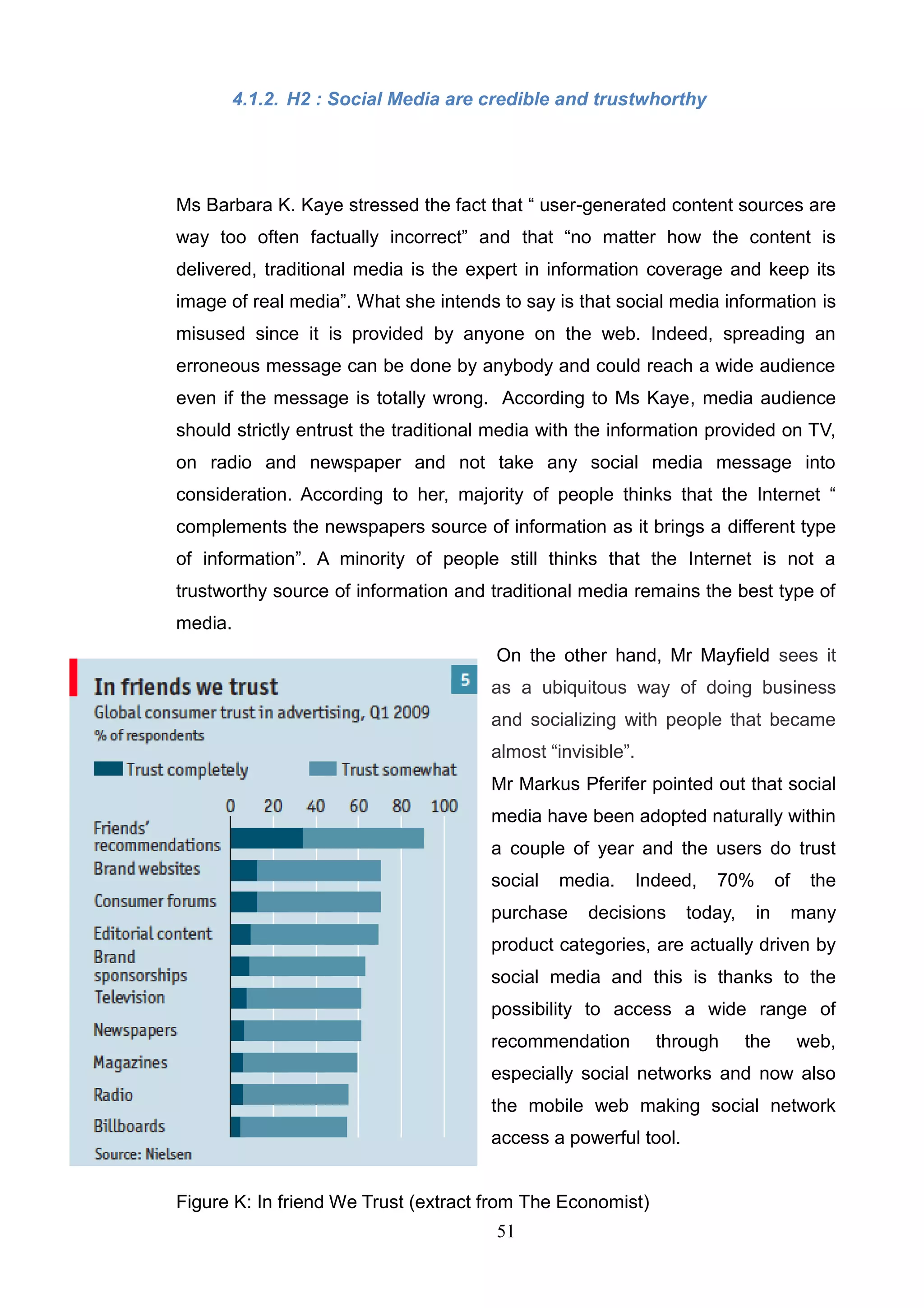
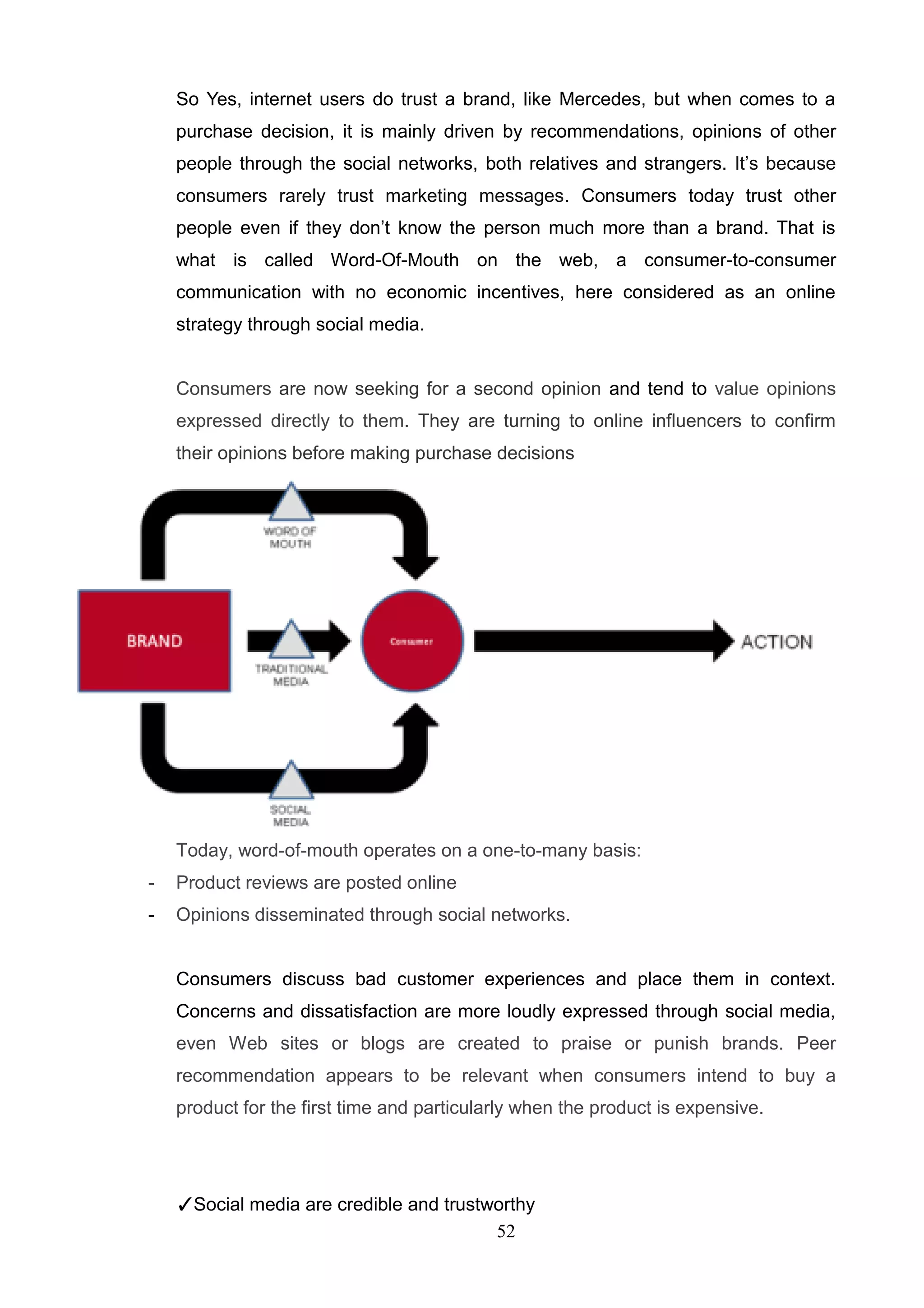
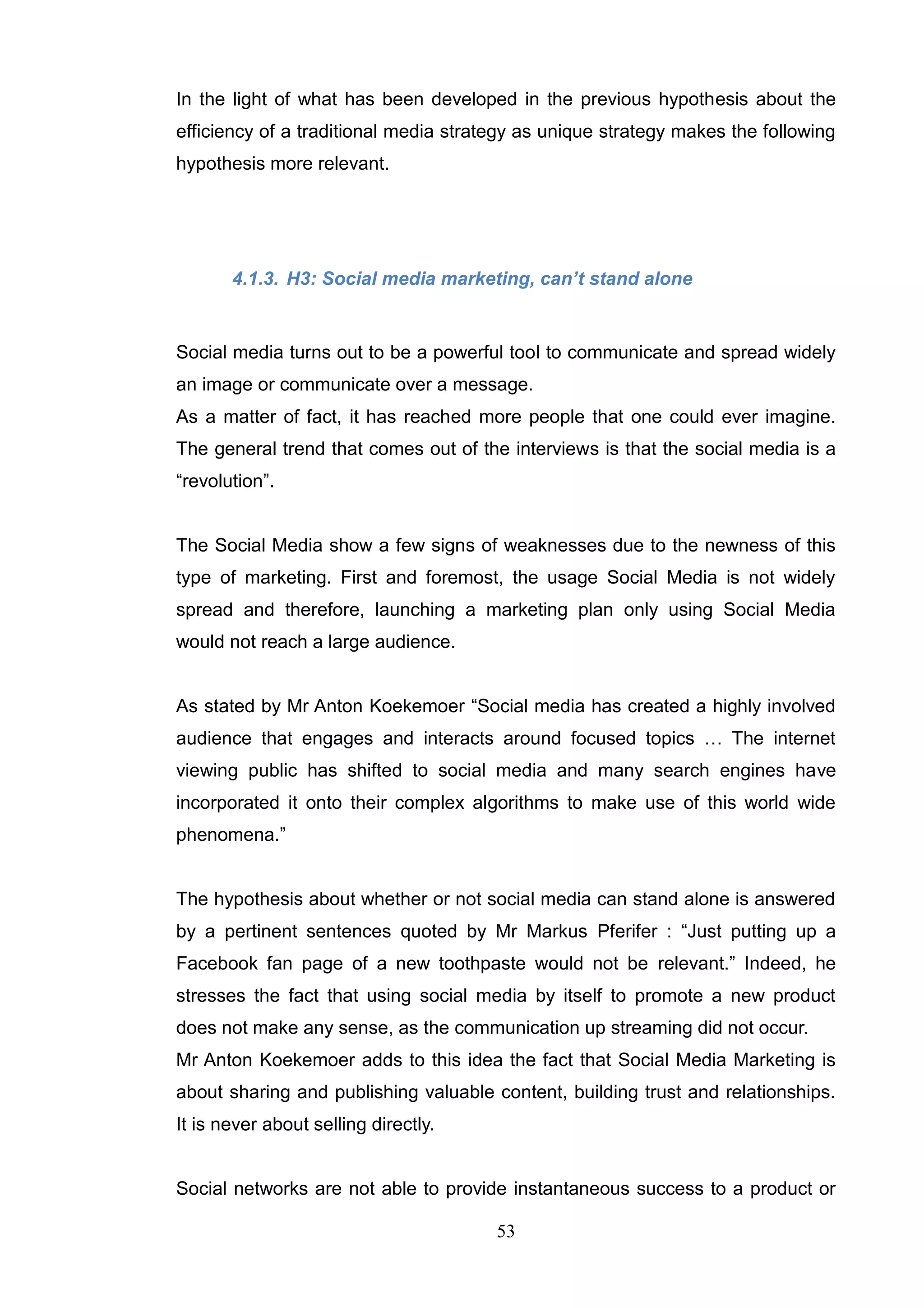
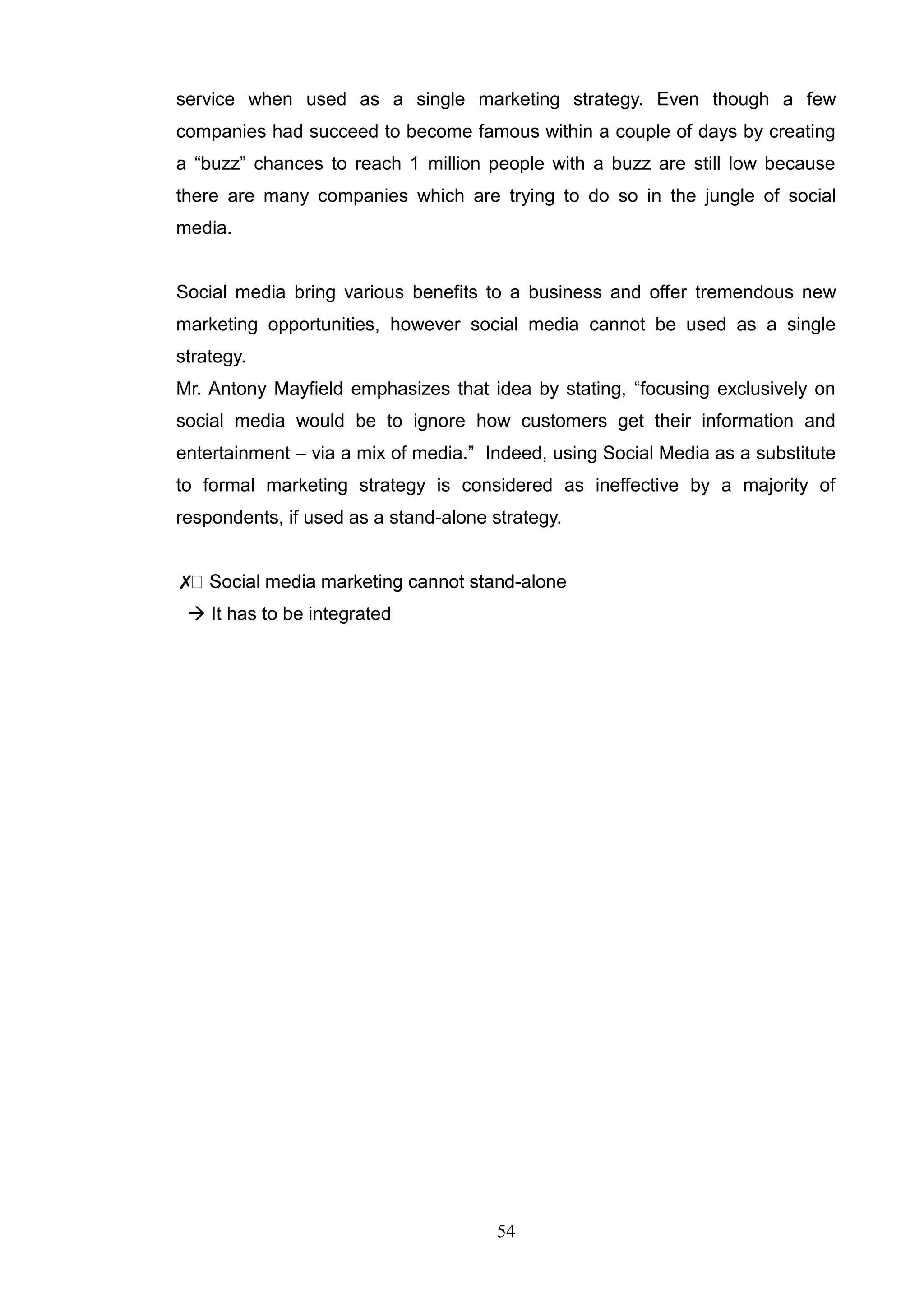
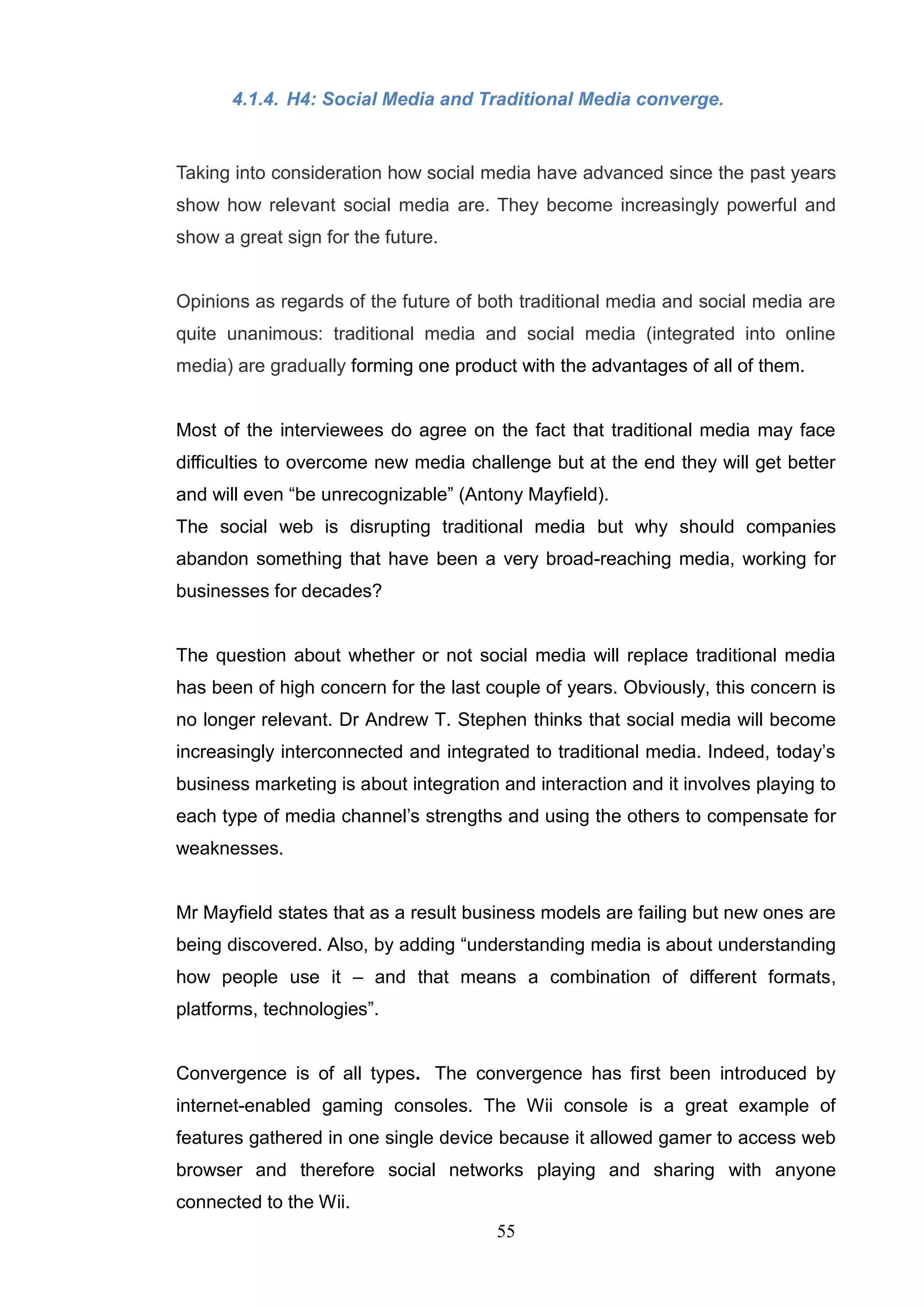


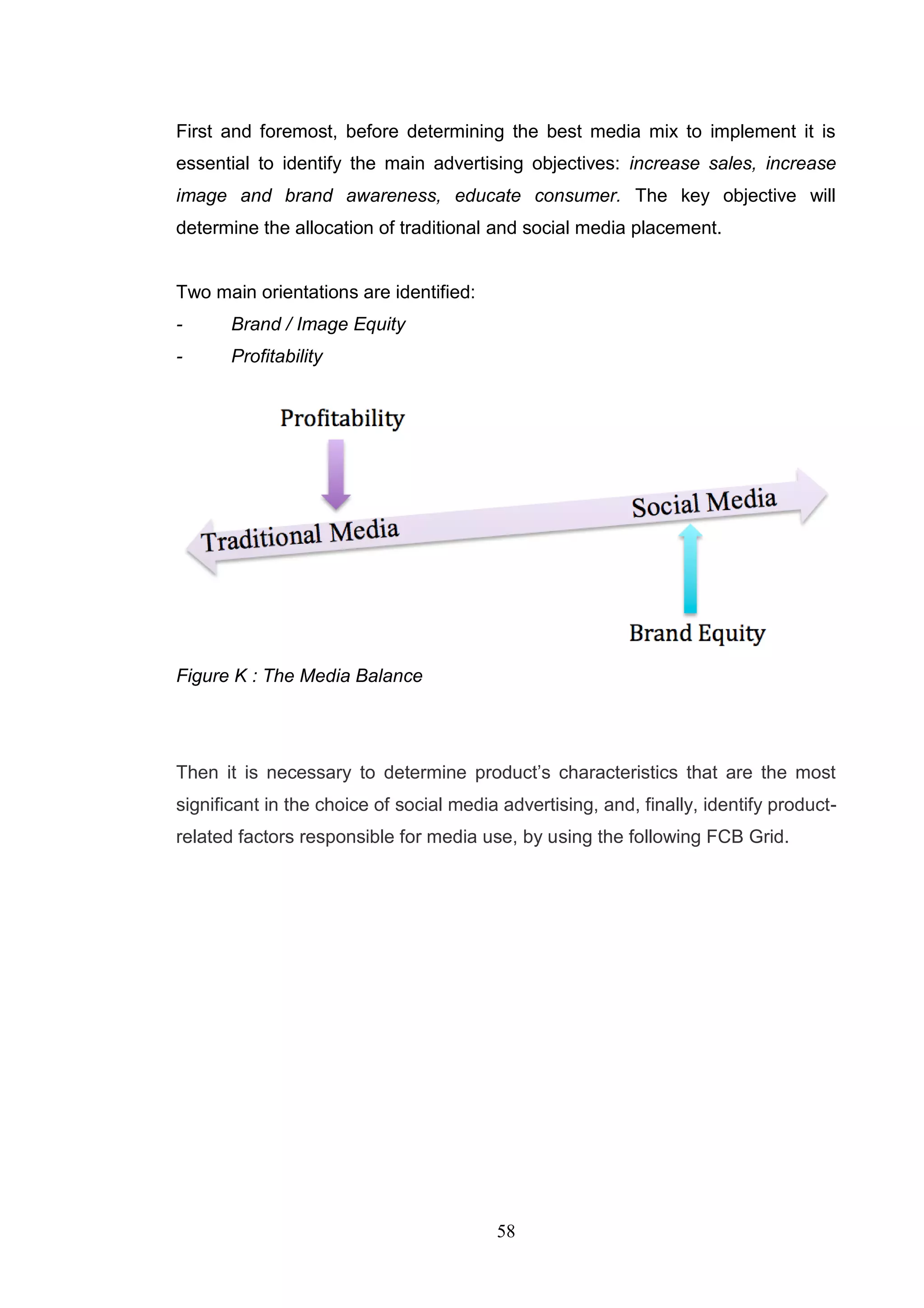

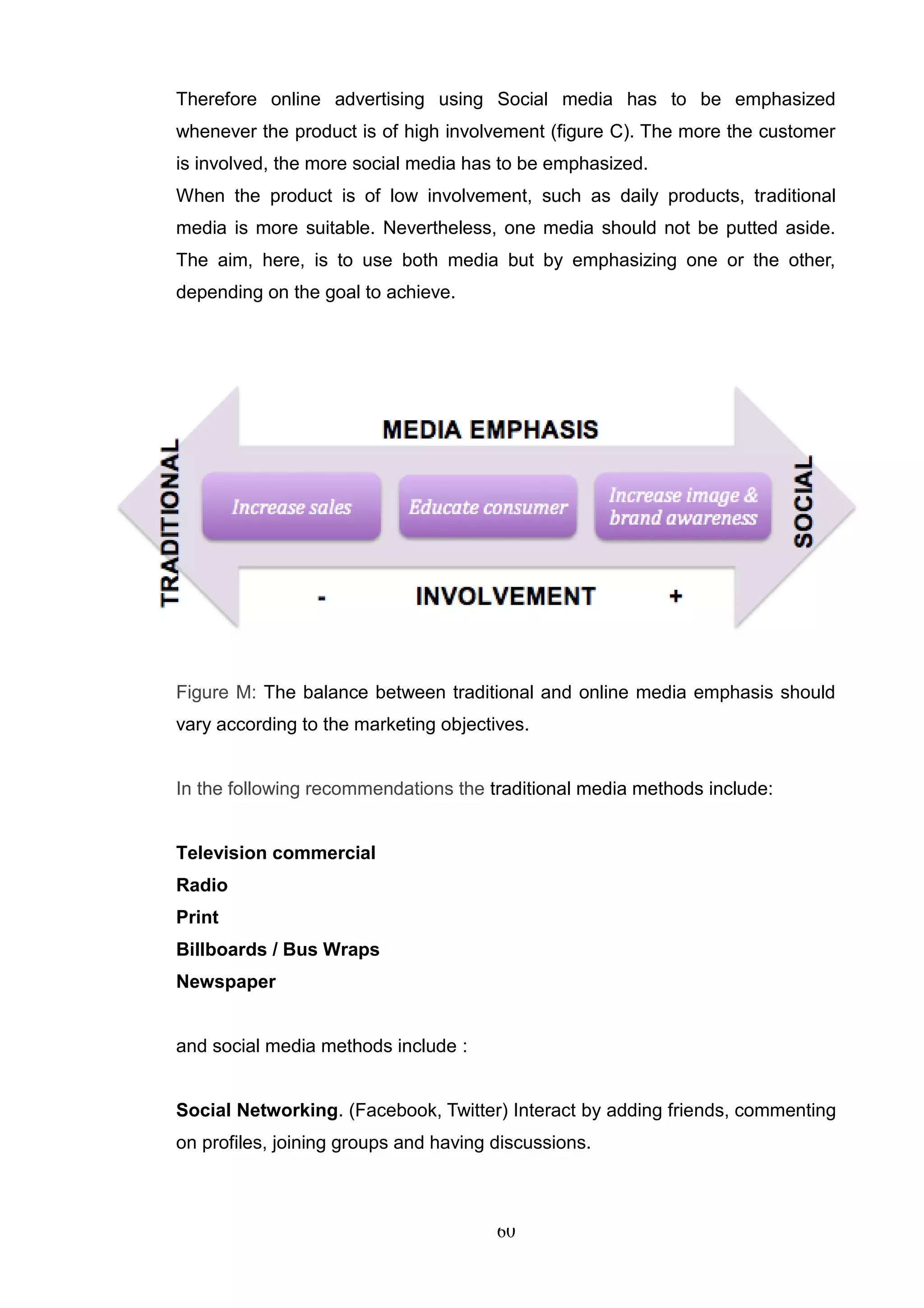
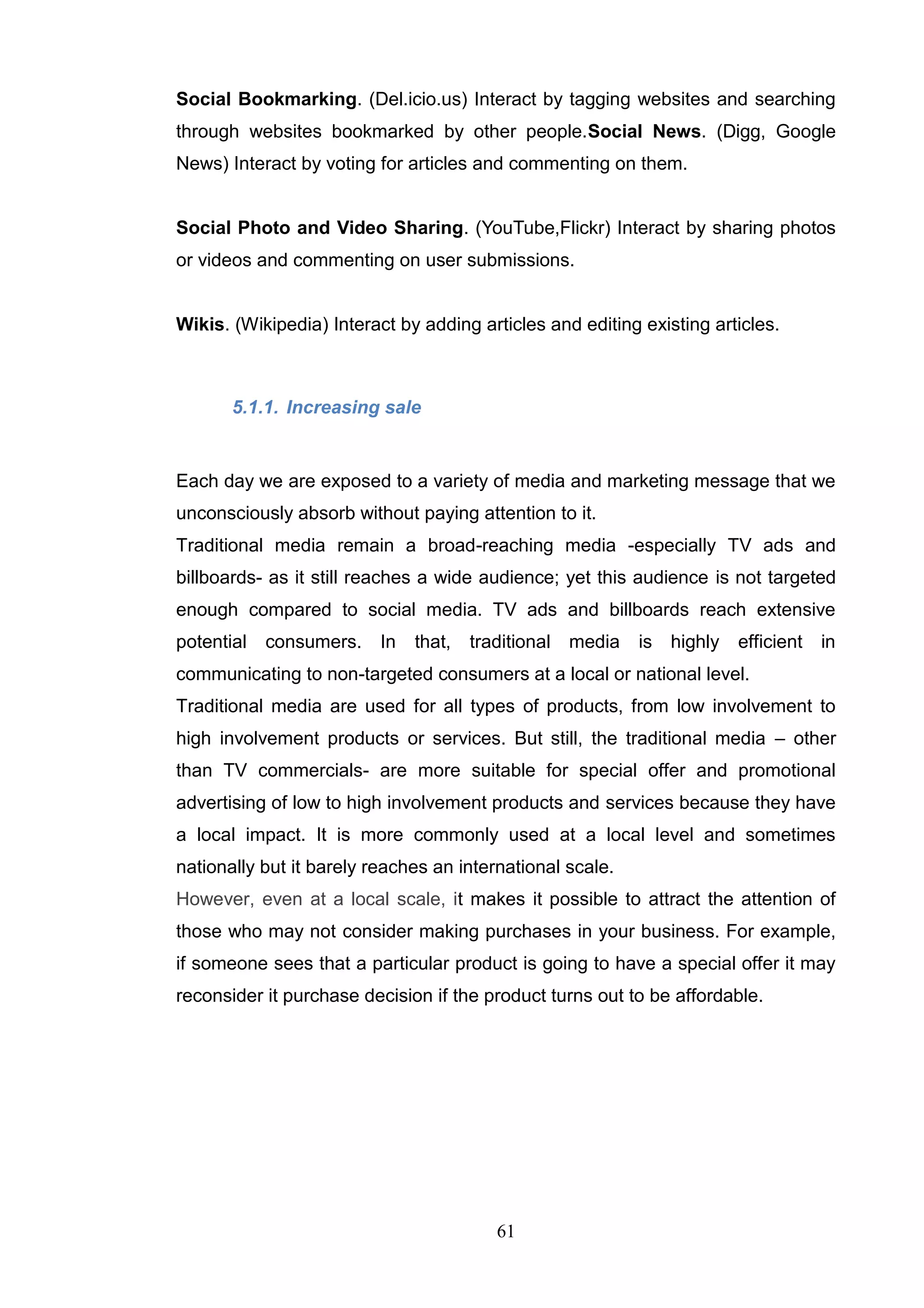


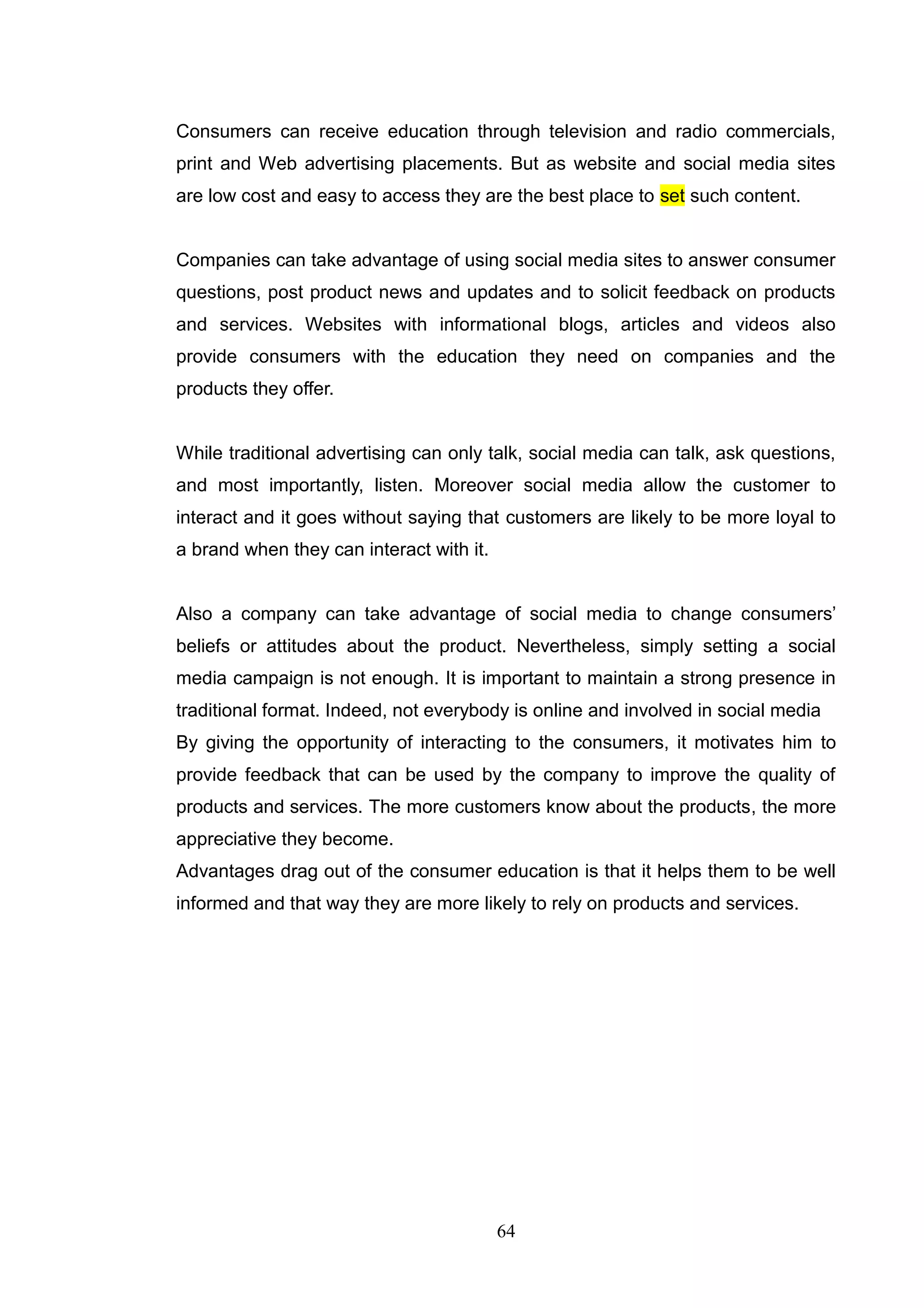
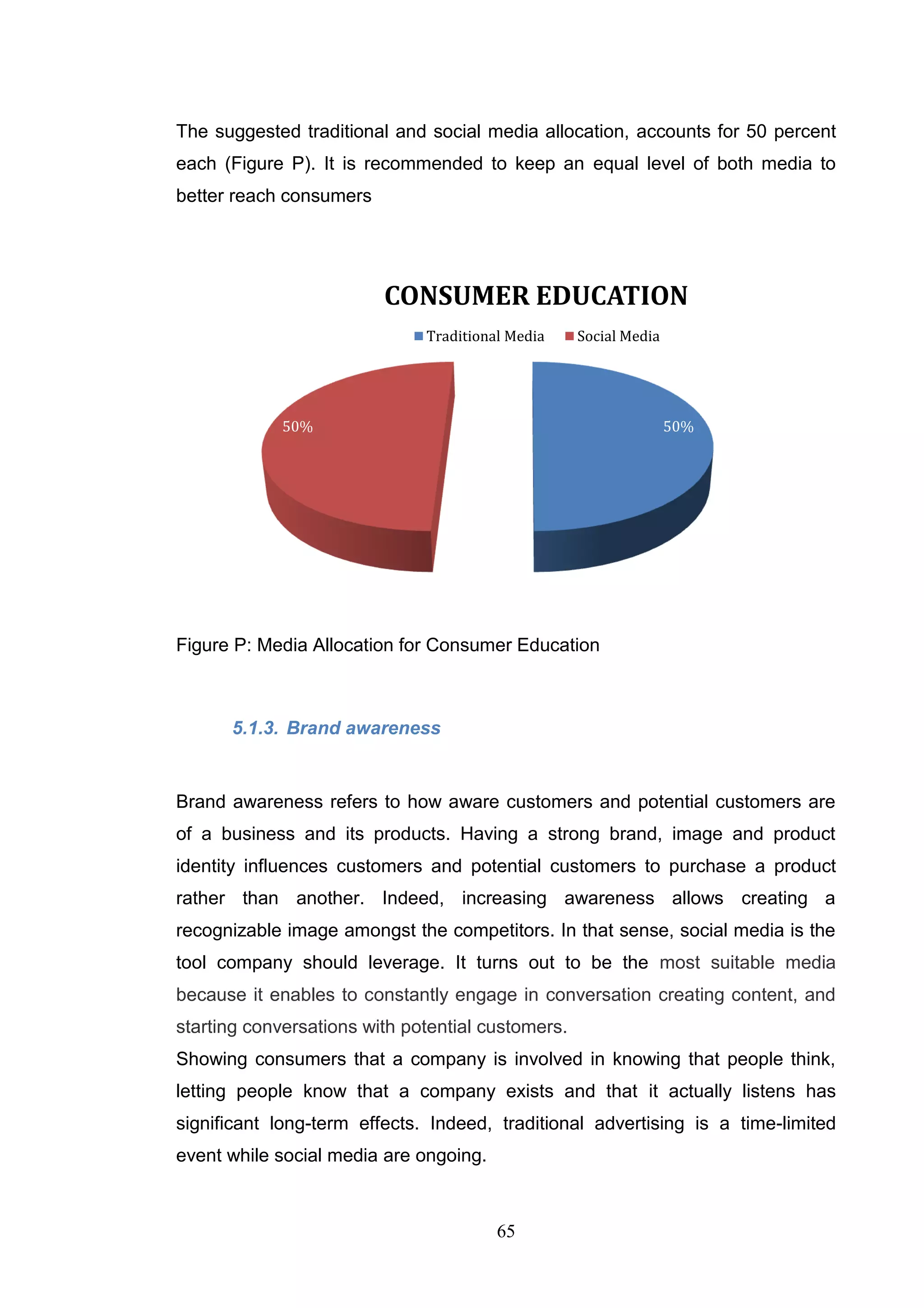
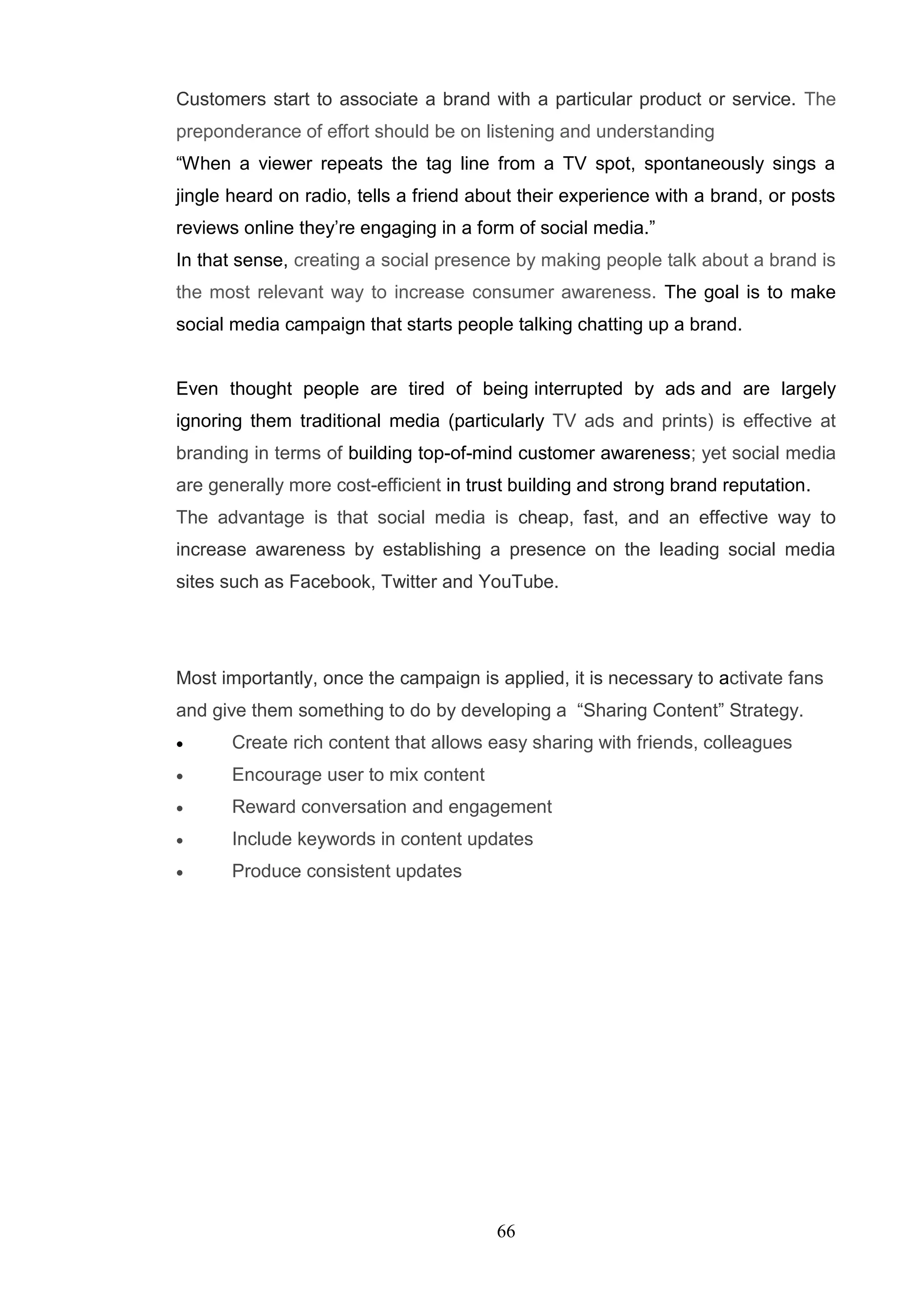
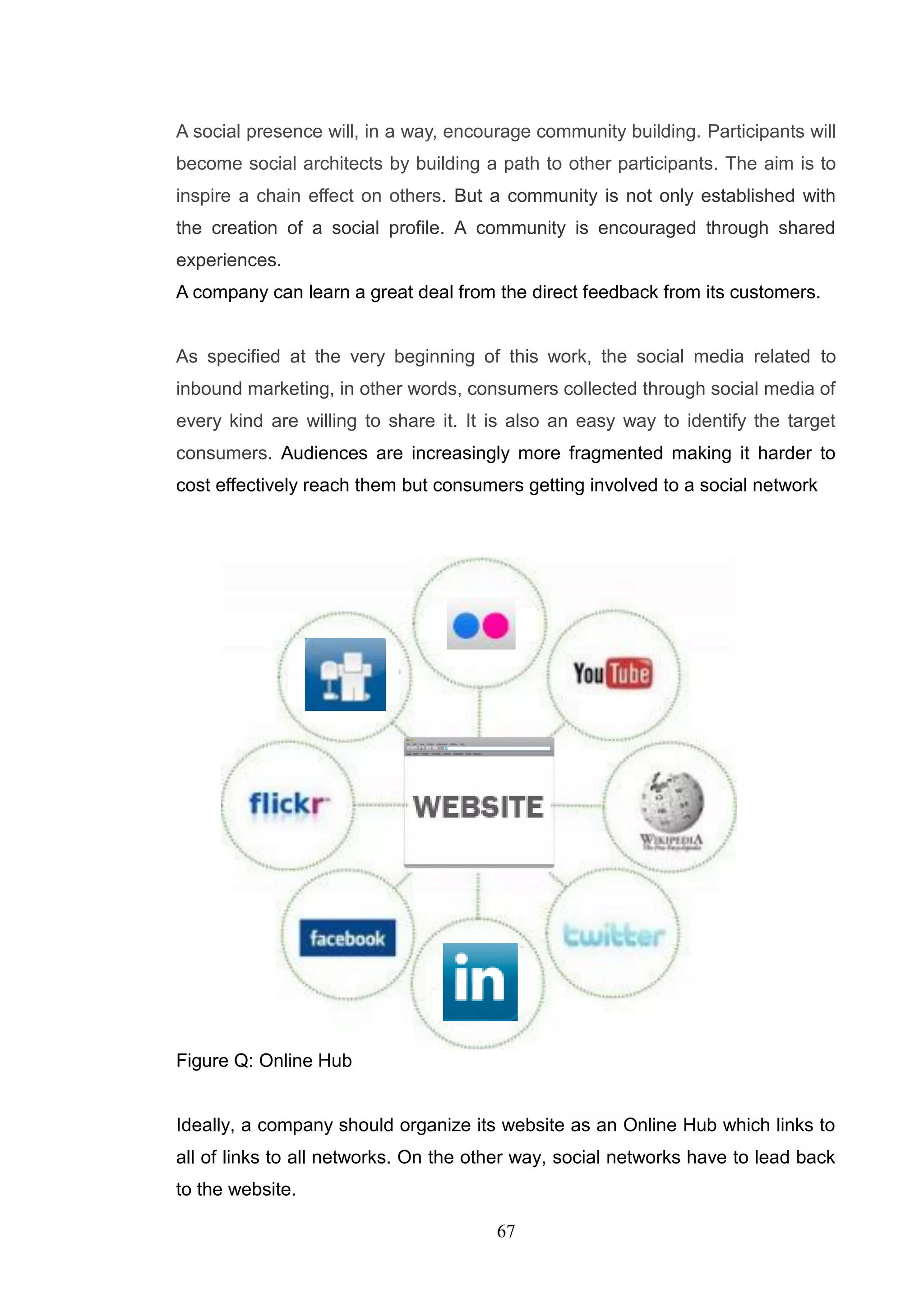
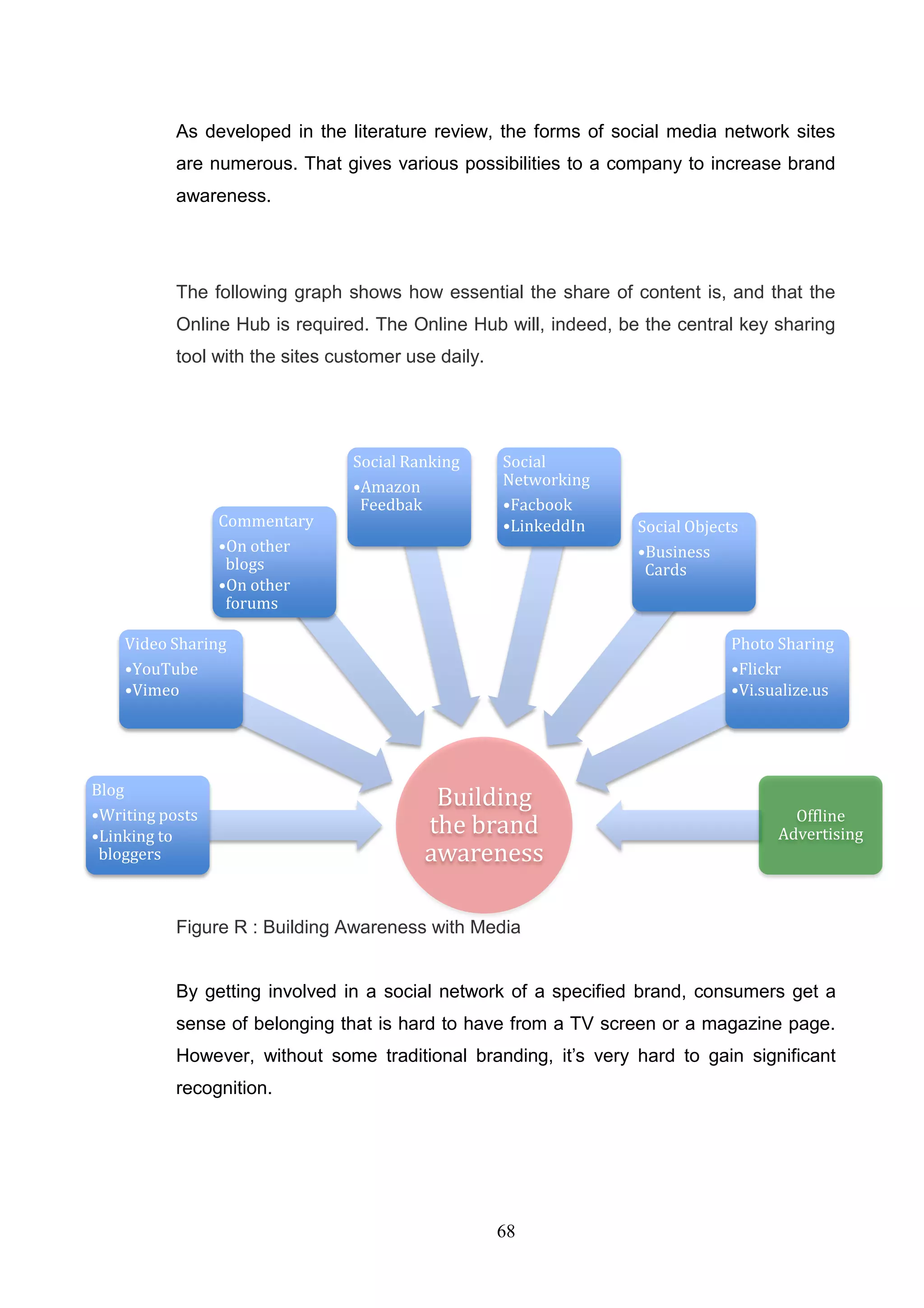

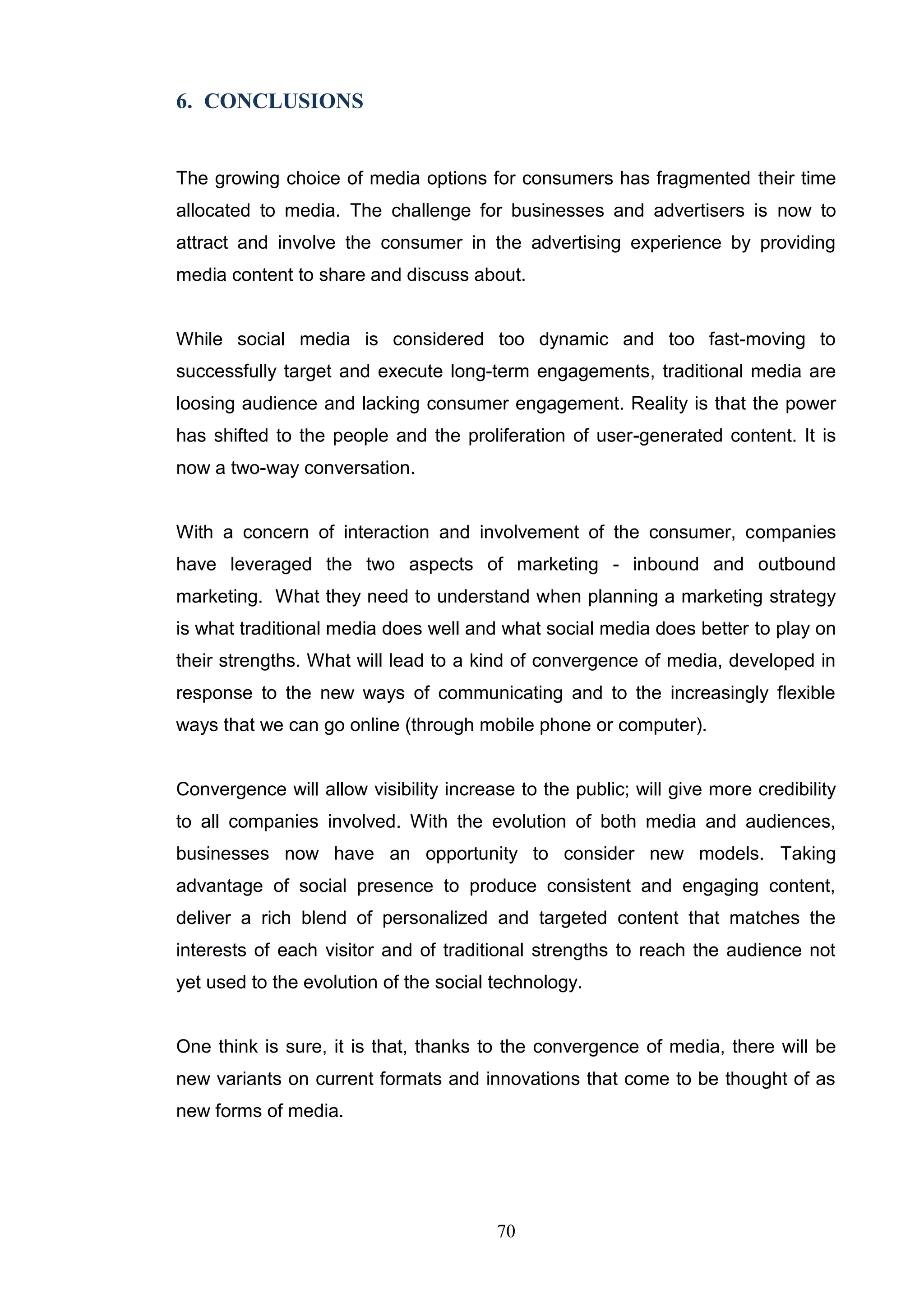
![7. BIBLIOGRAPHY
Media Studies Definition, 2010 [online] Available at:
< http://www.suite101.com/content/media-studies-a21529#ixzz10WieKksv >
[Accessed July 18, 2010].
Inbound Marketing: Get Found Using Google, Social Media,
and Blogs (New Rules Social Media Series)
B. Halligan, D. Shah (Author), 2010 . John Wiley & Son Inc. New Jersey
(A Comprehensive Analysis of Permission Marketing, 2001) 2010 [online]
Available at: http://jcmc.indiana.edu/vol6/issue2/krishnamurthy.html [Accessed
September 18, 2010].
What are traditional media?
Beth Lane, Whatis Mass Media?, 2007 [online] Available at: <
http://www.suite101.com/content/what-is-mass-media--a23017 > [Accessed
July 11 September 2010 ]
Michael R. Peres, 2007 ―The Focal encyclopedia of photography: digital
imaging, theory and applications, history, and science‖
Converging Media Trends, 2010
http://iml.jou.ufl.edu/projects/Spring03/Mallard/advantages.html
Boyd, D. M., & Ellison, N. B. (2007). Social Network Sites: Definition, History,
and Scholarship. Journal of Computer-Mediated Communication, 13 ,
http://jcmc.indiana.edu/vol13/issue1/boyd.ellison.html.
What is social media?
Antony Mayfield, What is Social Media? [pdf] Available at: <
www.antonymayfield.com/2006/09/27/social-media-ebook/ > Accessed 11
71](https://image.slidesharecdn.com/estevescarinem2mdiethseprofessionelle-121212085421-phpapp01/75/What-is-the-best-approach-to-integrate-Traditional-Media-and-Social-Media-into-a-single-strategy-72-2048.jpg)
![September 2010 ]
Ryan Walker, 2008 ―Social Media Ad Metrics Definitions‖ [pdf] Available at: <
http://www.gradsch.wsu.edu/Documents/PDF/Social-Media-Metrics-Definitions-
0509.pdf > [Accessed 11 September 2010 ]
7 things you should know about …Wikis, 2005 [pdf]] Available at: <
http://www.net.educause.edu/ir/library/pdf/ELI7004.pdf > [Accessed 11
September 2010 ]
7 things you should know about…Podcasting, 2005, [pdf] Available at: <
http://www.net.educause.edu/ir/library/pdf/ELI7003.pdf > [Accessed 11
September 2010 ]
7 Things You Should Know About Micro blogging, 2009, [pdf] Available at: <
http://www.net.educause.edu/ir/library/pdf/ELI7051.pdf > [Accessed 11
September 2010 ]
Factors affecting the choice of media
Carr, H.H. and Snyder, C.A. (1997), The Management of Telecommunications,
Irwin, Chicago,IL.
The complementary relationship between the Internet and traditional mass
media: the case of online news and information, An Nguyen, Mark Western; Vol.
11 No. 3, April 2006 (available at < http://informationr.net/ir/11-3/paper259.html
>)
Yoon and Kim (2001) ―Is the Internet More Effective Than Traditional Media?
Factors Affecting the Choice of Media‖, Journal of Advertising Research,
November 01, 2001 : 53-60
So, are Media and Product Characteristics related?
72](https://image.slidesharecdn.com/estevescarinem2mdiethseprofessionelle-121212085421-phpapp01/75/What-is-the-best-approach-to-integrate-Traditional-Media-and-Social-Media-into-a-single-strategy-73-2048.jpg)
![FINN, ADAM, "Print Ad Recognition Readership Scores: An Information
Processing Perspective," Journal of Marketing Research 25, 2 (1988): 168-77,
KATZ, DANIEL, "The Functional Approach to the Study of Attitudes," Public
Opinion Quarterly 24, 2 (1960): 163-91,
KRUGMAN, HERBERT E, "The Impact of Television Advertising: Learning
Without Involvemerit." Public Opinion Quarterly 29, 3 (1965) : 349-56,
BEZJIAN-AVERY, ALEXA, BOBBY CALDER, and DAWN IACOBUCCI, "New
Media Interactive Advertising Vs, Traditional Advertising," Journal of Advertising
Research 38, 4 (1998): 23-33,
CLAWSON, PAT, "Study: Consumers Want Interactive TV," Electronic Media
August 23, 1993.
Media Substitution Theory
Nie, N., & Ebring, L. (2000). Study offers early look at how Internet is changing
daily life. [On-line] Available:
www.stanford.edu/dept/news/pr/00/000216internet.html
Lin, C.A. (2001a). Audience attributes, media supplementation, and likely online
service adoption. Mass Communication & Society, 4, 19-38.
Lin, C.A. (2001b, August). Online use activity and user gratification
expectations. Paper presented at the Association for Education in Journalism
and Mass Communication, Washington.
Barbara K. Kaye, Thomas J. Johnson, From Here to Obscurity?: Media
Substitution Theory and Traditional Media in an On-line World - , Journal of the
American Society for Information Science and Technology, 54(3):260-273, 2003
| pages 260 |
73](https://image.slidesharecdn.com/estevescarinem2mdiethseprofessionelle-121212085421-phpapp01/75/What-is-the-best-approach-to-integrate-Traditional-Media-and-Social-Media-into-a-single-strategy-74-2048.jpg)
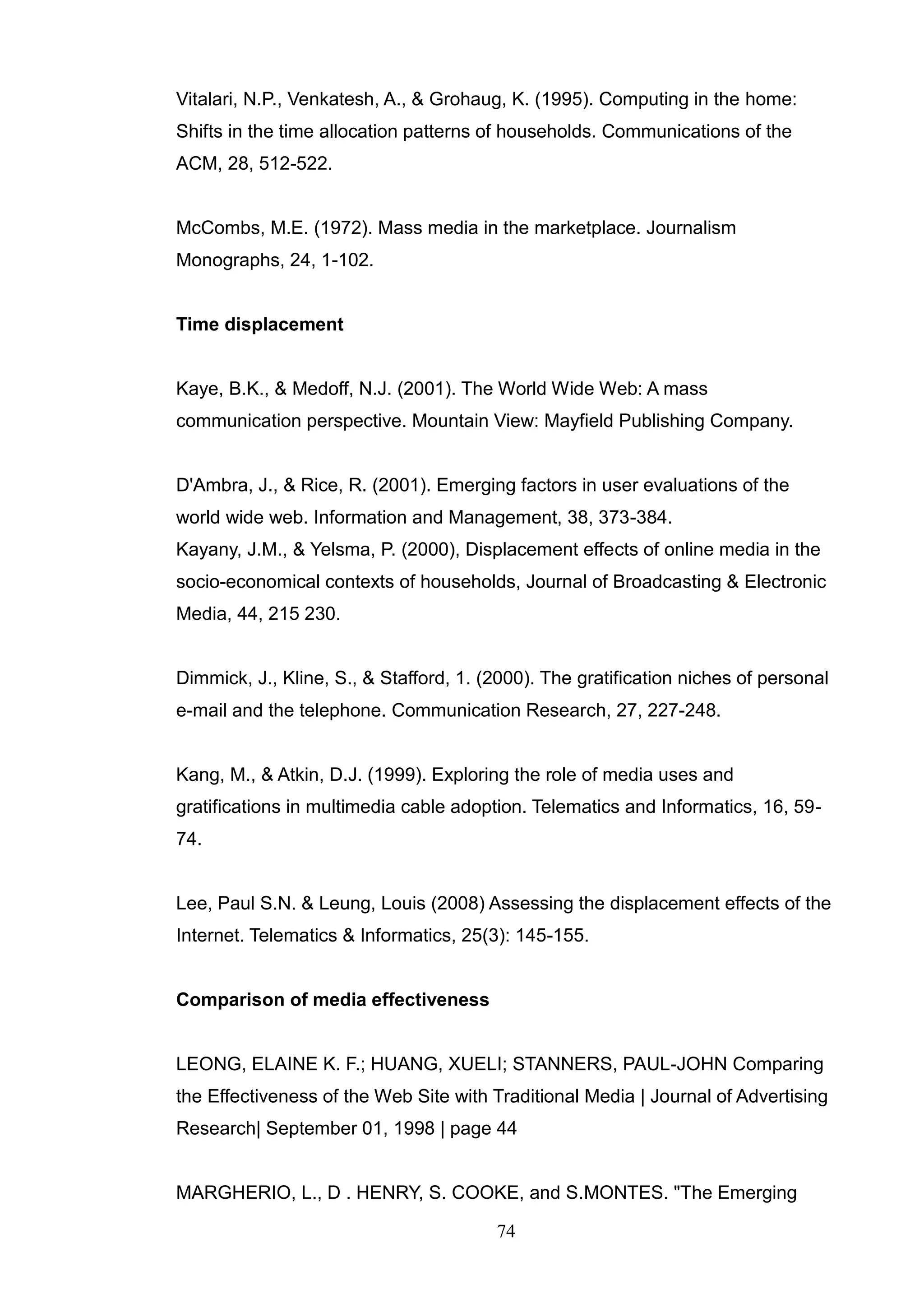
![Digital Economy." (on-line) Available: http://www.ecommerce-gov/danintro.htm
(Date of access: July 15, 1998.)
MERCHANT & PARTNERS PERTH. Advertising Media Information. Perth:
Marchant & Partners Perth—Australia Advertising Media Consultants, 1992.
BUSH, A. A., V. BUSH, and S. HARRIS. "Advertiser Perceptions of the Internet
as a Marketing Communications Tool." journal of Advertising Research 38, 2
{1998):17-28.
NEILSEN, J. "Why Advertising Doesn't Work on the Web." (on-line) Available:
http:// www.useit.com/alertbox/9709a (Date of access: 1/9/98.)
Ebay
eBay's Fall Campaign Includes TV Ads, 2007 [online] Available at:
< http://www.auctionbytes.com/cab/abn/y07/m09/i17/s02 > [Accessed 11
September 2010 ]
Google
Google Airs TV Ad During Super Bowl – But Why? , 2010 [online] Available at:
< http://searchengineland.com/hell-freezes-over-google-airs-super-bowl-a-
35476> [Accessed 11 September 2010 ]
Google Operating System, 2007 Google Using Traditional Advertising 2010
[online] Available at:
< http://searchengineland.com/hell-freezes-over-google-airs-super-bowl-a-
35476> [Accessed 11 September 2010 ]
Online Media and Search: The New Opportunity , 2007
www.fastsearch.com/Online_Media_and_Search_The_New_Opportunity_BlbJf.
pdf.file
OBAMA 08
75](https://image.slidesharecdn.com/estevescarinem2mdiethseprofessionelle-121212085421-phpapp01/75/What-is-the-best-approach-to-integrate-Traditional-Media-and-Social-Media-into-a-single-strategy-76-2048.jpg)
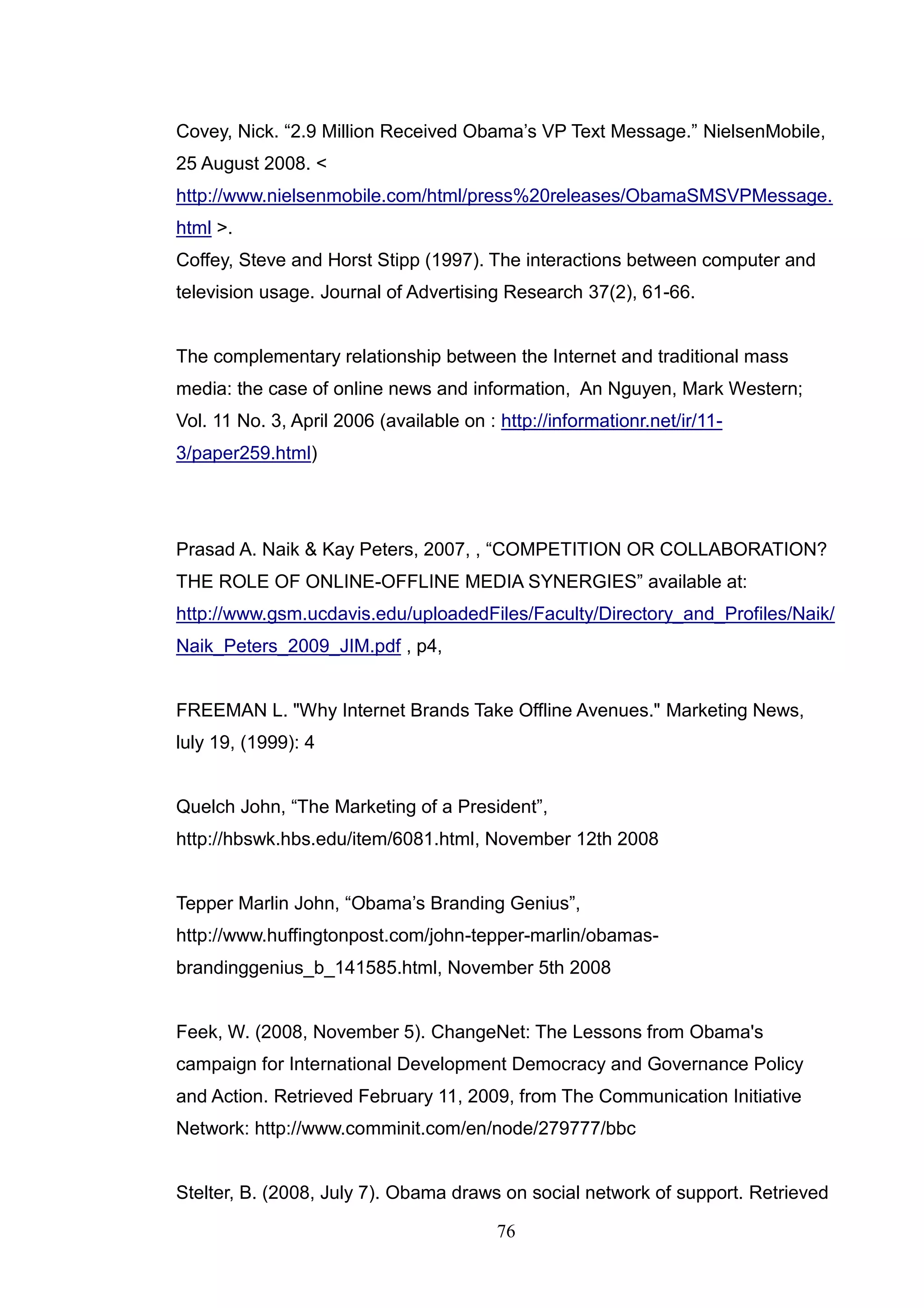
![January 12, 2009, from International Herald Tribune:
http://www.iht.com/articles/2008/07/06/business/hughes07.php
Lowry, Tom. BusinessWeek, 7/7/2008, Issue 4091, p056-057, 2p, 2
Borins, Sandford. International Journal of Public Administration, 2009, Vol. 32
Issue 9, p753-758, 6p;
Temporal Paul, ―Building brand Obama‖,
http://www.sbs.ox.ac.uk/Documents/bao/BusinessatOxfordWinter08.pdf,
November 6th 2008, page 21
Scott, David Meerman. EContent, May2010, Vol. 33 Issue 4, p40-40, 1p;
Introduction: How Candidates Can Use the Internet to Win in 2010, 2009)
Winning in 2010: Online Fundraising and Mobilization [online] Available at: <
http://techpresident.com/blog-entry/winning-2010-online-fundraising-and-
mobilization > [Accessed August 10, 2020].
77](https://image.slidesharecdn.com/estevescarinem2mdiethseprofessionelle-121212085421-phpapp01/75/What-is-the-best-approach-to-integrate-Traditional-Media-and-Social-Media-into-a-single-strategy-78-2048.jpg)
